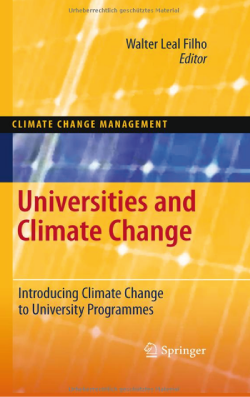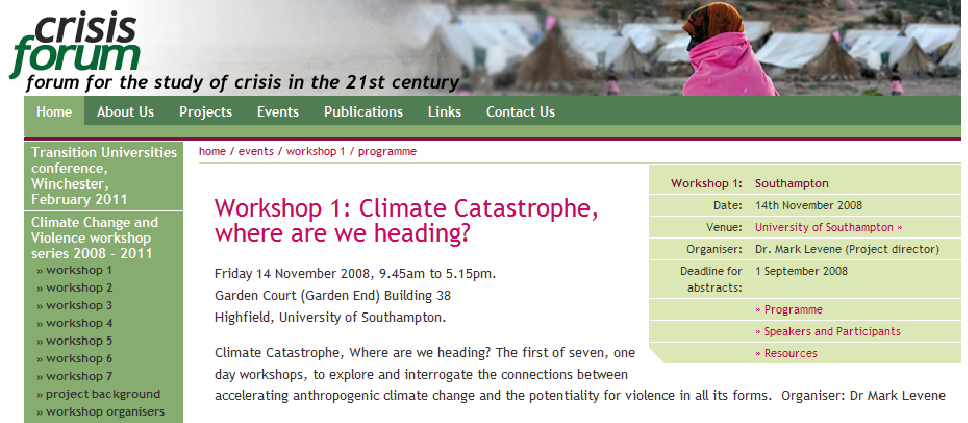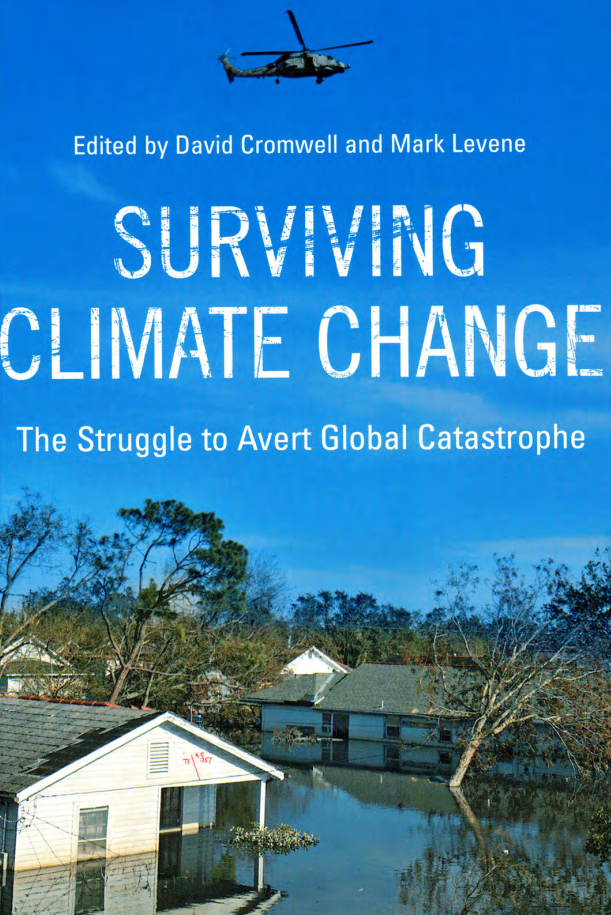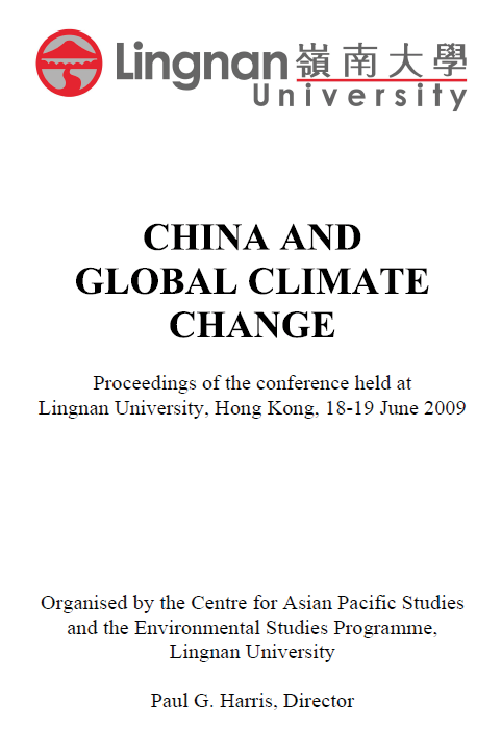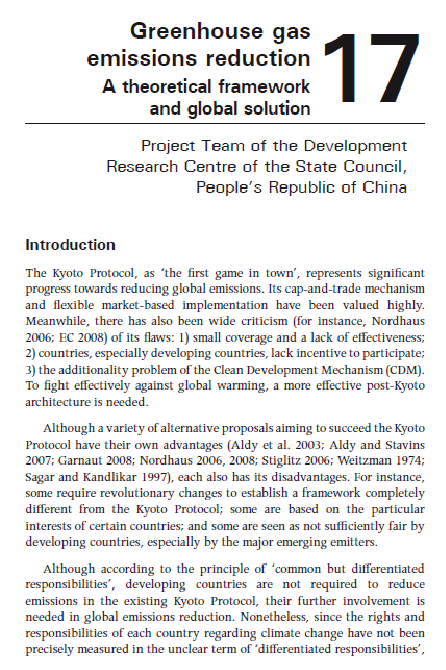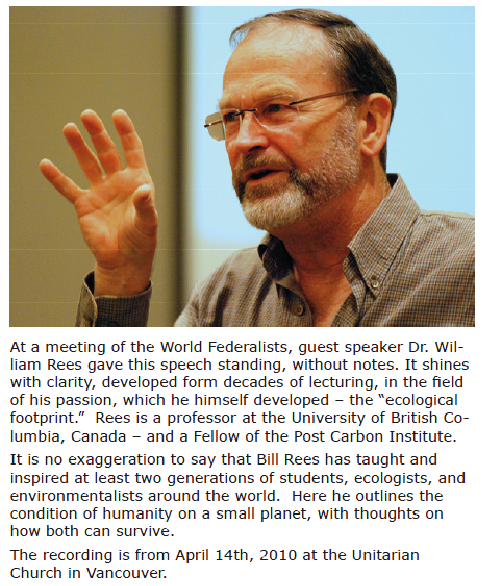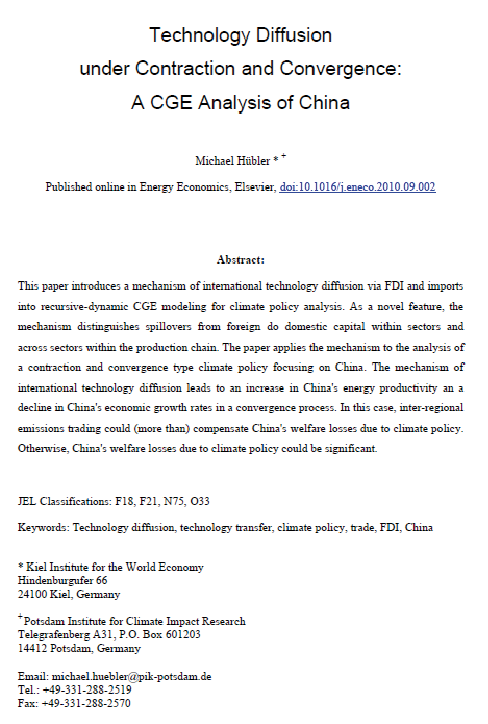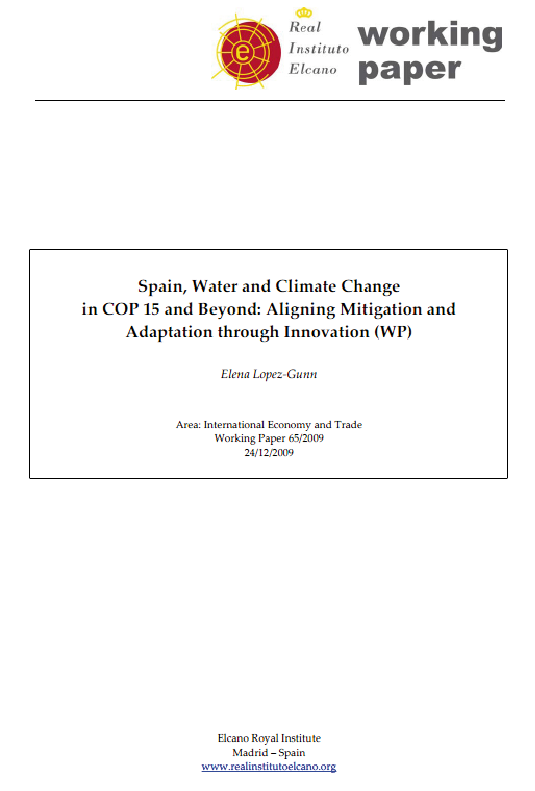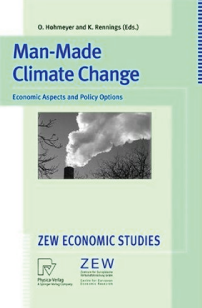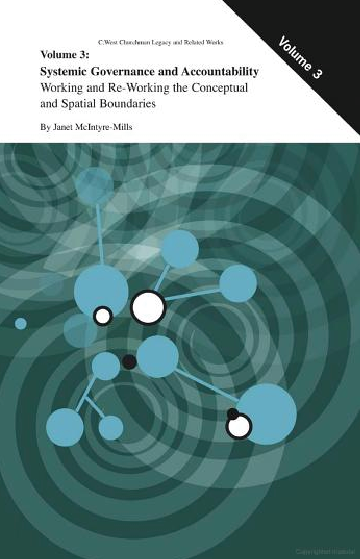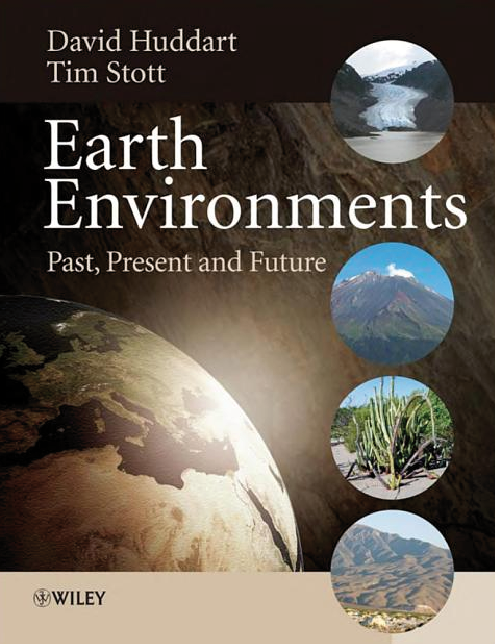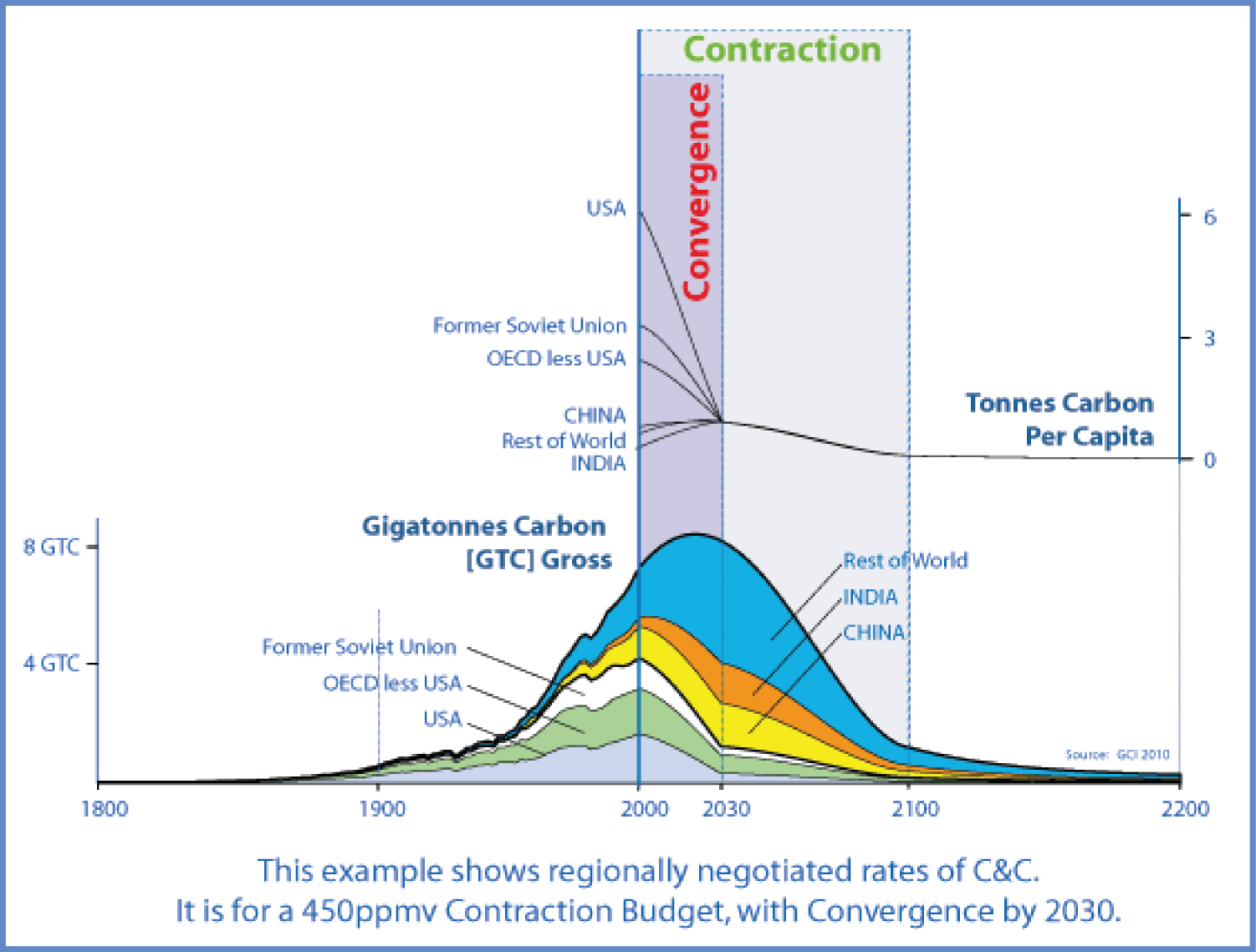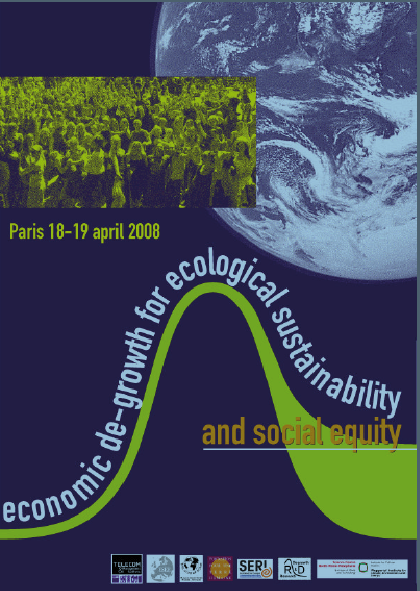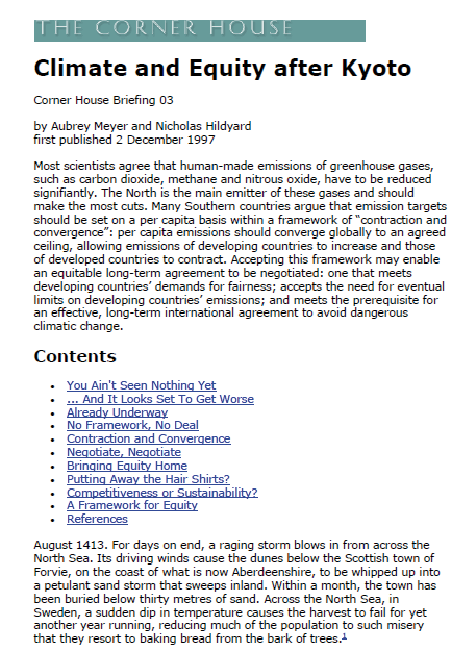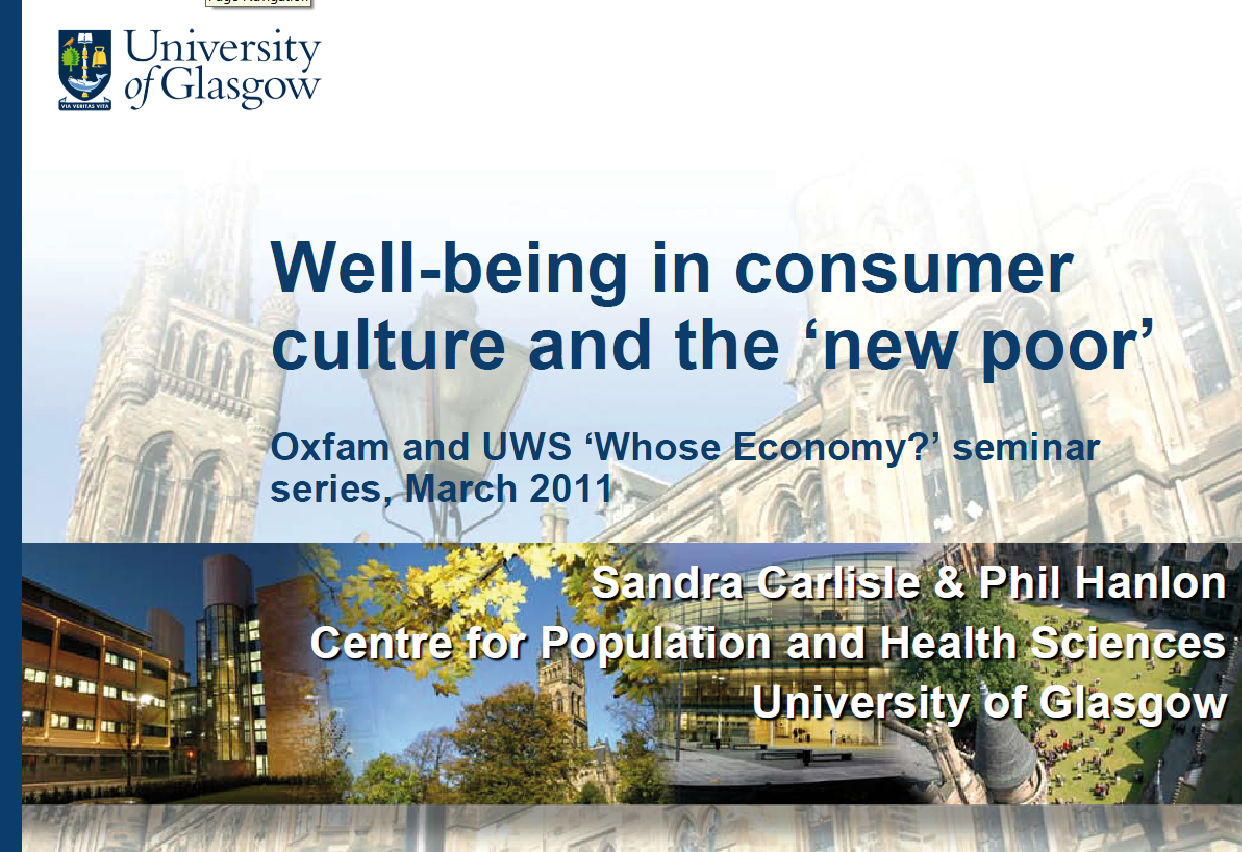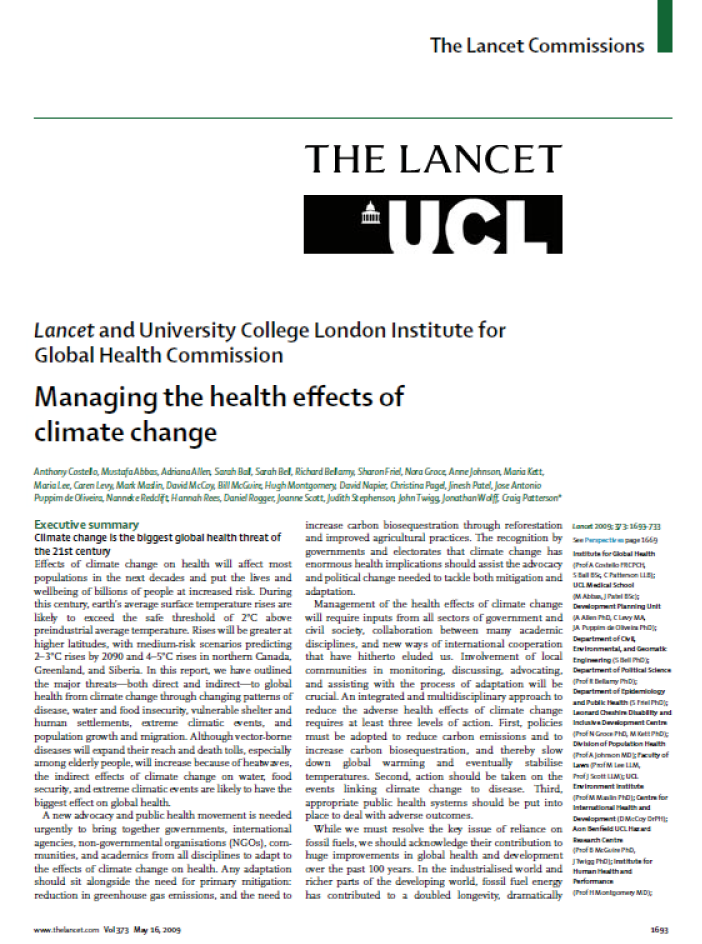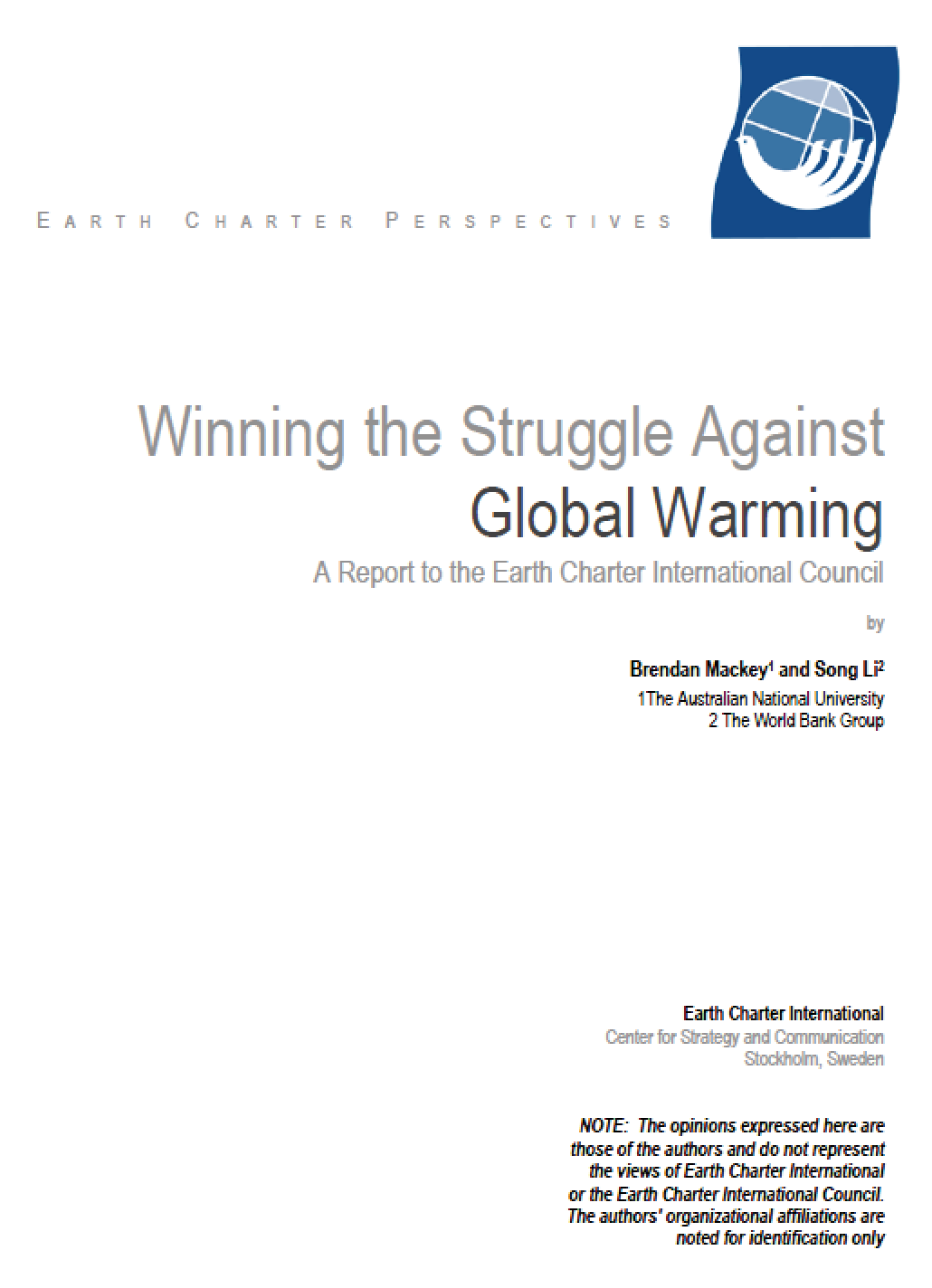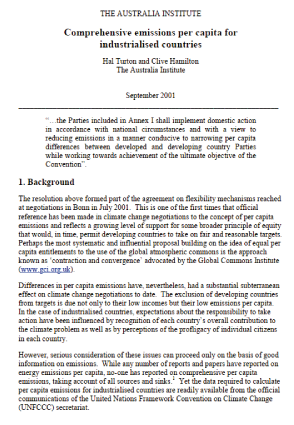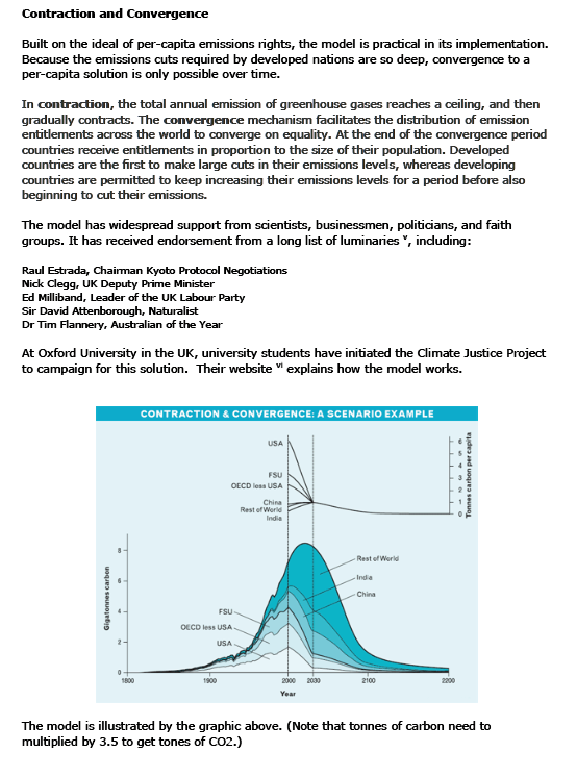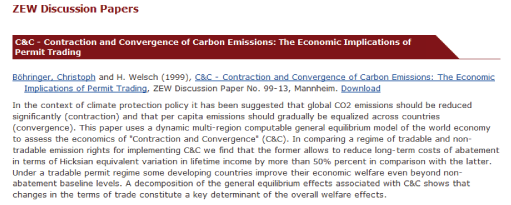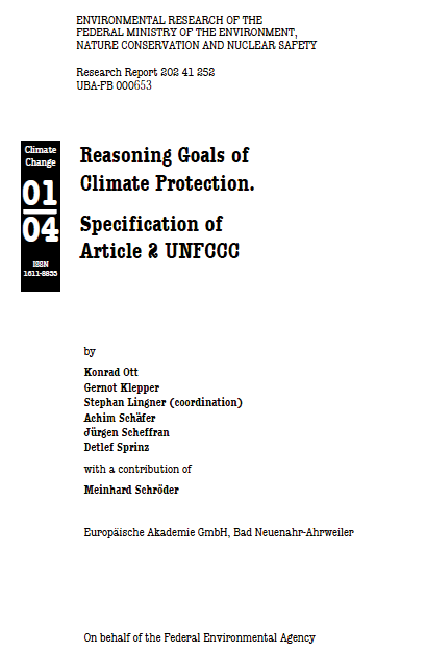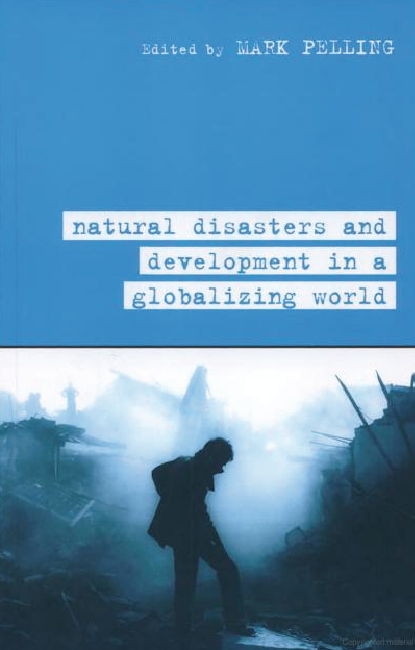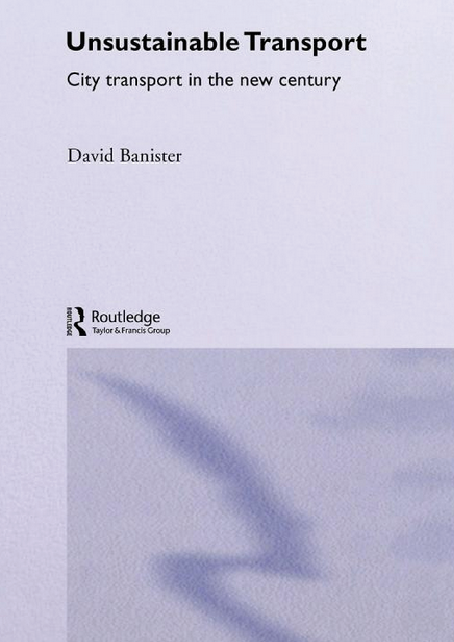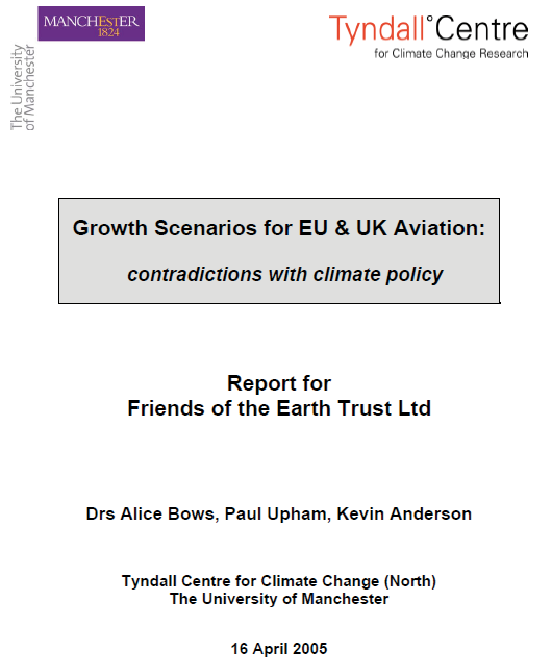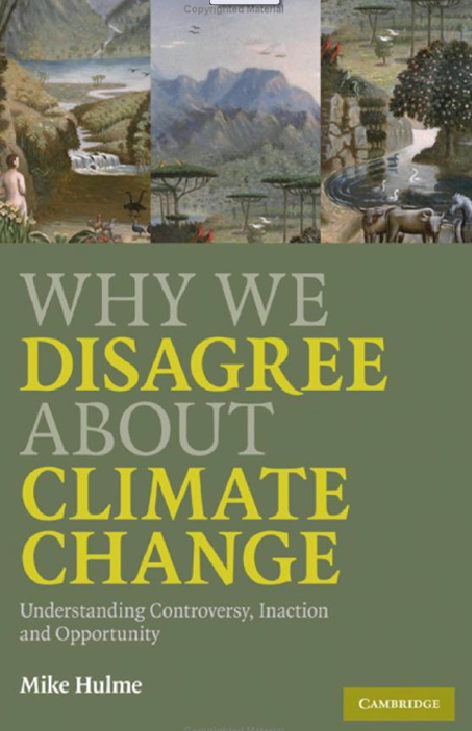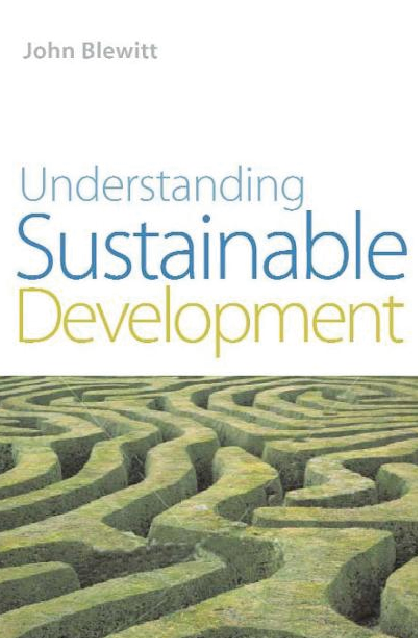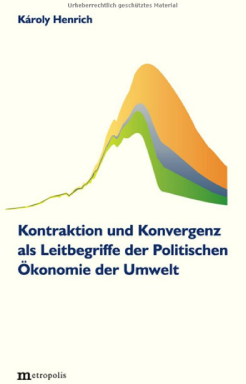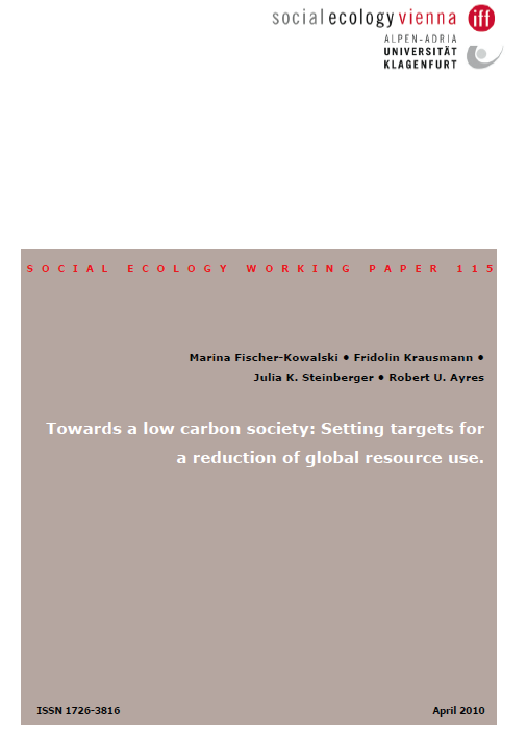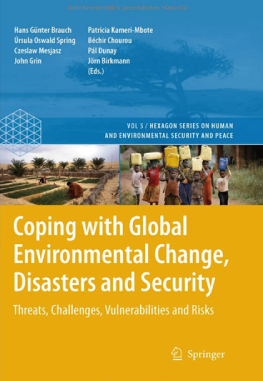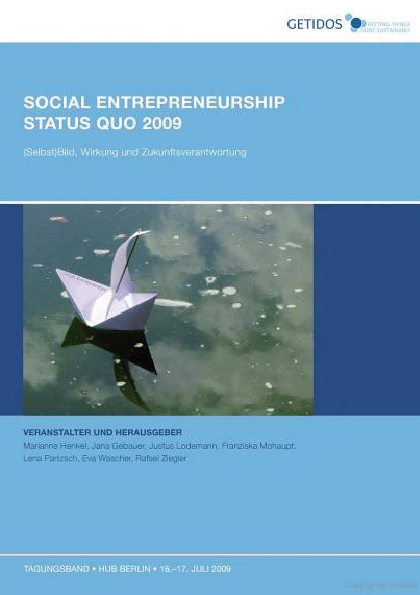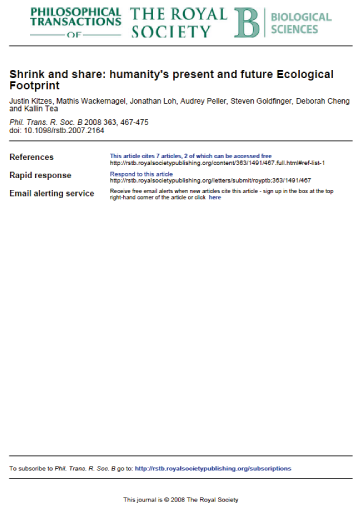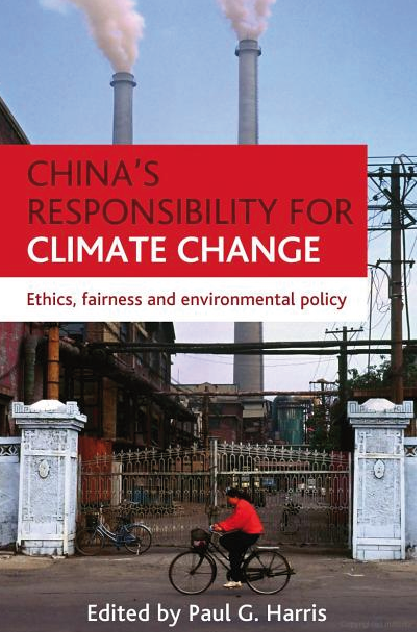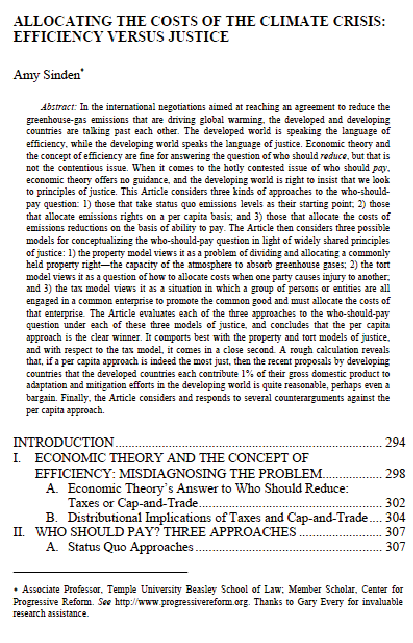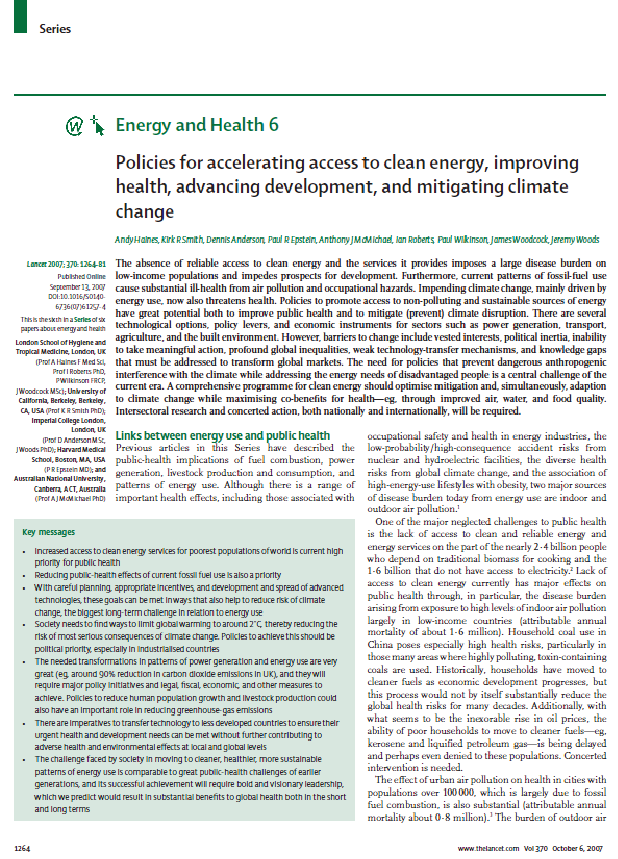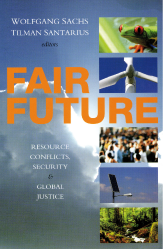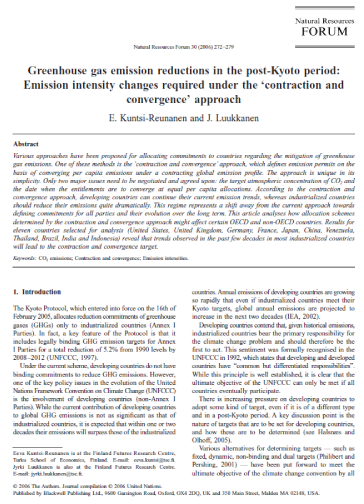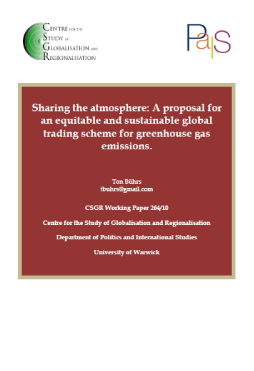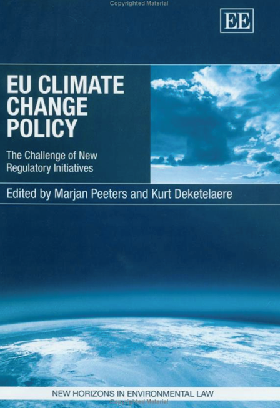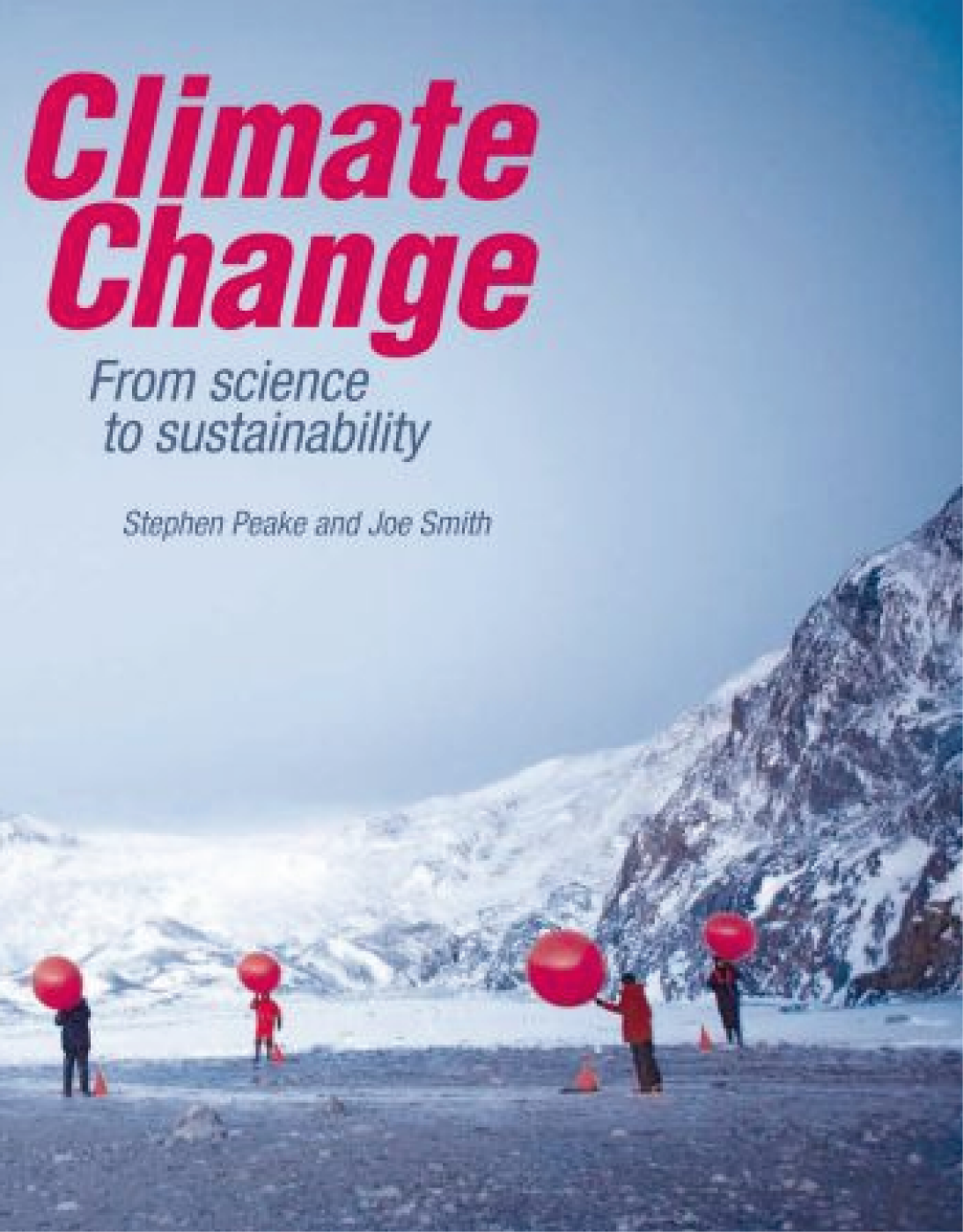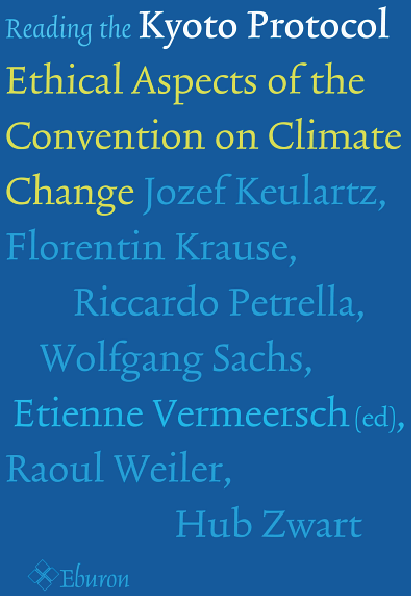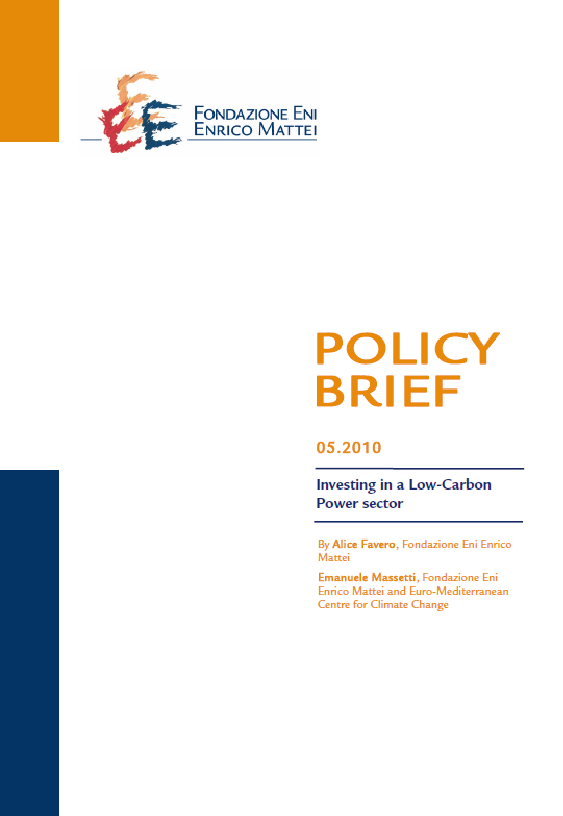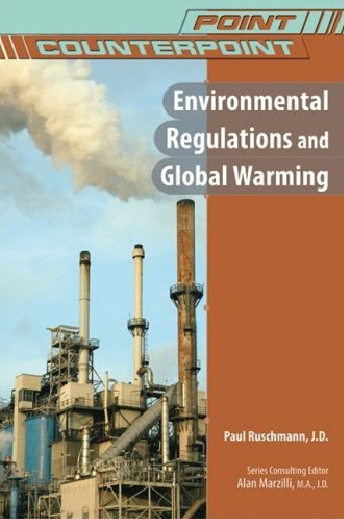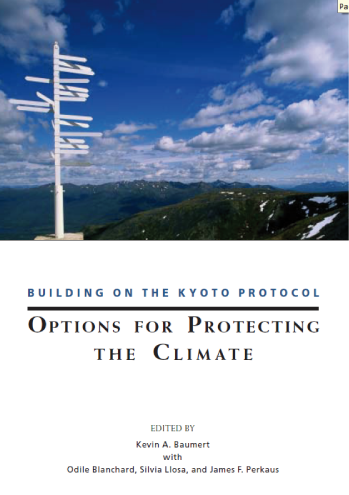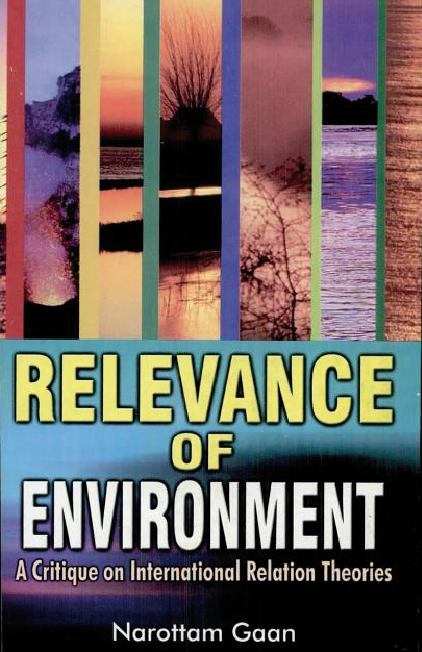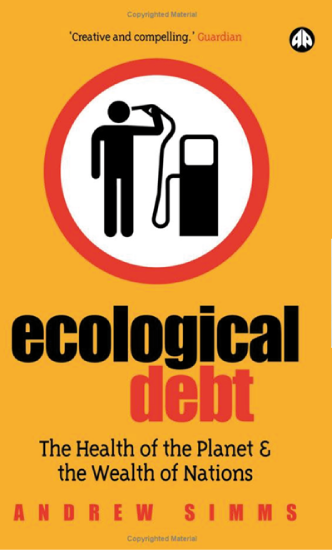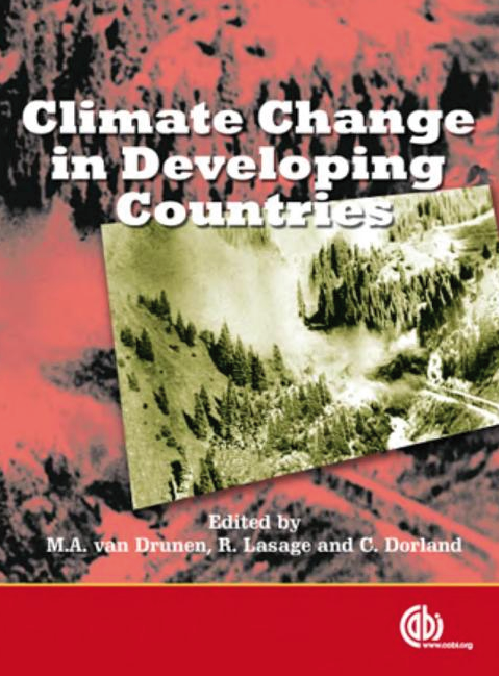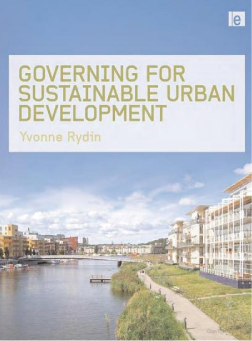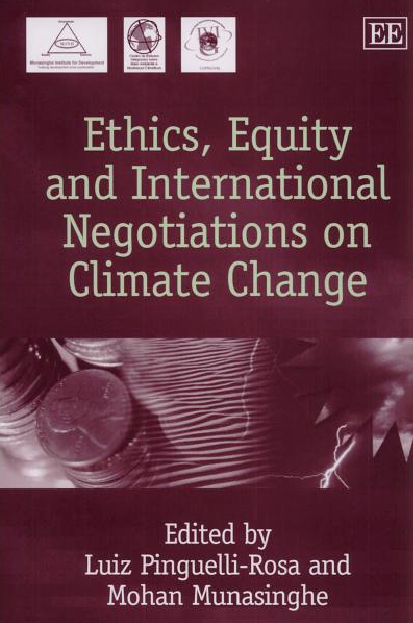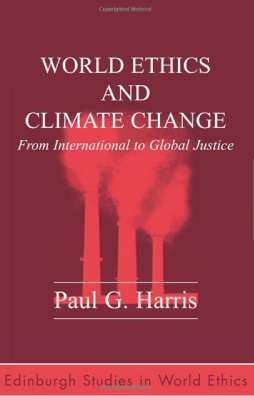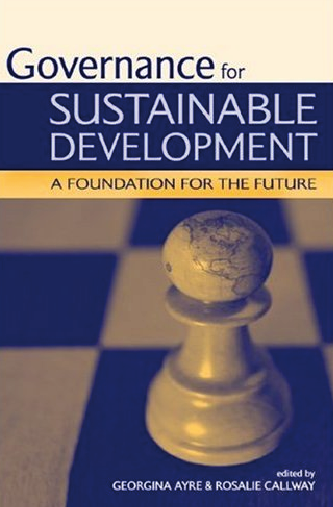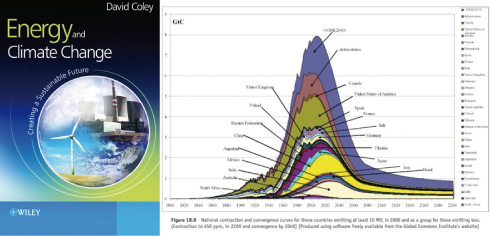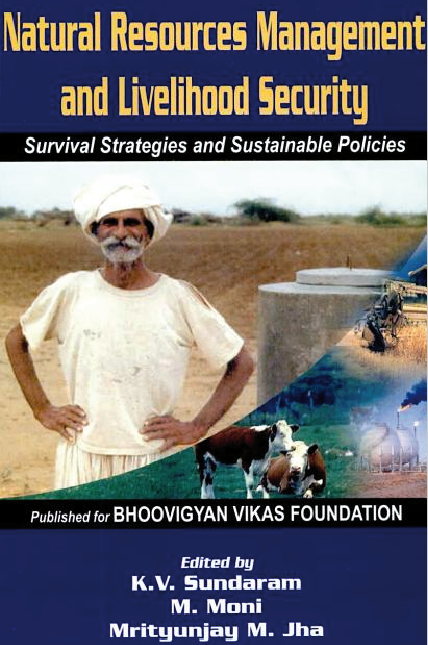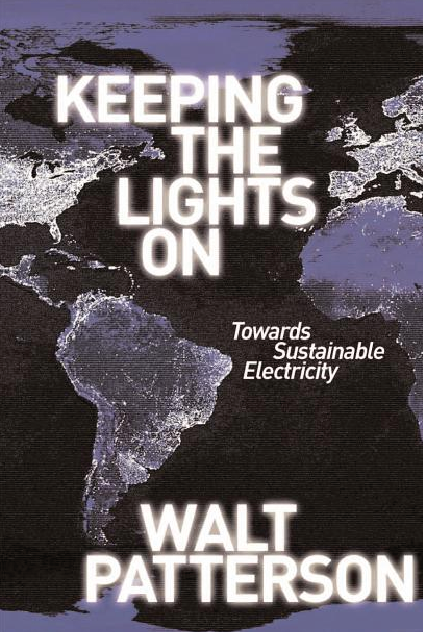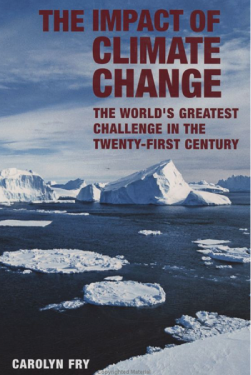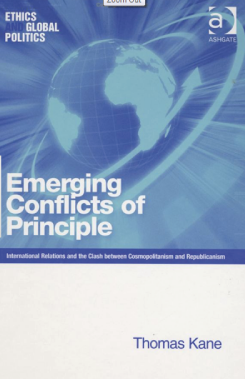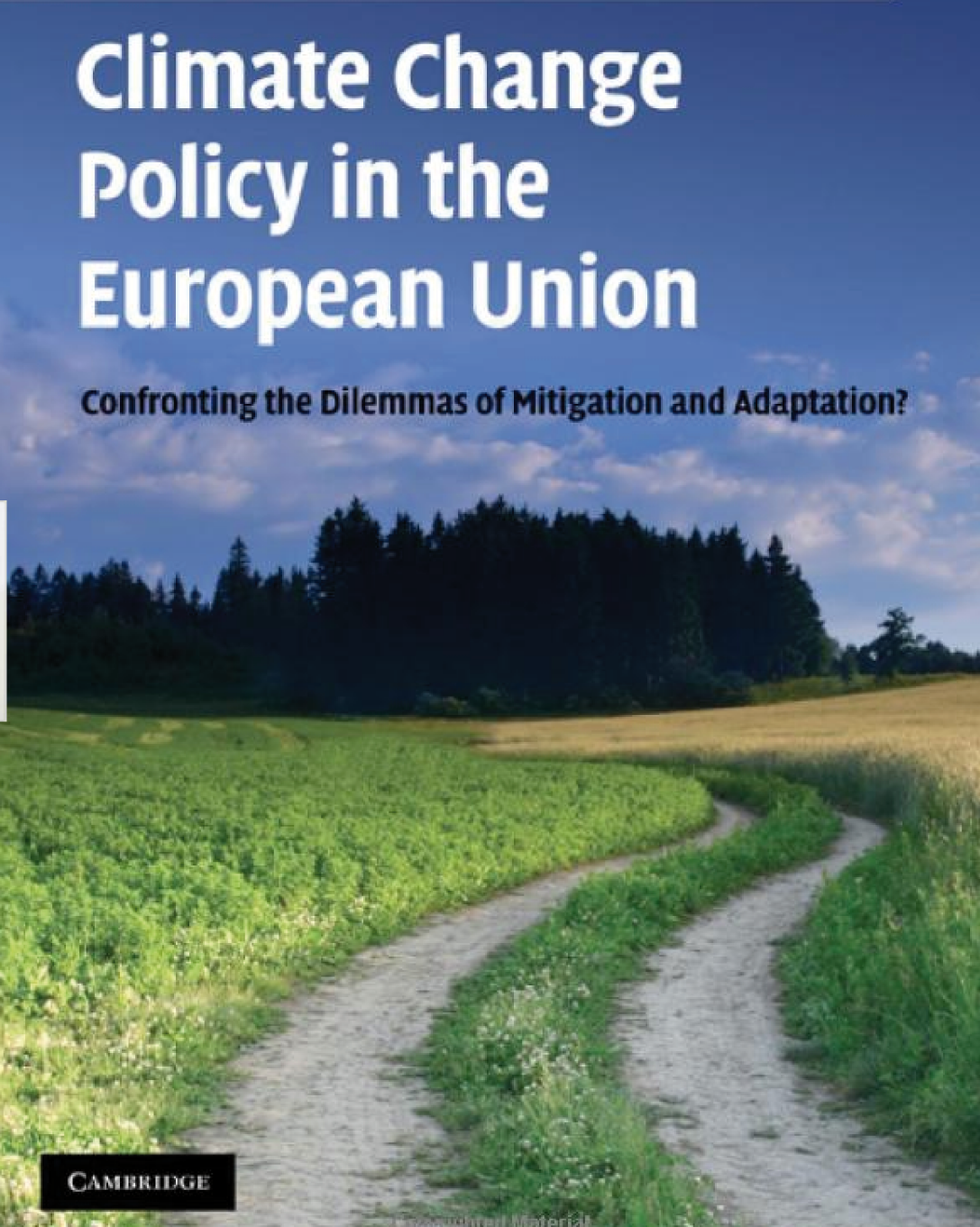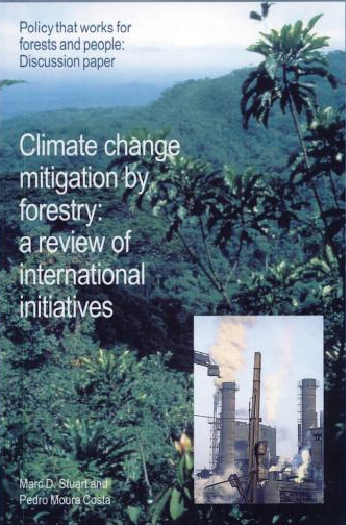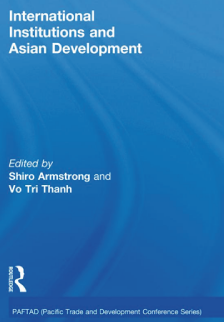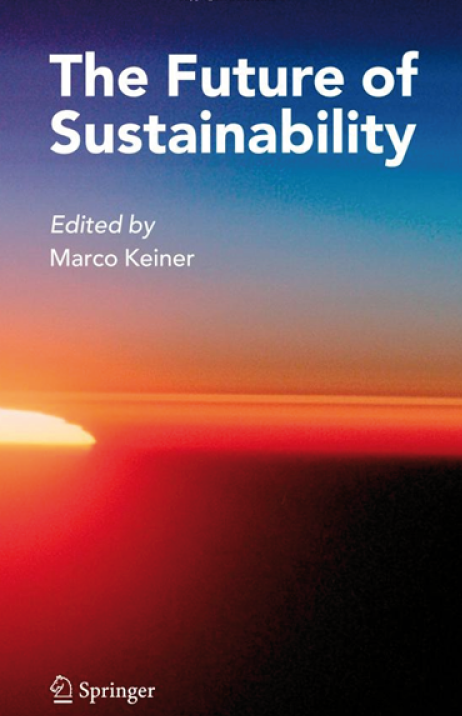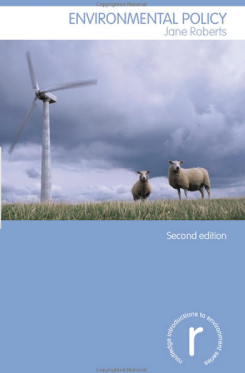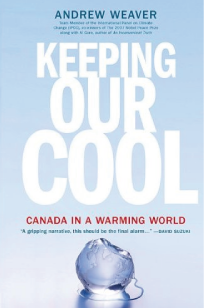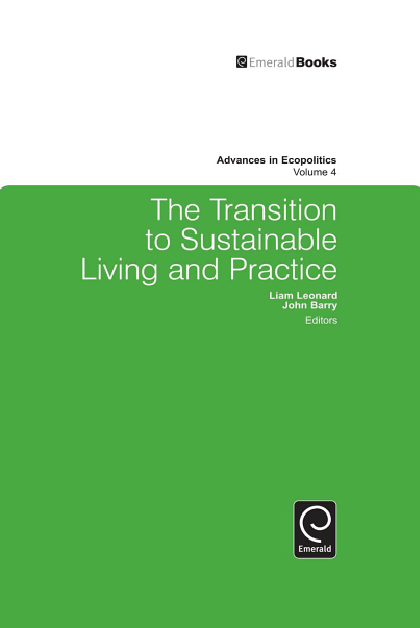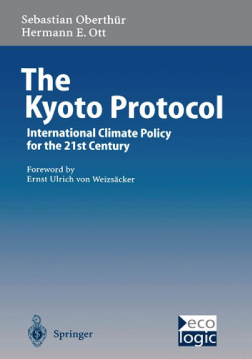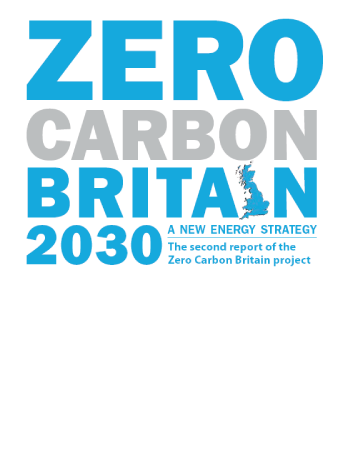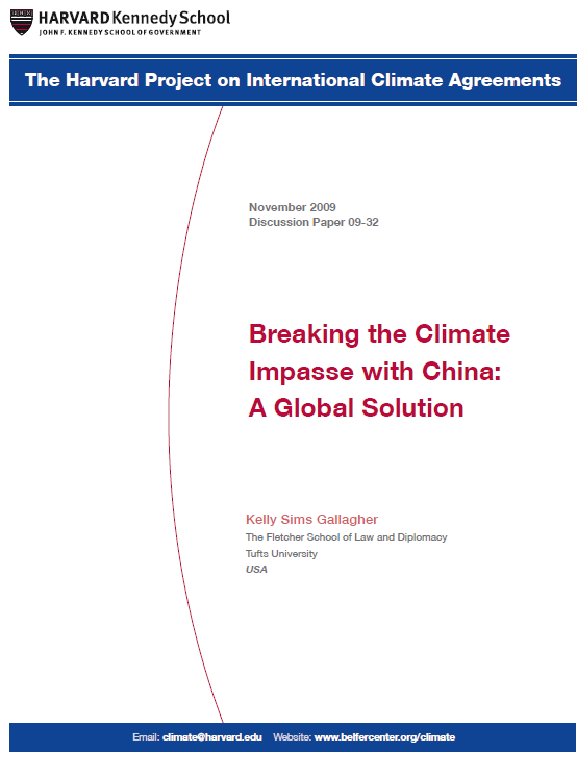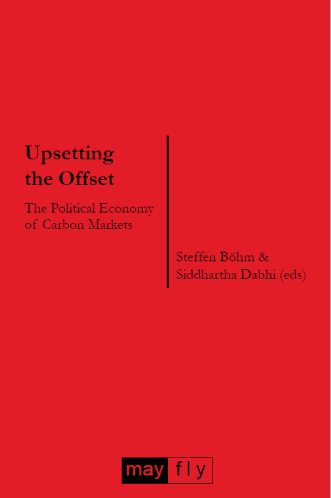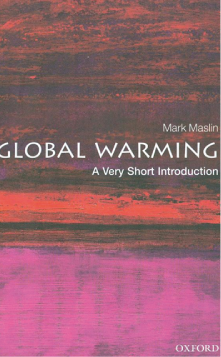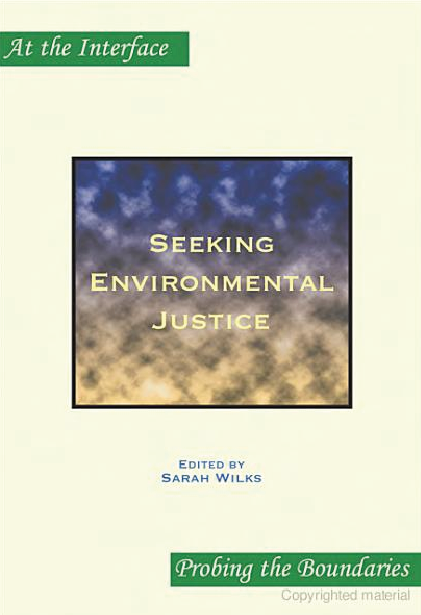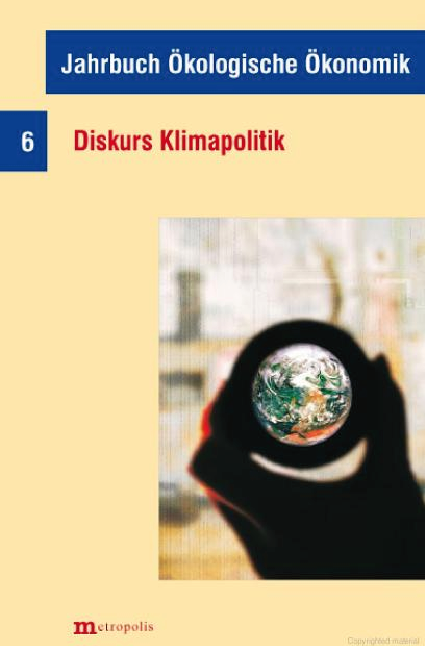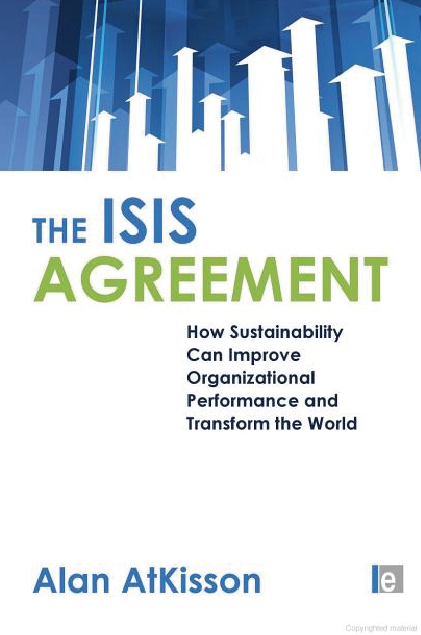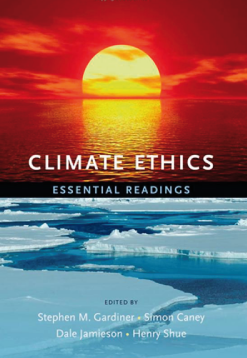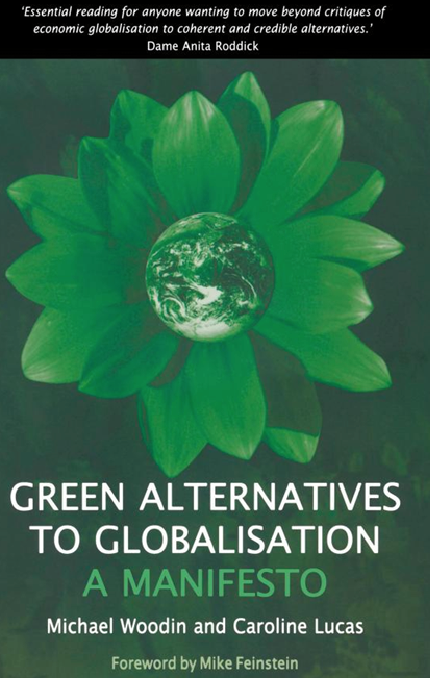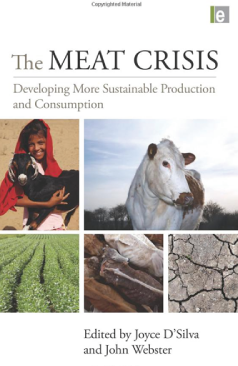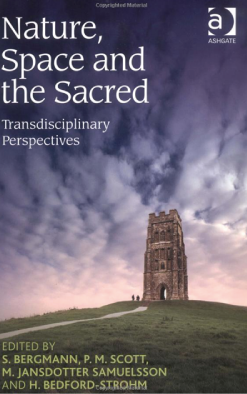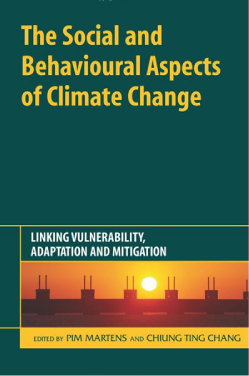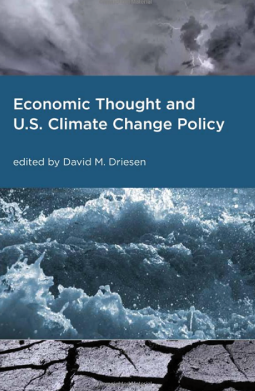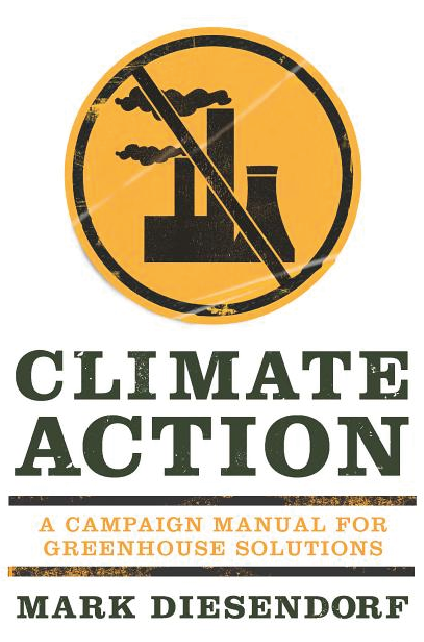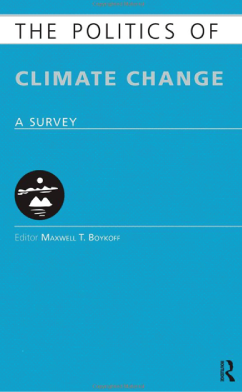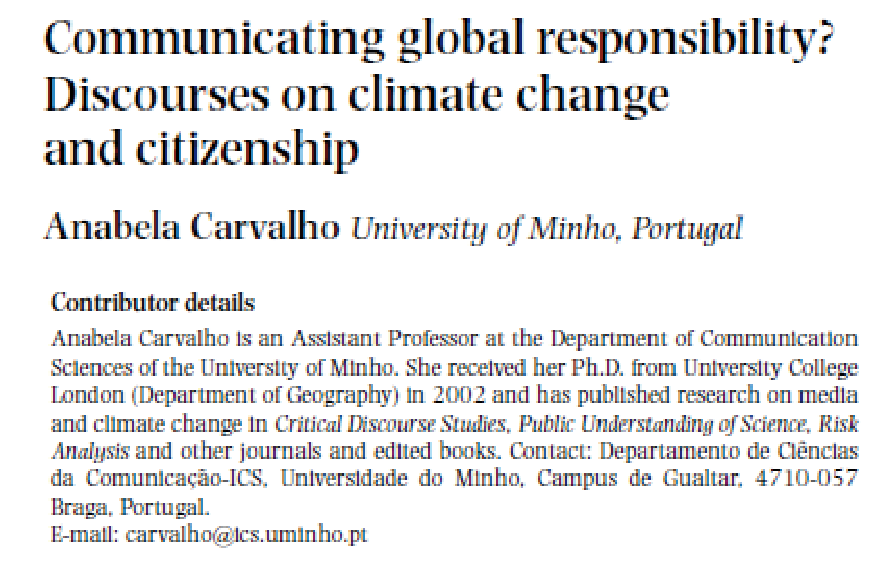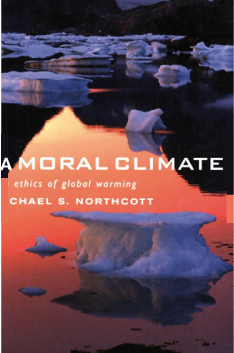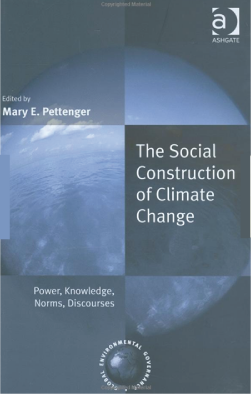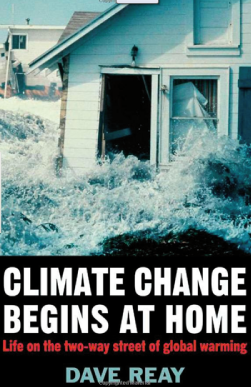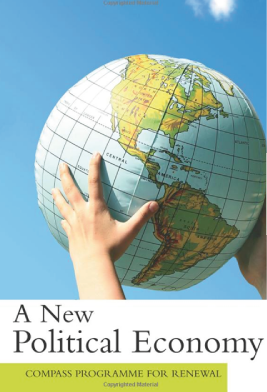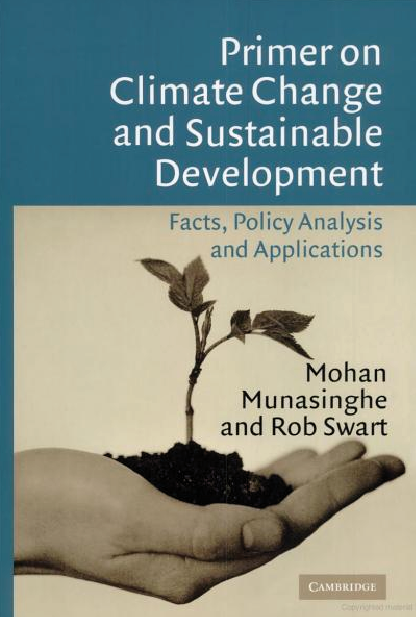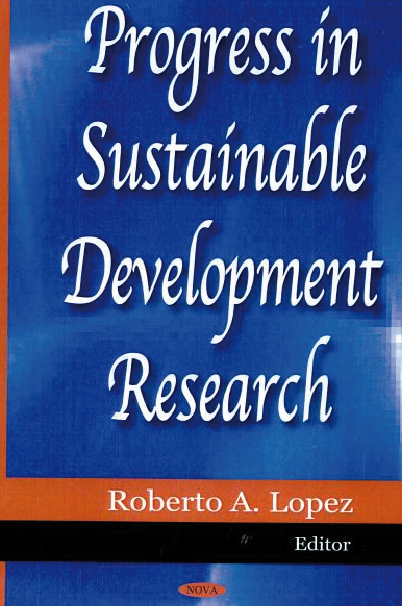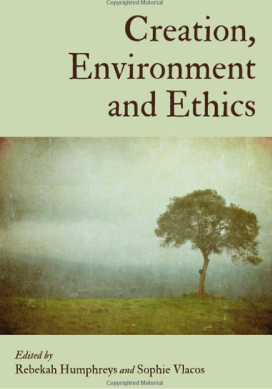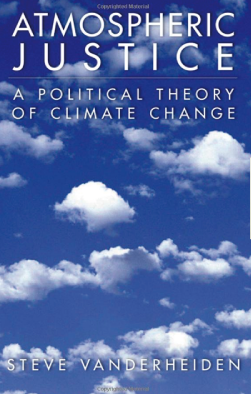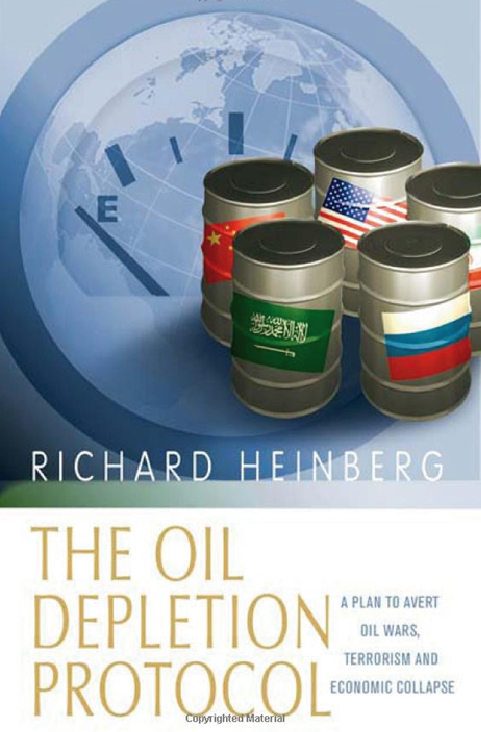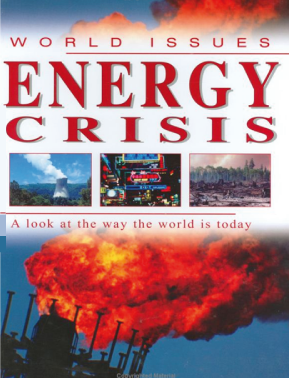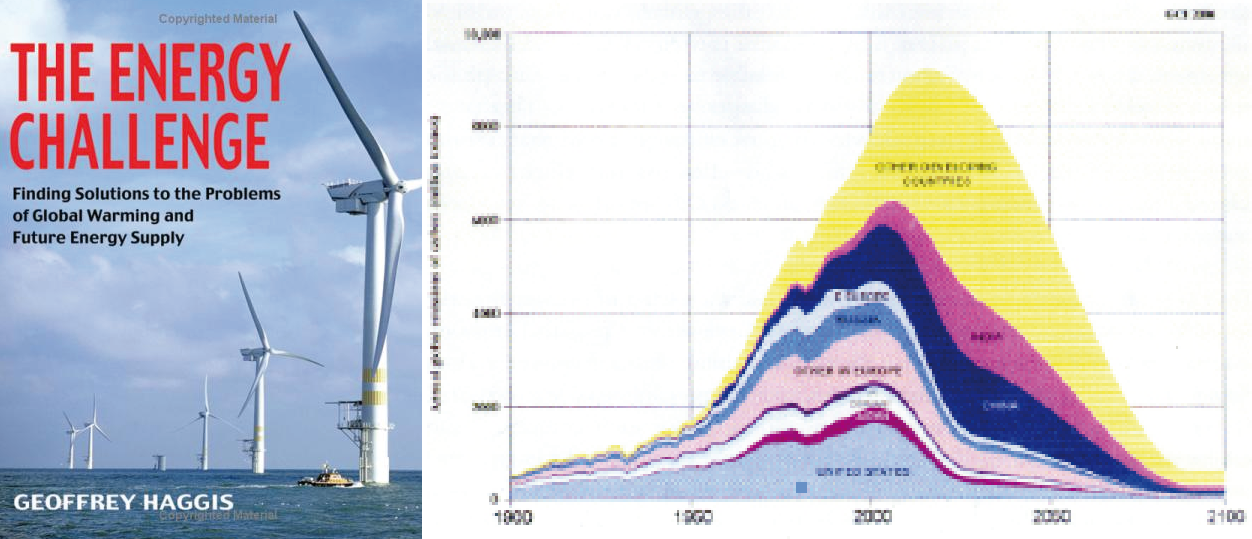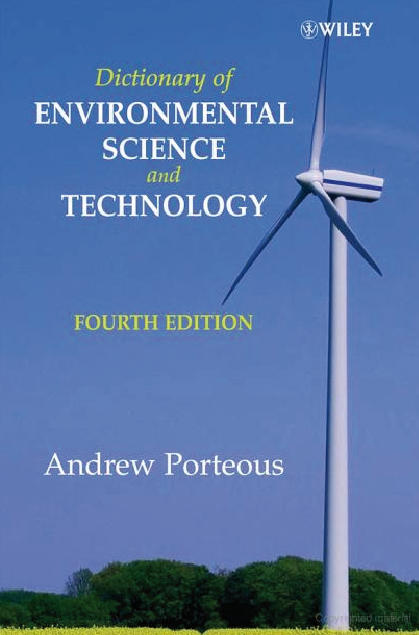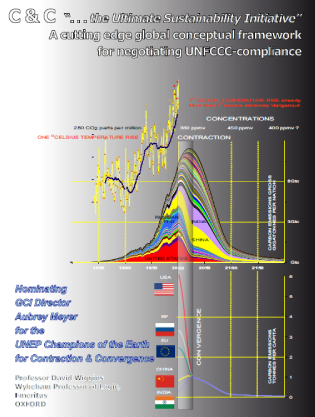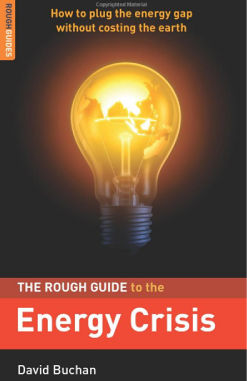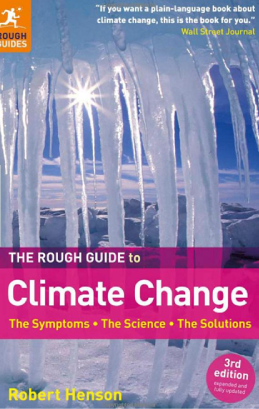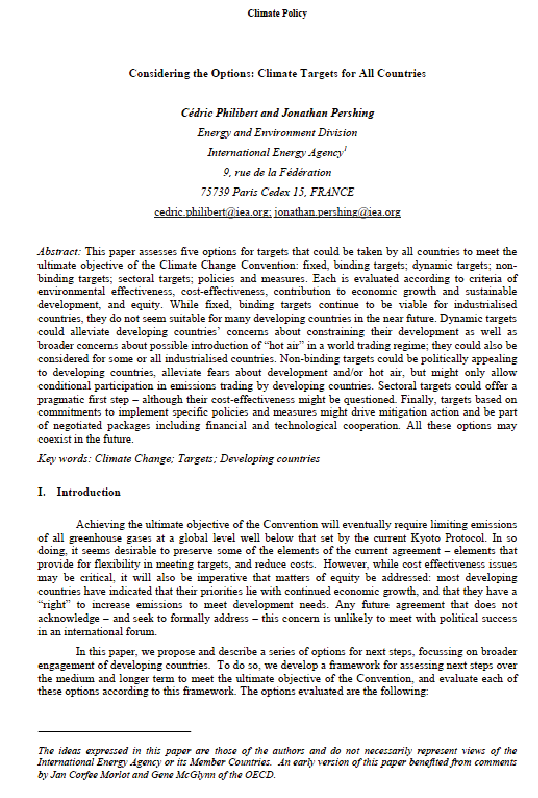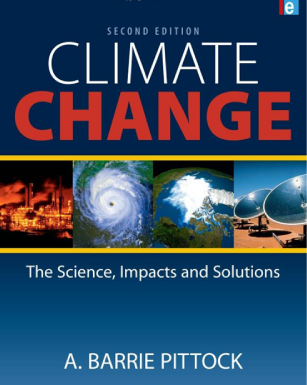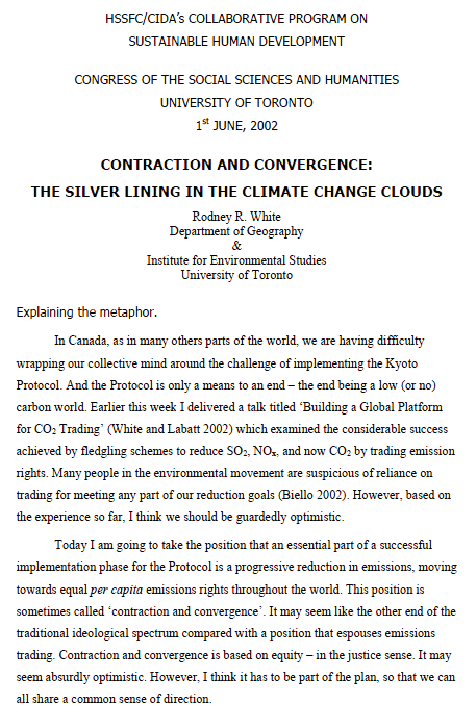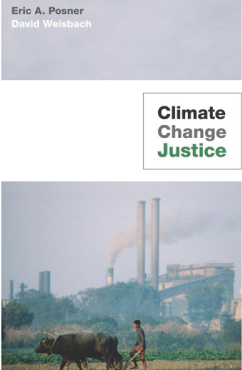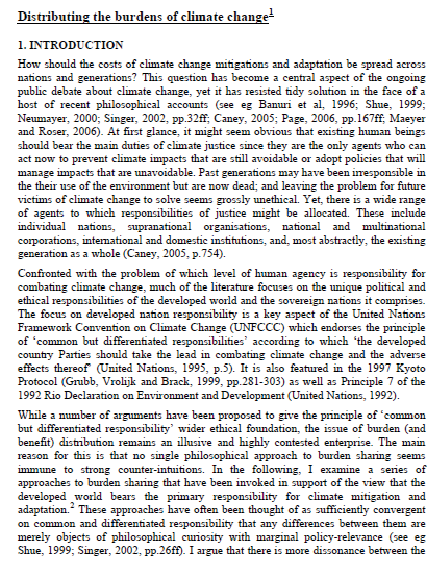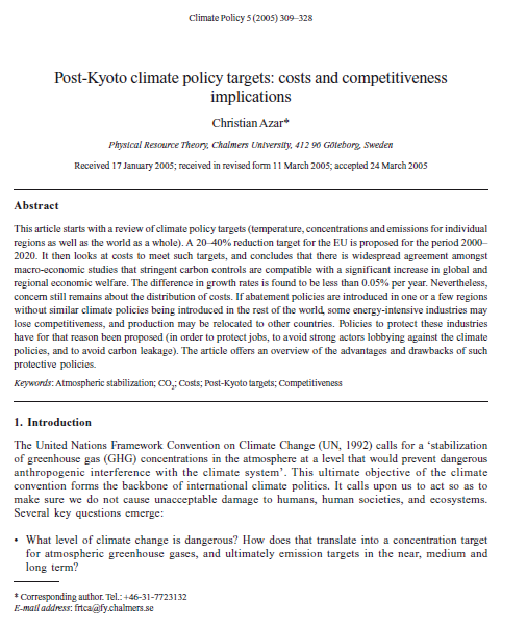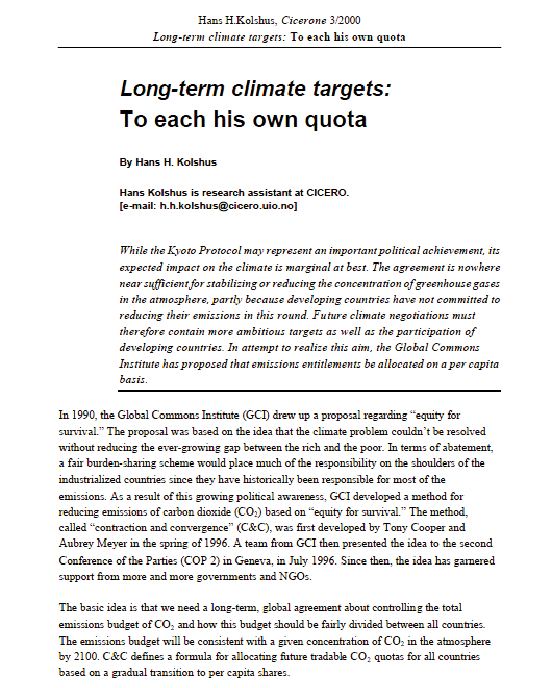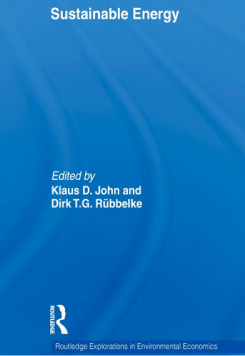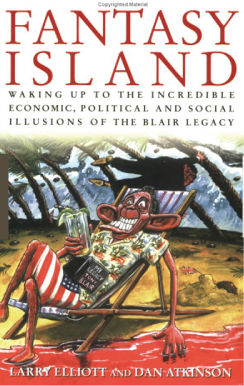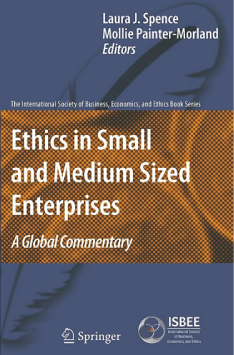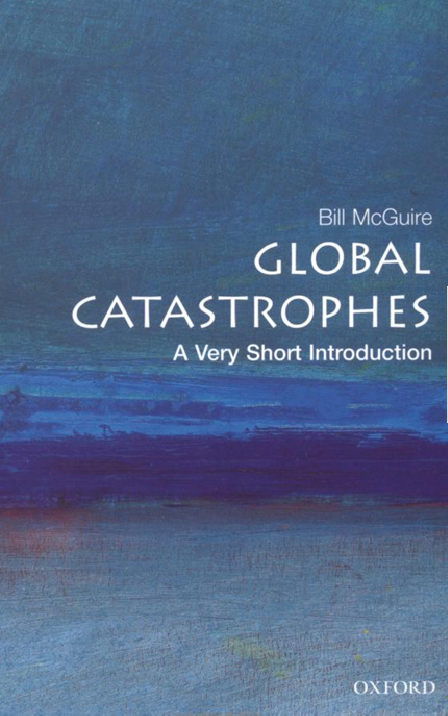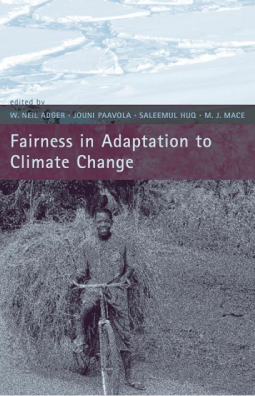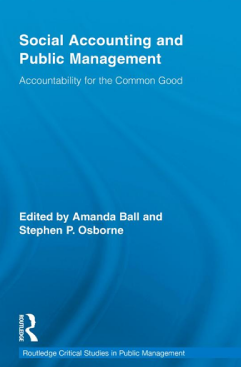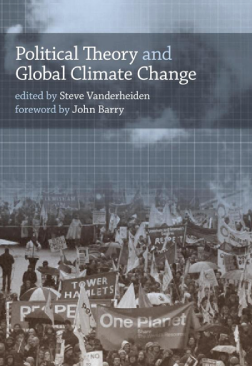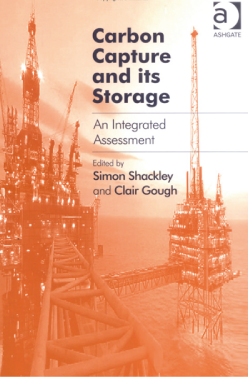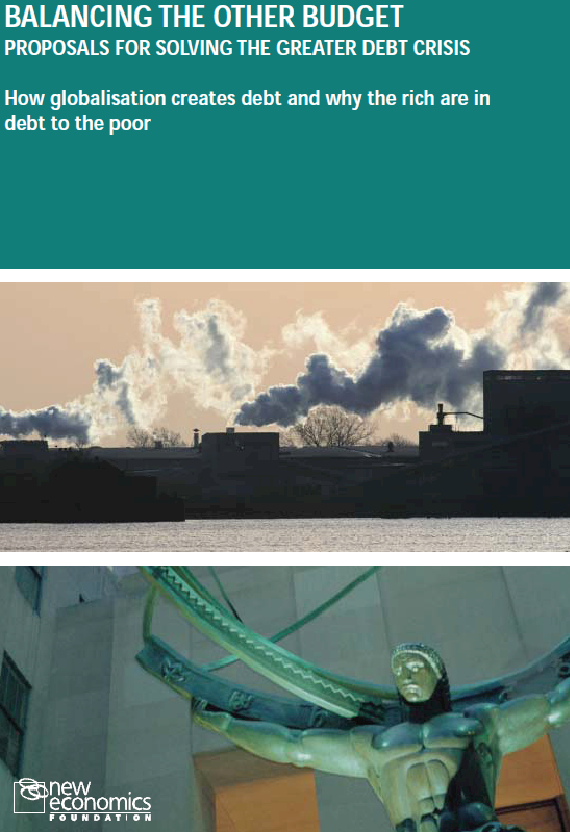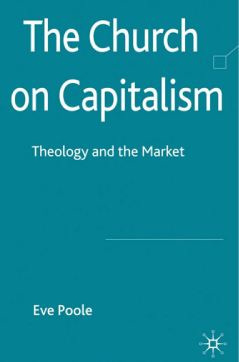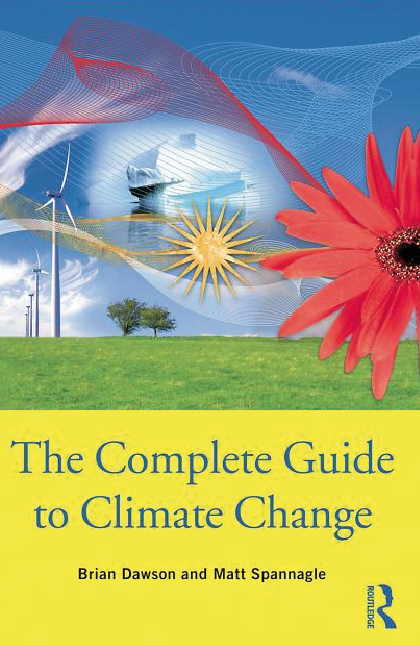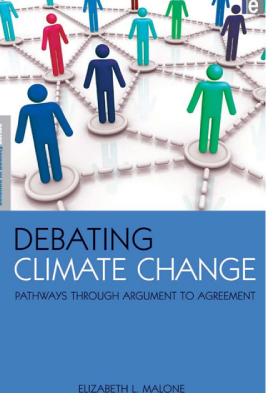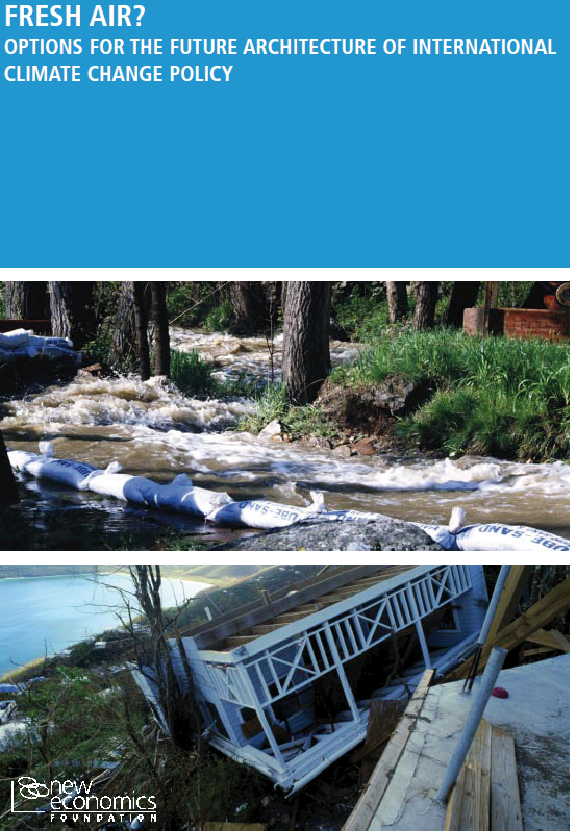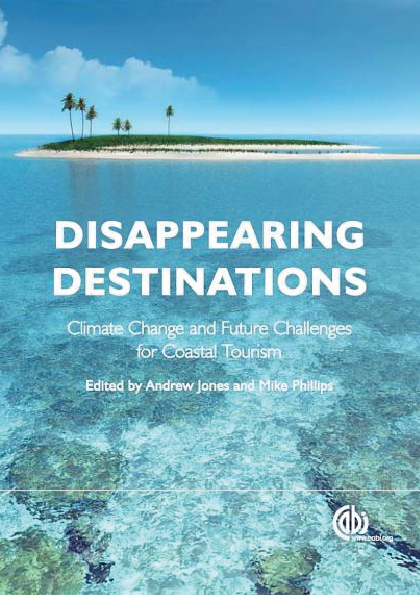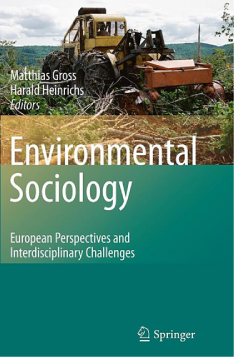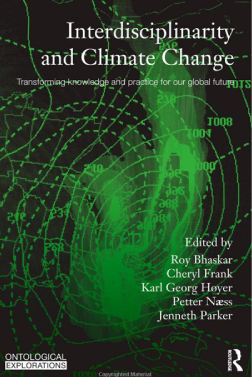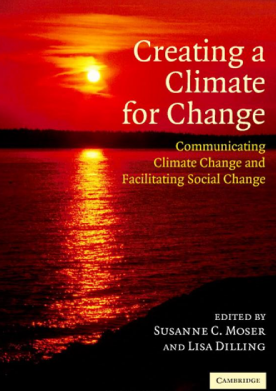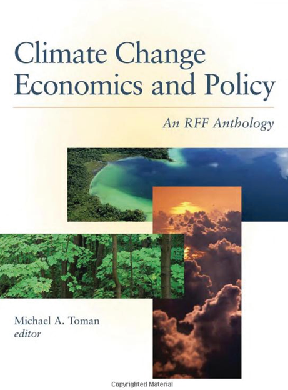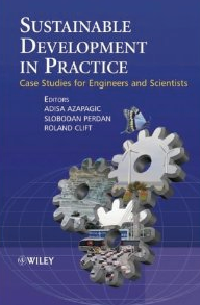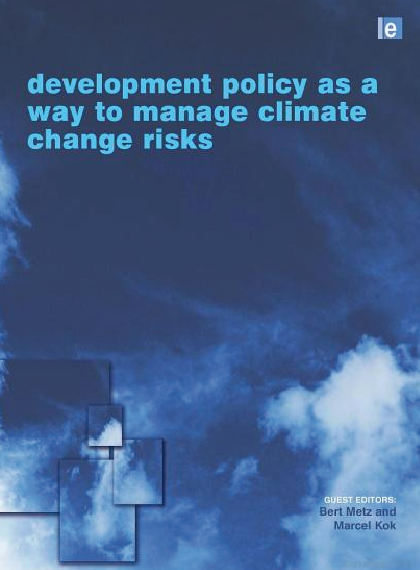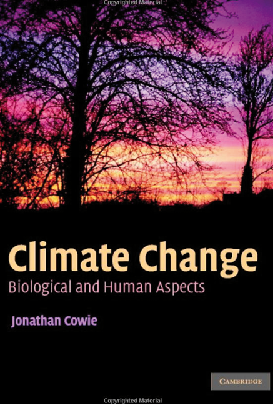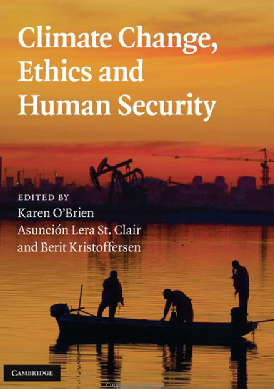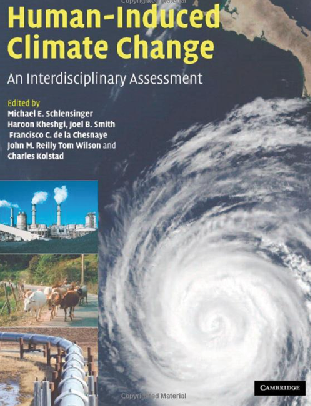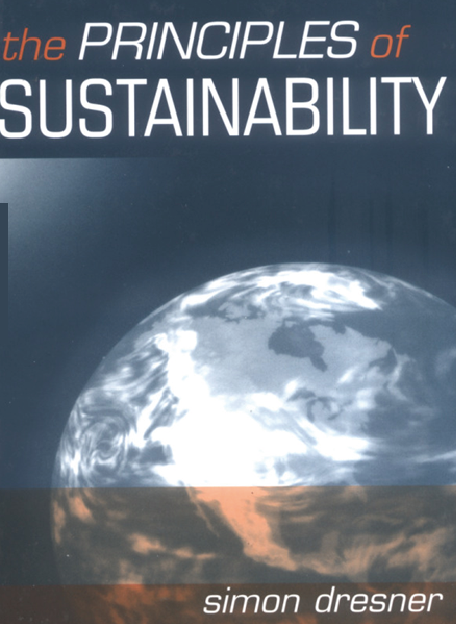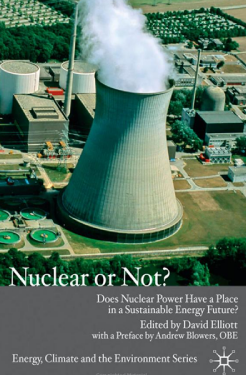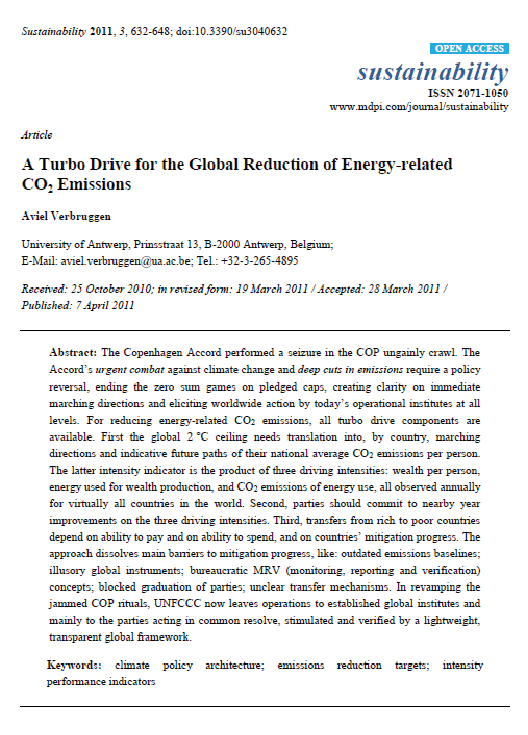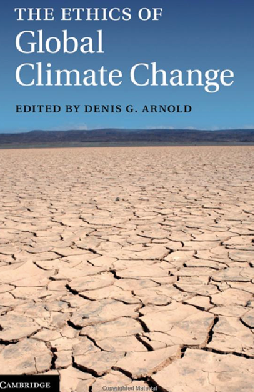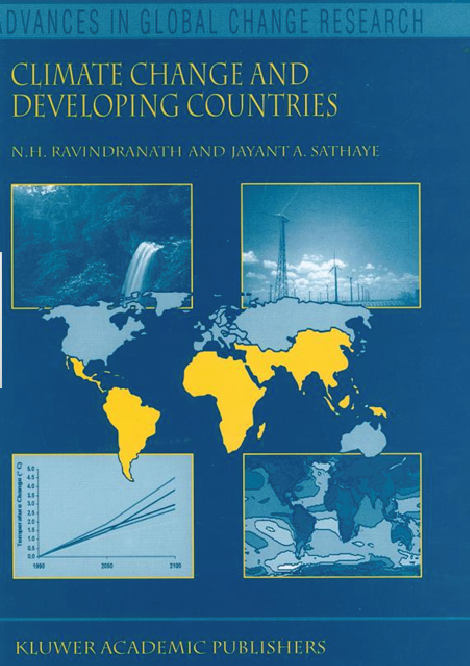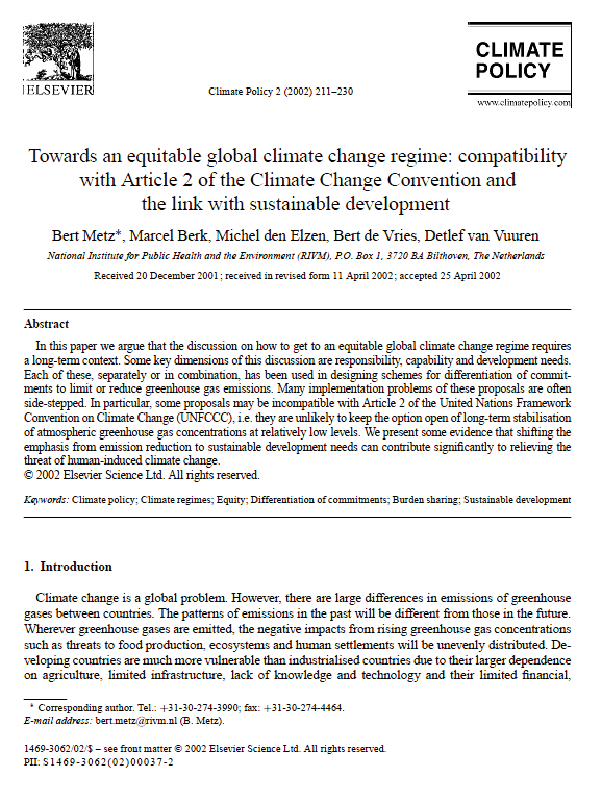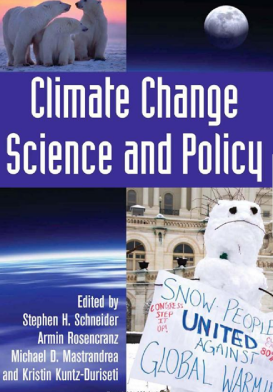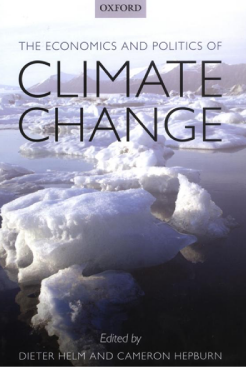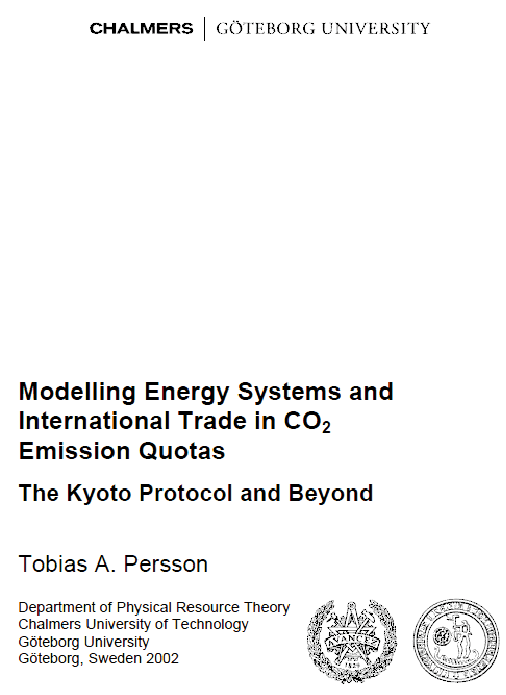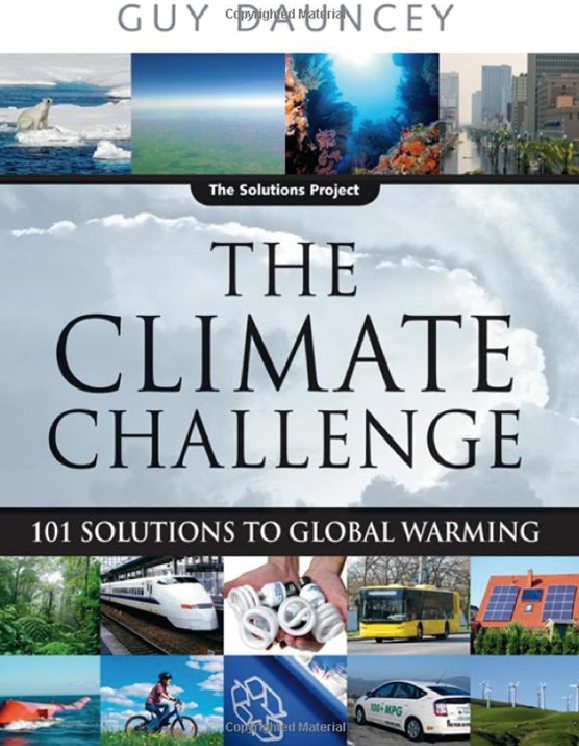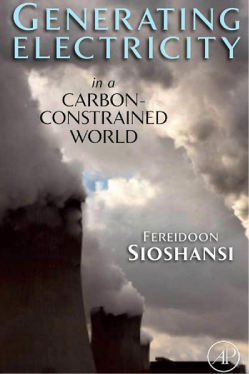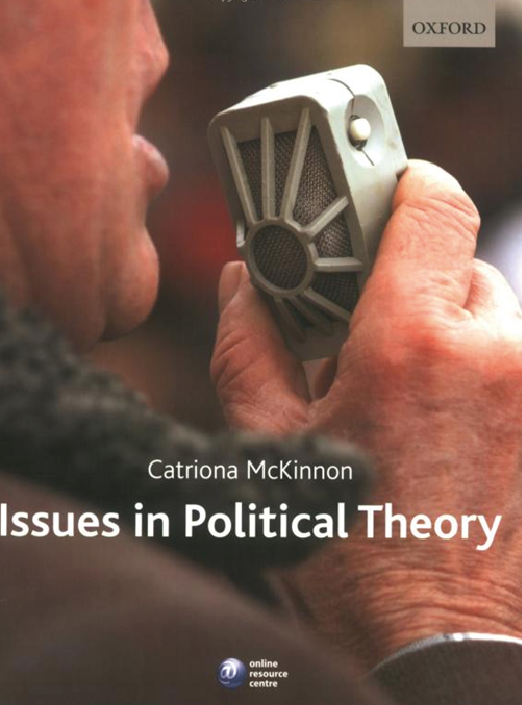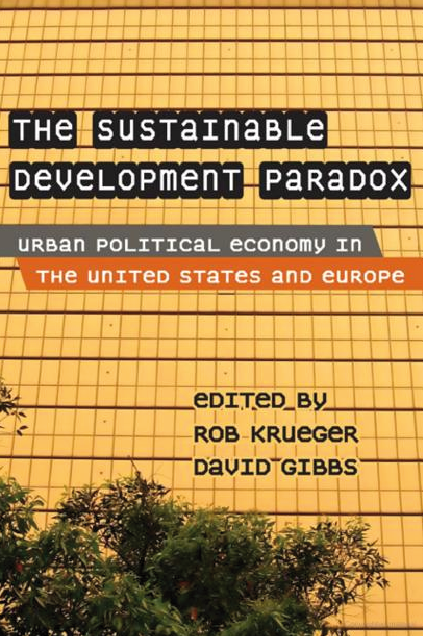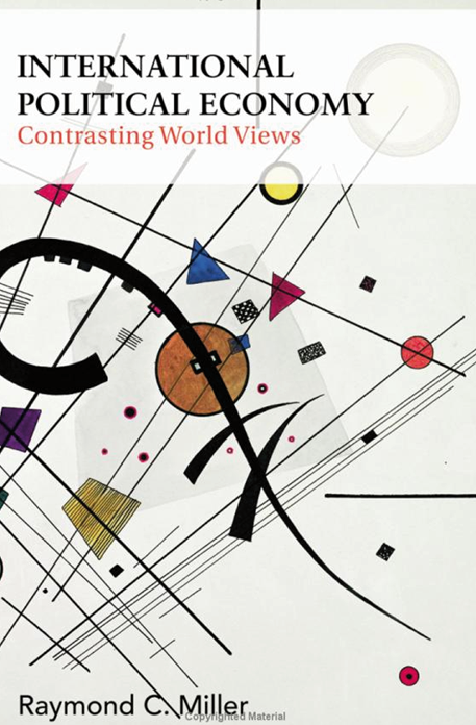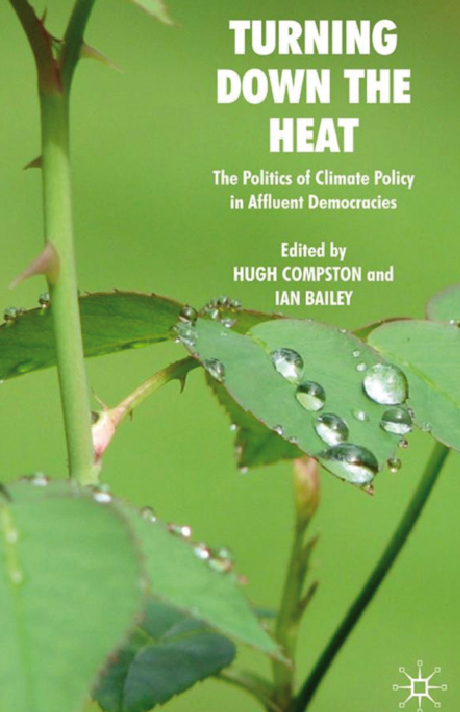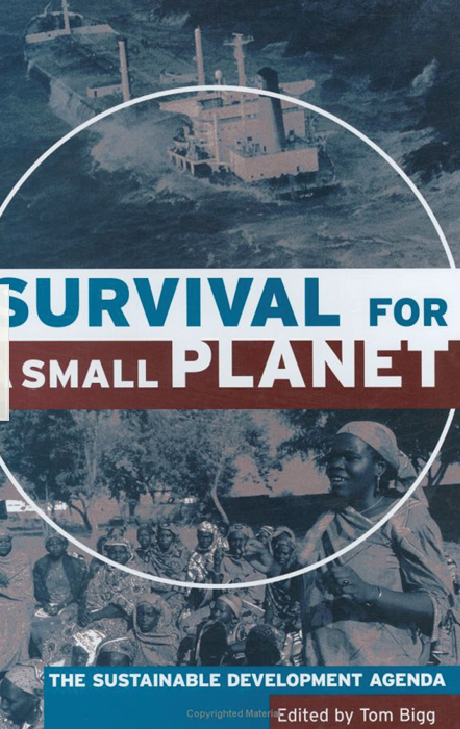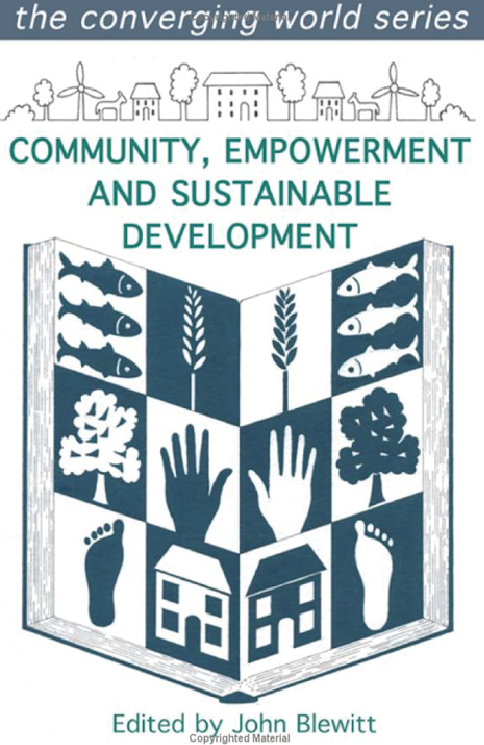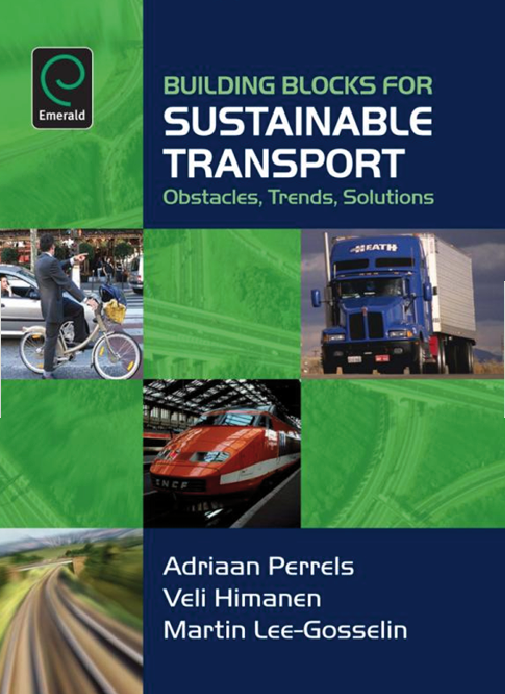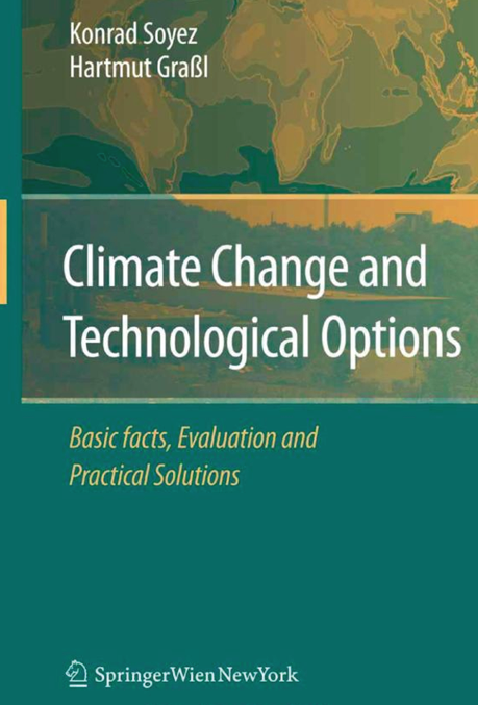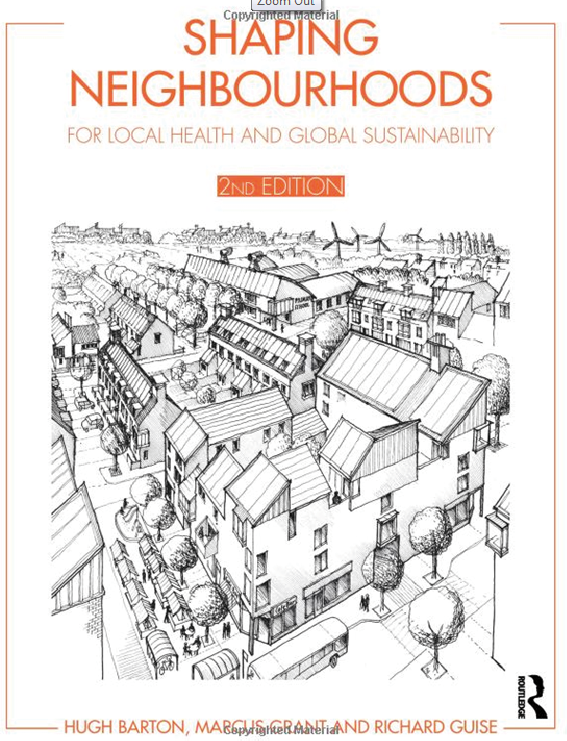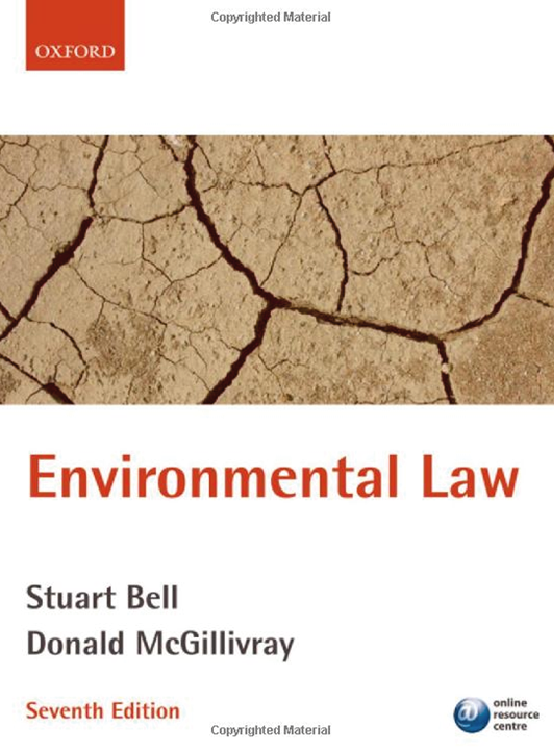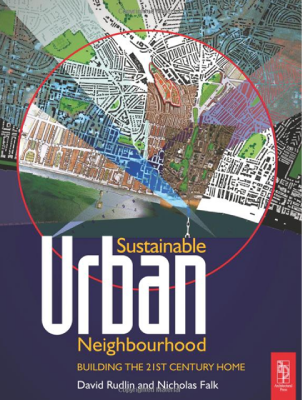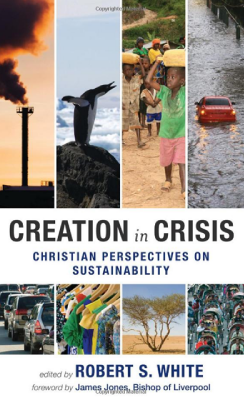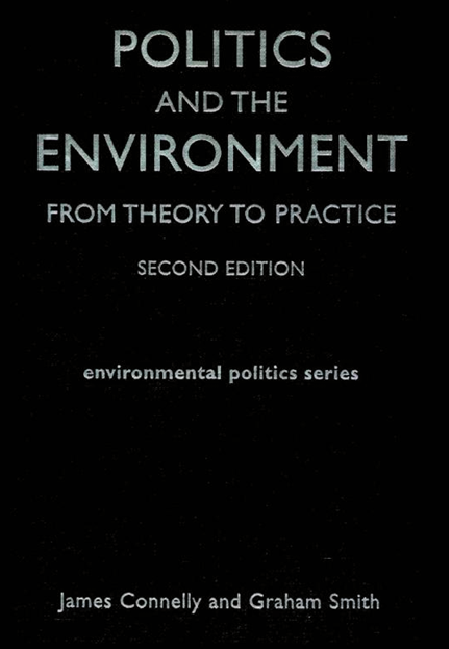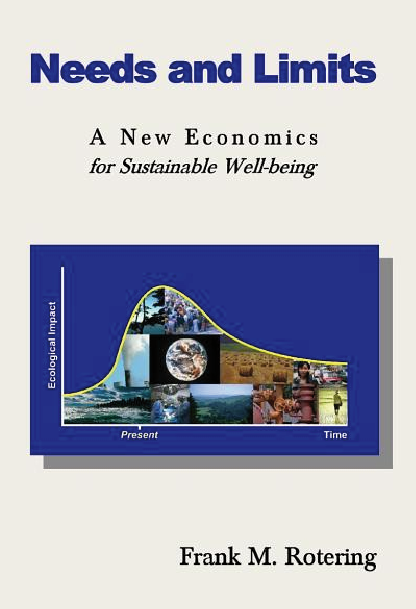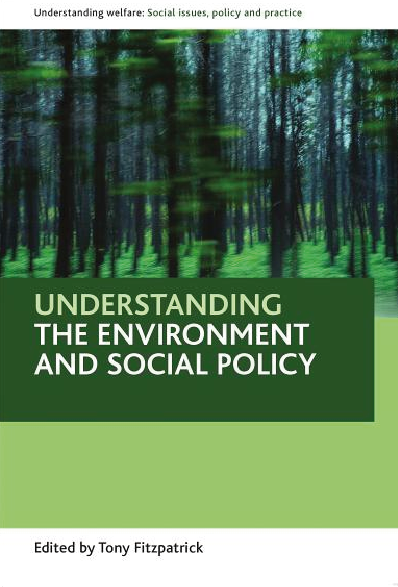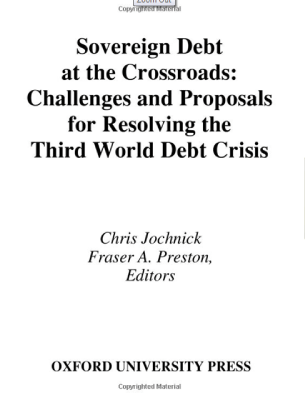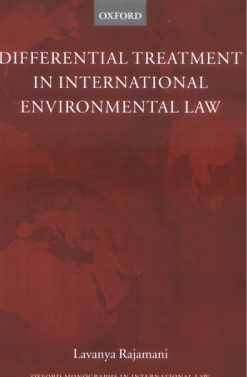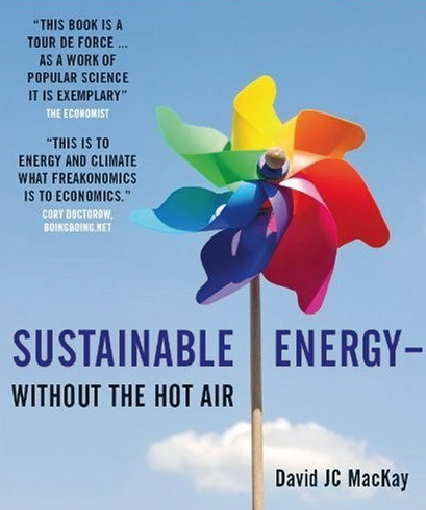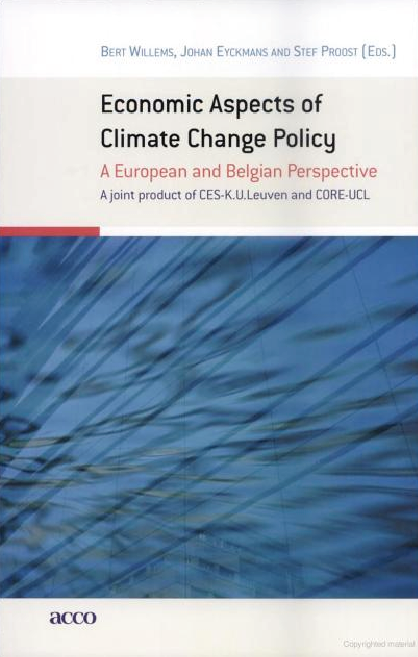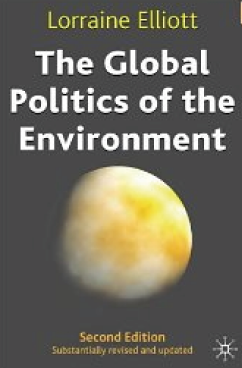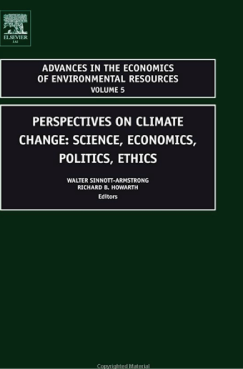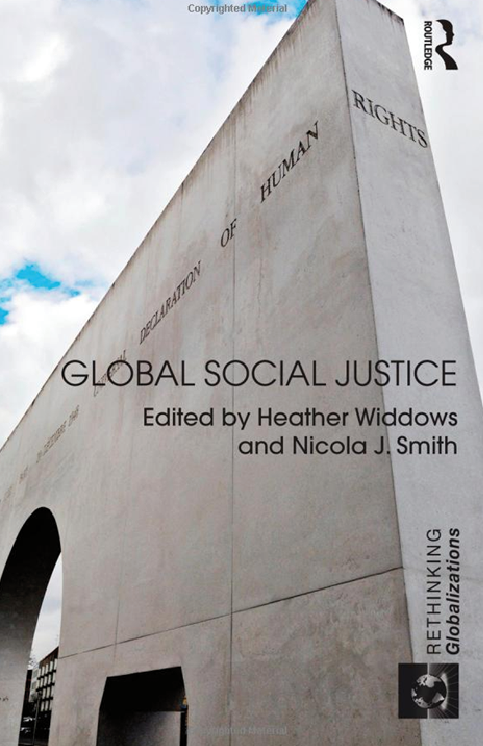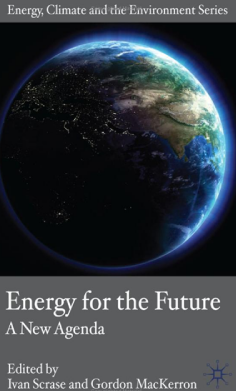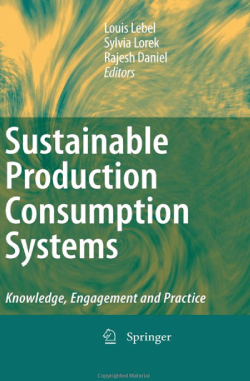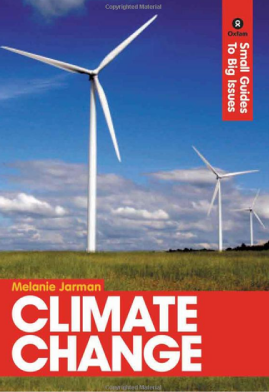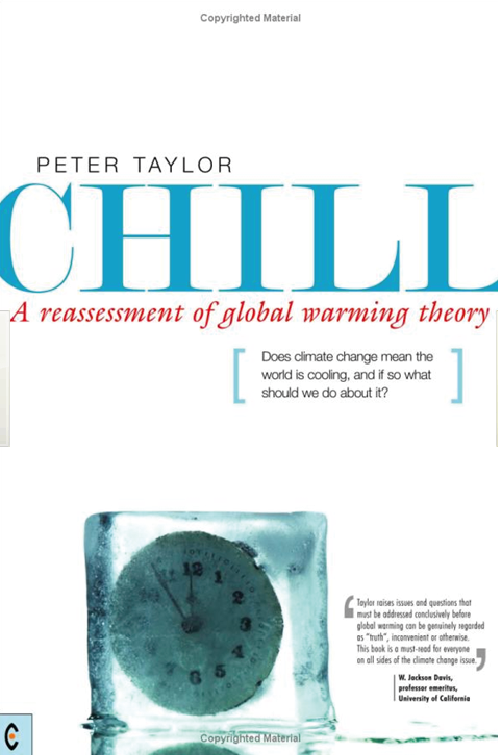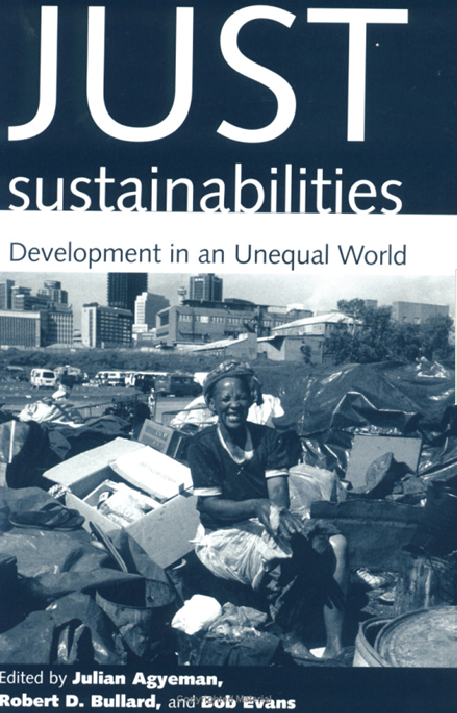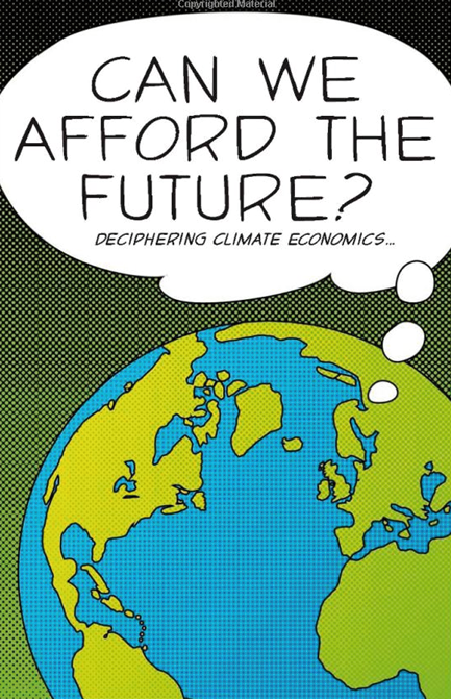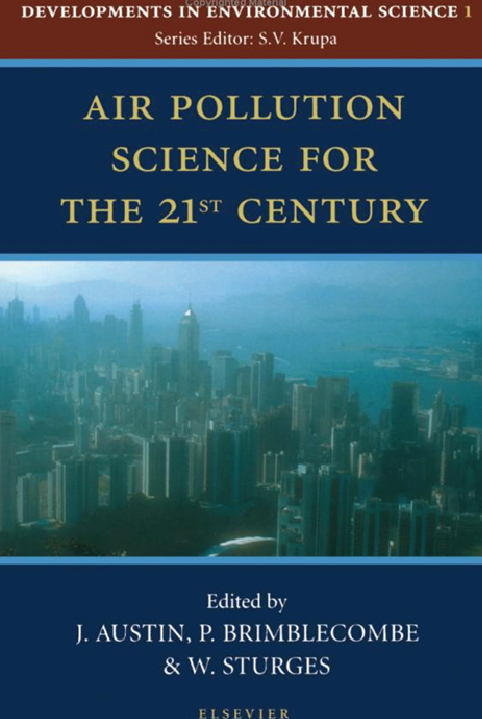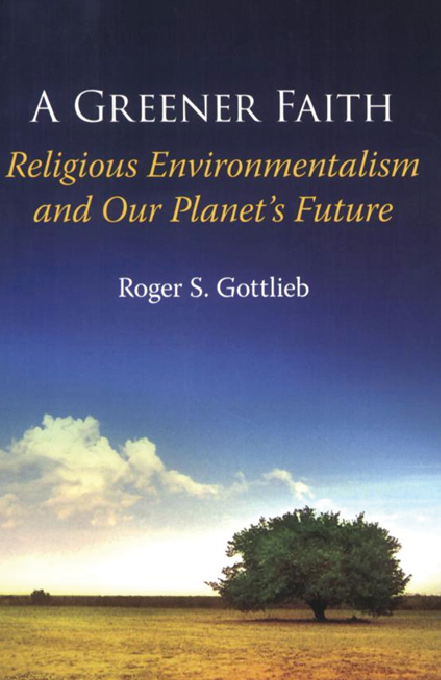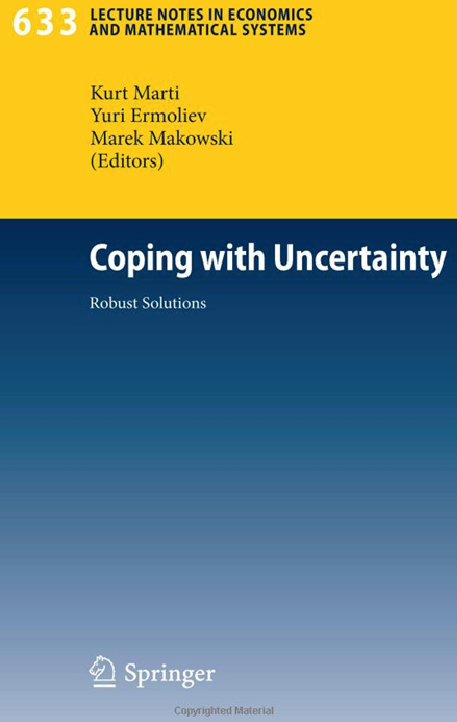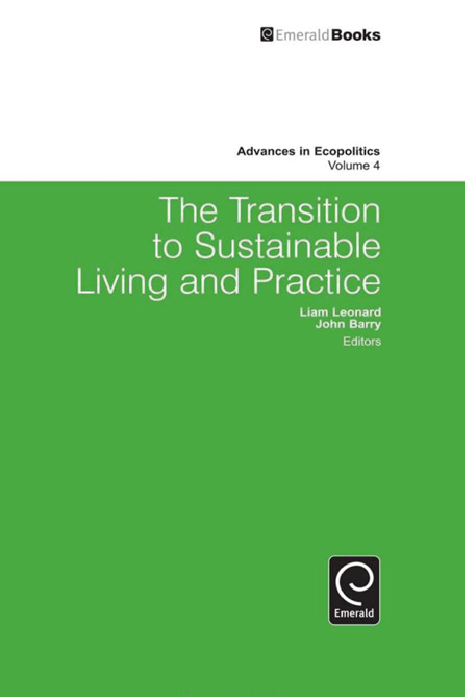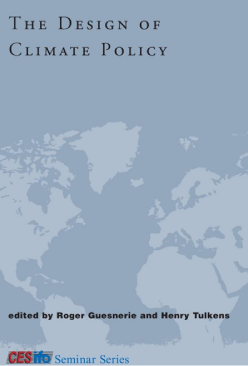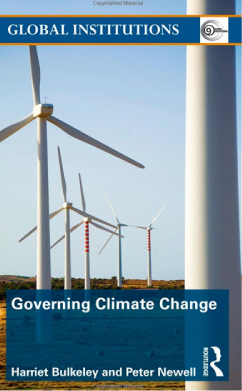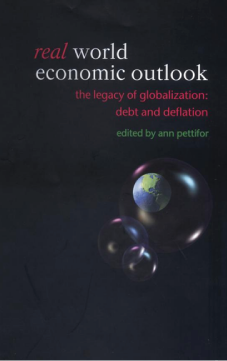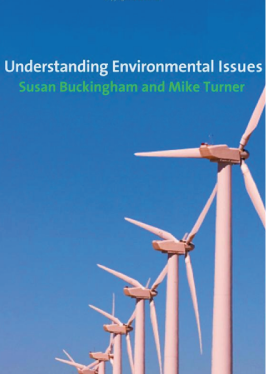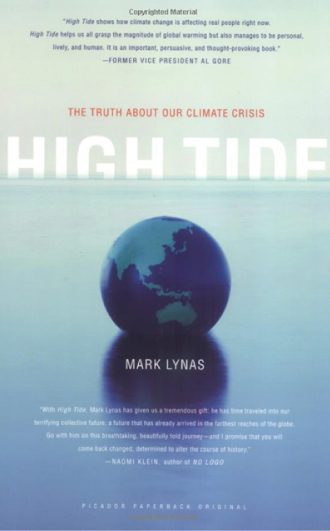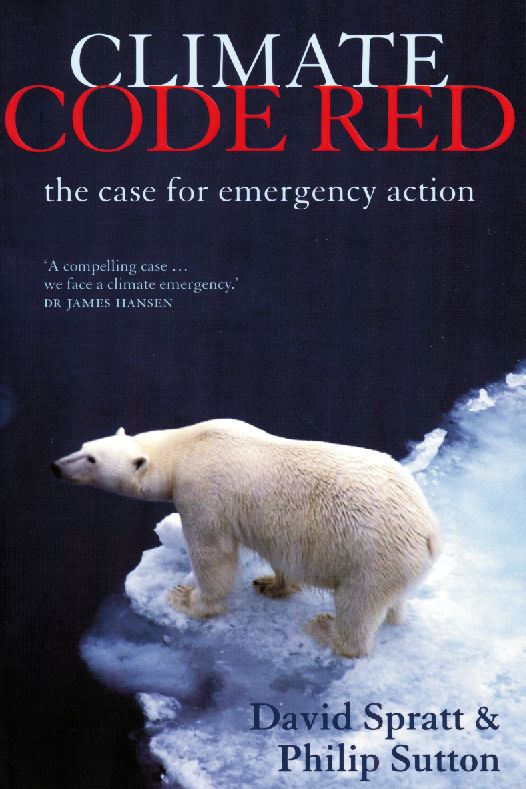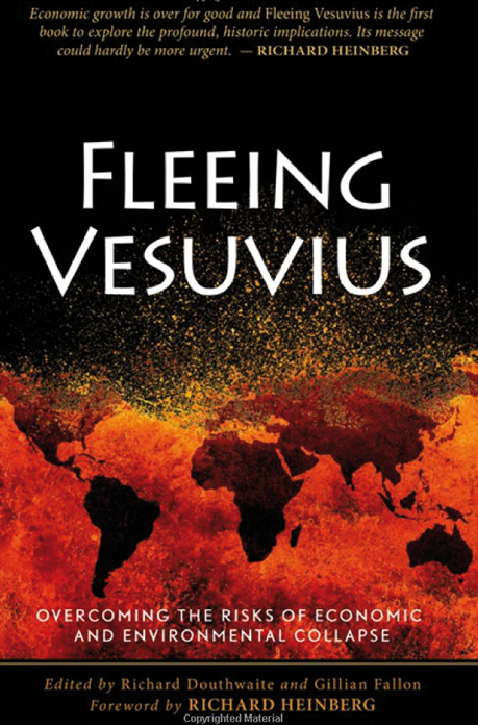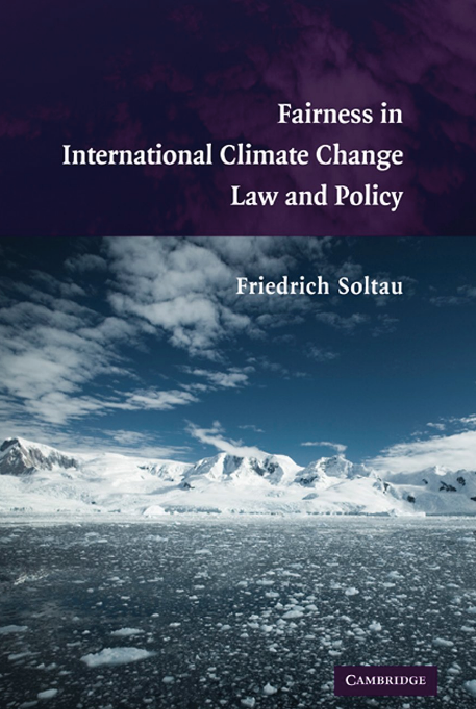Academia Support for the C&C Principle
Click logo to return to 'links-page'
Internationally Health Professional are increasingly uniting
around this simple full-term strategy for UNFCCC-Compliance.
In terms of continuing the critique of economic growth, we refined our analysis somewhat in this chapter along the following lines. The first is that the critique is directed at undifferentiated, orthodox GDP measurements of growth, where growth is viewed as permanent feature of an economy or a permanent economic objective. The second is that the critique of orthodox economic growth is confined to the minority or overdeveloped societies of the world.Using the normatively and scientifically informed 'contraction and convergence' argument, the upshot of the analysis is for the redistribution of development opportunities from the 'overdeveloped' countries to the 'global South'.
Economic growth was also presented as an ideology which serves the interests of elite, and its ideological promotion (by neoclassical economics) is intrinsically connected to the contemporary practices of global capitalism. Thus, as it stands, the dominant model of contemporary neoclassical economics is an apologia for, and legitimation of. free market capital ism and neo-liberalism.
In general terms following one of the first modern thinkers to propose a 'post-growth' economy, John Stuart Mill (Barry, 2007a), green political economists are of the view that economic growth should be 'redistributed' from the 'over, developed' minority world to the majority world in the global South. In terms of the limits to growth, energy and ecological thresholds that cannot be breached, the development path of the 'global South' cannot be along the same model as those pursued by the already industrialized (over) developed world.It is for this reason that most of the debates about a post-growth economy tend to be orientated towards the developed world, largely based, in my view, on the application of the 'contraction and convergence' approach to climate change and carbon reductions [Meyer, 200I], as a principle to guide an egalitarian and sustainable distribution of 'development space' globally.
The Politics of Actually Existing Unsustainably
John Barry OXFORD
A Critique of this Research Handbook by Dr Paul Anderson
If effectiveness means problem-solving then any assessment of IEL needs not only to identify problem-solving means (which the Handbook ably does) but also the nature of the problem itself, about which the Handbook is largely silent. Although justice cannot be done here to the meanings of GEC, understood as a term of art used to describe avoidable environmental problems which (i) arise cumulatively from economic practice, (ii) differ from earlier instances of induced change by virtue of their scale and (iii) affect the international community by affecting shared resources or by otherwise being so widespread or serious as to qualify as problems of common concern,11 two characteristics are immediately relevant to the exercise. First, since GEC involves the collective use of natural resources as a source of, and a sink for economic activity, at a rate greater than that at which resources themselves can be replenished, it is characterised as a conflict of rates. See Meyer A. The Case for Contraction and Convergence in Surviving Climate Change: The Struggle to Avert Global Catastrophe
Research Handbook on the Theory and History of International Law
Following the 1997 Kyoto meeting of the Oaarties fo the UN Framework Converntion on Climate Change, both the UK and the EU have set clear targets for CO2 reduction and the increased contribution made by renewable energy resources in electricity generation. As an example, the UK is now comeitted to cutting its CP2 emissions by 20% by 2010, although manym commentators feel this is ont enough by a large margin. Concerned NGOs and politicians in the Governments of the Industrialised Countries are pressing for much larger cuts averaging 60 percent of global greenhouse gas emissions under the banner of Contraction and Convergence [C&C] where the onus is on the developed world to make deeper recutions sooner.
Global Environmental Issues Frances Harris
"Bjorn Lomborg, for example, suggests that extending the terms of Kyoto throughout the century would mean that the world would have to wait one year to enjoy the economic prosperity it would have enjoyed in 2050 if no international action to combat climate change had been undertaken."Rival architectures can usefully be analysed in terms of their fit with four principles of equity: -
- C1: A safe atmosphere: climate architectures (and the measures they involve) should aim to minimise dangerous climate change. There is no consensus as to what constitutes dangerous climate change, or what level of global warming would trigger it since the idea has an irreducibly normative, as well as natural scientific, component (Schneider and Lane, 2006, p. 7). However, a useful working definition can be found in terms of the aim to limit increases in atmospheric concentrations of CO2 to a doubling of their pre-industrial level of 280 parts per million (ppm). For comparison, atmospheric CO2 concentrations reached 377 ppm in 2004 a 35 per cent increase on the pre-industrial level (Keeling and Whorf, 2005).
- C2: Affordability: climate architectures should not be excessively costly to adopt for existing and subsequent generations. This is a complex issue, given that estimating the social and economic impacts of alternative climate responses rests not only on accurate models of climate change for different levels of CO2, but also of development, population growth and migration (Tol, 2002, pp. 48ff.).
- P1: Universal participation: members of all countries should be represented in the construction of the climate architecture and its mechanisms and policies; and while future generations cannot participate directly, their interests should also be taken into consideration at all times.
- P2: Fair burden sharing: the costs of implementing the architectures and the measures they involve should reflect the differing contributions of each country (and its members) to present and future climate change as measured by their current and historical greenhouse emissions.
Contraction and Convergence has three main components.
- Each person on the planet is granted an equal right to emit greenhouse gases by virtue of their equal right to use the benefits provided by a shared atmosphere. This principle is treated as intrinsic to the architecture of the approach.
- A global ceiling for greenhouse emissions is set based on a calculation of the amount the atmosphere can withstand without dangerous climate changes emerging.
- Each country is allocated a yearly carbon emissions budget consistent with the global ceiling not being exceeded, and calculated according to each country's population size relative to an agreed base year.
The key aim is to bring about a stabilisation, and later a contraction, in global greenhouse emissions so that they stay below a safe level, together with the idea that, in the longer term, all countries will converge on a roughly equal level of per capita emissions compatible with the long-term stability of the climate system. Within this approach, a country that wants to emit more than its yearly quota must buy credits from countries that have spare capacity. The country selling the credits can then invest the receipts in activities enabling it to develop in a sustainable manner. The flexibility of this approach means that many developing countries will not be required to reduce their emissions to the same extent as developed countries even though there will be a cap on how much their emissions are permitted to grow. While emissions trading is a key feature of all of the proposed successors to Kyoto, the trading zone under Contraction and Convergence covers the whole planet from the outset.
Unlike a number of competing approaches, Contraction and Convergence, if fully implemented, could be expected to reduce the risks of dangerous climate change substantially. Although the approach would be more costly to implement than its rivals in the short to medium term, it sits more easily with principles C1 and C2 than its rivals when we focus on the longer term. It also has the merit that, because it adopts emissions targets based on scientific criteria for protecting the atmosphere it reduces the role of power politics in determining the structure of the regime. The approach still involves a certain amount of horse trading associated with the selection of the base year (as well as with the specific details of mechanisms concerned with emissions trading and the role of sinks) but much less than with rival architectures. Moreover, the convergence part of Contraction and Convergence at least partly deals with the need to achieve a fairer international distribu tion of the benefits associated with CO2 emissions. For all these reasons, this architecture seems to fit better with principle P2 than its rivals.
Finally, Contraction and Convergence also offers an interesting approach to the problem of historical responsibility, which has hitherto dogged attempts to construct a truly global solution to climate change for some developed countries (principle P1). Contraction and Convergence, in being a fundamentally forwardlooking approach to climate change, does not allocate the most costly duties of climate mitigation and adaptation to developed countries because they are responsible for the emergence of climate change. Rather, it distributes the duties of climate management in line with their ability to undertake the protective measures deemed necessary to safeguard a future where dangerous climate change is avoided. As a result, Contraction and Convergence may prove more attractive, and therefore motivational, than rival architectures that appeal to the controversial historical duties members of developed countries possess as a result of the behaviour of their ancestors.
EQUITY AND THE KYOTO PROTOCOL Edward Page Journal compilation
Political Studies Association POLITICS: 2007 VOL 27(1)
Over 20 years ago, the debate on what to do to tackle global warming and still maintain good international relations was already won, by the commonsense approach of Contraction and Convergence fair shares for all. Each country should count on their fair share of carbon emissions based on their population and we would get there by starting from where we are now and agreeing mutual cuts. The big emitters would agree to steeper cuts than the lower emitters and after some time, everybody in the world would have the same, safe emissions rights. You ignore it at our peril.
Urbanity Durbanity
The commons and fair allocation
What would constitute a fair initial allocation of this commodity within an emissions trading scheme that included all nations of the world?1 One answer is provided by the well-known Contraction and Convergence proposal (Meyer 2000) developed in the early 1990s. Under Contraction and Convergence, the nations of the world converge to a situation under which rights to the contracting quantity of permitted global emissions are allocated on an equal per capita basis. That is to say, they converge to a situation under which the quantity of available emissions rights allocated to each of them in a given year is calculated by dividing the rights to the permitted global emissions for that year by the global population in that year (or an agreed base year) and then multiplying this quotient by each nation's population in that year (or the base year) (Meyer 2004)
Richard Starkey Tyndall Centre
The EU was a prime promoter of the Kyoto conference but their delegates conceded that most of the EU member countries themselves are not meeting their Kyoto treaty carbon dioxide reduction obligations. It was however generally agreed by all that anything over a 2 degree rise in global temperatures was 'dangerous'. A new fix-it slogan emerged at COP-9 called 'contraction and convergence' or 'C&C'. The 'contraction' means the total volume of greenhouse gasses should be reduced. (Which had been decided almost a decade previously.) The 'convergence' however is a new concept. The idea is that all countries should reduce their emissions proportional to their use. To quote New Scientist December 2003 the idea is that by 2050 'every citizen of the world would have an equal right to pollute'.
Priority One
Allan J. Yeomans
Environmental Justice
The problem of allocation in the context of limits; the concept of environmental space and environmental inequality;
inter- and intra-generational justice; contraction and convergence
Disciplines: ethics, political science, policy studies
Earthscan Curricula for the 21st Century
The total framework within which a UK carbon-rationing regime must be established if the goal really is climate victory is pretty simple in outline for all that. It depends in fact on one of those solutions which is so simple that no-one could see it until it was formulated by a non-expert thinking outside the box. This is the framework known as contraction and convergence (C&C), first proposed by a tiny NGO called the Global Commons Institute in 1990. It is probably best explained in the words of Aubrey Meyer, the man behind it: -Global greenhouse emissions need to be reduced by 60 percent in less than a hundred years. When governments agree to be bound by such a target, the diminishing amount of carbon dioxide and other greenhouse gases that the world could release while staying within the target can be calculated for each year of the coming Century. This is the contraction part of the process. The convergence part is that each year's tranche of the global emissions budget gets shared out among the nations of the world in a way that every country converges on the same allocation per inhabitant by say 2030. Countries unable to manage within their allocation would, within limits, be able to buy the unused parts of the more frugal countries.
This means, startlingly, just what it says. Over time, we converge on an equal share for every human being of the carbon dioxide and other greenhouse gases which it is judged safe for humanity as a whole to go on emitting. The global percentage reduction target and the date for reaching it are decided on the basis of our best scientifically informed estimate of what will give us the best chance of keeping now-inevitable global warming within survivable limits. We then work towards meeting that target on the understanding that well before we do so, every country will be operating within an equitable national emissions allocation. This allocation will be equitable because it will depend only on national population, multiplied by the personal carbon budget on which we shall have converged for each global citizen. As within the suggested UK rationing scheme, trading around these national allocations is permissible, but the overall global emissions quota is firmly capped.
A standard reaction among people encountering these proposals for the first time is to say, 'How hopelessly idealistic!' And such incredulity is perfectly understandable at first blush. Genuinely equal shares worldwide in a key resource equality not just in theory (high-sounding declarations of universal human rights and so forth), but in hard practice, to which the hitherto globally rich and dominant must conform themselves - and to a fixed timescale! Whose leg does he think he's pulling?
But this response will not survive much careful reflection. For what, actually is the alternative? We have to turn the global-warming super-tanker around, if not quite on a sixpence then certainly within a very limited stretch of sea - and its currently lumbering momentum is powered increasingly by the burgeoning carbon emissions of hugely populous and ambitiously industrializing developing countries. Any chance which a C&C framework offers for halting this process will be greater than the chance of halting it within a global regime where the already developed nations continue trying to defend their own turf, their own historic claims to far more than their fair share of the planet's absorptive and regenerative capacities, because that chance is simply no chance. Whatever may have been the pros and cons. from all the possible perspectives of real international equity in the past, the case for it now is irresistibly and urgently practical. It is with the climate war as Benjamin Franklin famously reminded the Continental Congress preparing to sign the US Declaration of Independence: we must hang together, or we shall assuredly hang separately. That is now the hard unvarnished truth for global humanity.
No doubt it explains why endorsement for the principle, at any rate, of C&C has in fact been forthcoming from a good many quarters where one would expect brisk intolerance of mere hopeless idealism. These include the World Bank, the European Parliament and the UK Royal Commission on Environmental Pollution. The UN's Intergovernmental Panel on Climate Change has explicitly recognized the logic, and tile World Council of Churches has called for commitment to the framework. It would require impossibly high standards to regard all these bodies as lacking in seriousness. Together, the weight or their testimony, suggests that it is may be dismissing C&C as impracticable which is actually the unrealistic option.
What all this means for a country like Britain is that we must act, at last, to redress the historic balance, not through windy 'apologies' for this or that colonial atrocity, nor just through a much more generous development aid budget, but through making the break in this critical arena. That means setting ourselves a reducing carbon ration within assumptions compatible with global convergence and then offering decisive leadership in the international process which will be required for choreographing the actual introduction of the C&C framework worldwide. This a very demanding kind of engagement when compared with our current stance, but it is no less than a survival imperative. There is still a huge job to be done in campaigning and preparing for C&C, never mind in implementing it. The question for this book and this chapter, however is how all this relates to a deep-sustainability understanding of what we are about.
The Sustainability Mirage: Illusion and Reality in the Coming War on Climate Change
John Foster
International-Global Climate Treaty
A global scheme needs a global institution such as a Global Commons Trust, presumably run by the UN, to operate a world wide system of permits. Global schemes thus by-pass nations, except perhaps as a vehicle for transmitting the funds to their populations. The apportionment formula is of course a thorny question: the formula might be based on Contraction & Convergence (C&C), promoted by the Global Commons Institute (Meyer 2000) and accepted at various times by various national governments, and under which national shares of a global emissions budget start at the current shares of global emissions and converge over (perhaps a short) time to equal per capita shares. If countries sign up to the general principle of a global cap, it is quite possible that the actual pathway ends up resembling the framework proposed by Frankel (2007), which is an ingenious set of elaborations on C&C performing a tricky balancing act of incentives. Or, as soon as the world recognizes the extent of the emergency, we may be into Greenhouse Development Rights territory (Baer et al 2007) - an approach that also explicitly addresses inequality within nations. The negotiations might get messy, but the rallying cry must be simple.
Fleeing Vesuvius
Edited by Richard Douthwaite
Some activists hope that this exigency would now drive all countries to move towards an acceptable solution and practical wisdom suggests thai it can only be equity based to be endurable. It is this realisation that made the Royal Commission on Environmental Pollution of the UK recommend, as early as in 2000, the contraction and convergence strategy in its report to the government and Ihe government's Energy While Paper of 2003 to implicitly accepted it in projecting future UK emissions. The insurance industry is the earliest among the business community to recognise the seriousness of global warming and the most concerned to find a quick solution, as it impacts its bottom line directly. Looking for a real-world solution that will truly work, the Chartered Insurance Institute of the UK had no hesitation in accepting per-capita emission convergence.
Problems and Prospects of Environmental Policy
M.S. Bhatt, Shahid Ashraf, Asheref Illiyan,
Jamia Millia Islamia (India) Dept. of Economics
Nigel Dower examines dimate change from the perspective of selected cosmopolitan theories. From these theories he derives the cosmopolitan resonsibiliyt of individuals. As he points out, even if cosmopolitanism can be translated into practical climate policies, individuals will have to take some responsibility for bringing about the needed changes. Put another way, cosmopolitan responses to climate change need to occur at the level of institutions, including what Dower calls cosmopolitical changes and at the level of 'active global citizenship engagement'. In examining the latter, Dower focuses on three questions: if effective international cooperation to address climate change is to be realized, how important is it to allow for a variety of pragmatic principles, such as precaution. 'contraction and convergence' and 'polluter pays', and how significant are ethical principles that different individuals and groups can accept? What is the nature and extent of the obligations of individuals with respect to climate change, particularly those whose lifestyles are carbon-intensive, here and now - prior to any changes in laws, regulations, economic incentives or social expectations? And what is the relevance of these individual obligations for the likelihood and legitimacy of government policies for addressing climate change?
Ethics and Global Environmental Policy: Cosmopolitan Conceptions of Climate Change
Paul G. Harris
In one of these approaches, all human beings are credited with an equal entitlement to emit carbon dioxide and other greenhouse gases, acceptable (but ever reducing) totals of emissions are shared out accordingly, and countries wising to emit beyond their entitlements would have to purchase surplus entitlements from poorer countries that were not using their own entitlements to the full. This is the approach of Contraction and Convergence. This process would be redistributive in itself, but might need in-built constraints to prevent poor countries trading away the whole of their entitlement, leaving nothing with which to sustain the need of their own citizens (e.g, for an electricity supply with which to provide for basic needs). The redistributive element of this process could contribute a good deal towards development, but would not be sufficient to remedy global poverty, in, for example, sparsely populated regions of the Third World, or countries with huge pockets of poverty alongside rapidly rising carbon consumption, such as China, India and Brazil. Thus if this approach were fully implemented, but nothing else were done internationally to foster development, then not even the Millennium Development Goals would be attained by the target date of 2015, let alone the eradication of poverty. Therefore if this approach is to tackle poverty as well as global warming, simultaneous but separate policies of capacity building and poverty eradication would be required as well.
Ecological Awareness: Exploring Religion, Ethics and Aesthetics
Sigurd Bergmann, Heather Eaton
Summary of Policies
There is a wide range of basic policies that, taken together, would achieve an effective greenhouse mitigation strategy for the energy sector:
- An international target for atmospheric CO2 concentration of 350 ppm or lower.
- An international agreement to set the nations on the pathway known as 'Contraction and Convergence' with the goal of achieving the same average per capita greenhouse gas emissions by all countries within several decades (Global Commons Institute website).
- Science-based national greenhouse gas emissions targets, both short term and long term, to set the initial direction of change and the final goal.
- Targets, both short term and long term, for renewable electricity, renewable heat, and efficient energy use.
The Oxford Book of Climate Change and Society
John S. Dryzek, Richard B. Norgaard, David Schlosberg
"Perhaps the most interesting lessons for the authors came from being involved in a very small-scale version of the type of negotiations that are taking place internationally as nations try to agree on global emission reduction targets. Although there were only five organizations involved, the negotiations mirrored the international negotiations in many ways. The participants sought an equitable distribution of the burden of climate change response, while arguing for their own special circumstances and the need for differentiation of targets to take these circumstances into account.It is interesting, though perhaps not surprising, that a contraction and convergence approach emerged as the only equitable way to provide differentiation of targets across the participants. Some authors (e.g. Garnaut 2008; Singer 2006) believe that such an approach is the only way to achieve a successful equitable outcome in international negotiations on climate change response and the ATN experience supports this conclusion. However, the key factor that allowed this approach to succeed in the ATN was the commitment of all parties to the ATN partnership and its spirit of collaboration. A similar spirit is sorely needed in international negotiations on climate change response."
Contraction and Convergence; A Global Solution to a Global Problem
Universities and Climate Change
Chris Riedy Jane Daly Walter Leal Filho
You can choose either the 9-regions version or the complete 200 countries version of the model. The 200 countries version is a large package (5MB) because it has full computations for all the countries. The nine-regions model (2MB) contains basic data for all the countries but carries out computations only on the regions, and when parameters are changed the recalculation will be much faster. One of the new features of v8 is a facility for the users to redefine regions, this feature works on the small as well as the large model. It is recommended that initially you experiment with the 9-regions version.Â
Description: Users can download the Excel workbook itself here.
Contraction and Convergence Options model
Since August 2007, The World Bank Institute Professional Development program for Parliamentarians & Parliamentary Staff has been available online. By making this series of learning modules publicly available, the World Bank Institute will assist a greater share of the world parliamentary community in fulfilling their role in the governance process.Contraction and Convergence
While the Kyoto Protocol is the legally binding international regime on climate change, a number of proposals have been put forward as alternatives for future regimes. Brazil proposed setting differentiated emissions reduction targets for Annex I countries ranked according to the impact of their historic emissions on temperature rise. In general, countries with a longer record of greenhouse gas emissions will have a greater share of responsibility for emission reductions than countries where industrialization started later. The proposal was originally designed for application to Annex I countries. However, it could theoretically be applied to developing countries as well. Contraction and Convergence, conceived by the Global Commons Institute in the early 1990s, is a framework based on equity. Contraction and convergence uses two principles: contraction of global carbon emissions and convergence of per capita emissions across the world's population. It proposes reducing overall greenhouse gas emissions to a safe level, or 'Contraction', where global emissions are reduced because every country brings emissions per capita to a level that is equal for all countries, or Convergence. The convergence mechanism assists in distributing emission allowances and eventually, at the end of the convergence period, countries will have allowances in proportion to their populations. Developed countries would be the first to make large cuts in their emissions levels, whereas developing countries would be permitted to keep increasing their emissions levels for a period before also beginning to cut their emissions. This framework, intended to form the basis of an international agreement is expressed as a simple mathematical formula, which can be used as a method for stabilizing carbon levels in the atmosphere.
Parliament and Climate Change
Unit 8: Responding to Climate Change through International Negotiations
However it is achieved, avoiding dangerous climate change requires industrialised nations to cut emissions by at least 80% (some estimates cite a figure of 95%) while developing nations grow their economies. One proposed global framework is contraction and convergence (C&C), which was conceived by the Global Commons Institute [GCI] in the early 1990s. C&C consists of reducing overall emissions of GHGs to a safe level (contraction), with global emissions being reduced because every country brings emissions per capita to an equal level (convergence). The first stage of implementation is a contraction budget for global emissions consistent with stabilising atmospheric concentrations of greenhouse gases at a pre-agreed safe maximum concentration. C&C is favoured by the European Commission, European Parliament and many other government bodies; and with the contraction aspect reducing total carbon emissions, it is supported by many campaigners. Supporters of C&C, such as the Climate Justice Project, believe that the safe maximum is much lower than other estimates. Specifically, they believe that the IPCC's safe estimate of 550 ppmv CO2Â is wrong and risks entering a phase of runaway climate feedback, with one change causing another with unpredictable results. They advocate a more precautionary approach, with atmospheric CO2being stabilized at 350, 450 ppmv. In the UK, to reach these targets, individuals' emissions would need to be cut by between 60% and 90%. GCIÂ has information on C&C.
Open University
Setting a Personal Target Contraction and Convergence
9.45 - 10.10am: Registration
10.10:Â Welcome on behalf of the University of Southampton
Pro-Vice Chancellor, Adam Wheeler
10.15 - 10.30: Introduction: Why climate change and violence?
Dr. Mark Levene (Crisis Forum. History, University of Southampton)
10.30 - 12.00: First session: How bad is bad? What the science is telling us
David Wasdell (Director, Meridian Programme)
'Climate Dynamics and the Potential for Violence in an Interconnected World'
Prof. Kevin Anderson (Tyndall Centre, University of Manchester)
'Reframing Climate Change: from long-term targets to emission pathways'
Chair: Peter Challenor (National Oceanography Centre, Southampton)
12.15-1.15: Second session: Climate Change and Security
Prof. Paul Rogers (Peace Studies, University of Bradford)
Chair: Dr Rob Johnson (History of War, All Souls and Faculty of History, University of Oxford)
2.00 - 3.30: Third session: Structural underpinnings of violence in an age of acute climate change
Patrick Holden, CBE (Director, Soil Association) - 'Food security'
Aubrey Meyer (Global Commons Institute)
'The Stern report and the economics of genocide'
Chair: Prof. Tony McGrew (Social Sciences, University of Southampton)
3.45 - 5.15: Fourth session: Future shock
Prof. Dave Webb, (Praxis Centre, Leeds Metropolitan University, and vice-chair CND)
'Geo-engineering and its implications'
Chair: Dr. Stefan Skrimshire (Lincoln Theological Institute, School of Arts, Histories and Cultures, University of Manchester)
Final session roundtable (all speakers available).
Southampton University
Crisis Forum
"Climate change is a pressing reality. From hurricane Katrina to melting polar ice, and from mass extinctions to increased threats to food and water security, the link between corporate globalization and planetary blowback is becoming all too evident. Governments and business keep reassuring the public they are going to fix the problem. An epochal change is called for in the way we all engage with the climate crisis. Key to that change is Aubrey Meyer's proposed "Contraction and Convergence" framework for limiting global carbon emissions, which he outlines in this book."
"Surviving Climate Change"
Editors Mark Levene & David Cromwell
Southampton University Crisis Forum
in moving towards Contraction and ConvergenceGlobal Regional National
Determining directives for energy sector, infrastructure, innovation, andÂ
technology transfer.Intra-
national
and encouragement of collaboration
between urban regions.Provincial
even if growth is sacrificed.
Increasing procedural capacity and representation of participation of various levels of authority.Urban/
Regional
antisprawl measures, coherent trans-portation networks, inter-urban collaborations.Urban/
Local
in procedural process.
CO2 reduction in project choice. Support for choosing green buildings. Controlling developers. Improving insulation in buildings.Firms/
Business
Installing cleaner more energy efficient
technologies. Demanding proof of complianceÂ
with other partner firms. Engaging in robust
technology transfers for efficiency gains.TVEs Implementing clean evelopment and
production strategies on the ground.
Most difficult regulatory issues here, and impetus for business as usual is strongest.Individual
as much as possible.
Changing personal preferences and habits.
Understanding carbon footprint in every dimension.Moving forward, dimensions of Chinese carbon governance will need to work coherently together across scales if contraction and convergence towards a national cap is to be implemented properly and cohesively, without further exacerbating problems around the distribution of harms and benefits, particularly to poorer regions.
Conference on China and Global Climate Change - Lingnan University Hong Kong 2009
Proceedings edited by Paul Harris
Contraction and convergence
Since the principle of contraction and convergence was first proposed by the Global Commons Institute in 2000, it has been widely embraced by some industrialised countries. Under contraction and convergence, each country will start out with emission entitlements equal to its current real emissions levels, and then, over time, converge to equal its per capita entitlements, while the overall global budget contracts to accommodate the emissions reduction objective. The convergence principle should be applied immediately rather than later as the converged point in the future. Real emissions is a different concept to emissions entitlement. A countrys high/low per capita real emissions cannot justify its high/low emission entitlements. In the process of convergence, the rights and interests of country B are really infringed by country A. In the NEA-based solution, the concept of convergence can still be incorporated, but it now merely means convergence of real emissions rather than convergence of emission entitlements. Each countrys gaps between its emission entitlements and real emissions need to be balanced by the traded emissions quotas.
Greenhouse gas emissions reduction - a theoretical framework and global solution
Development Research Centre of the State Council Peoples Republic of China 2009
The really inconvenient truth, which we do not wish to discuss, and certainly is not on any political platform to date, are these ones. This is actually a statement from the World Business Council on Sustainable Development, or at least the output from a workshop they held in the early '90's in Antwerp, Belgium. Looking at the data on material resource trends, pollution around the Earth, matching this against production and carrying capacity, that workshop concluded that in the industrial world, reductions of up to 90 percent would be required by the middle of this century, in order to enable necessary growth to occur in the Third World, and to keep the whole within the carrying capacity of the planet.This is now a version of what we call 'contraction and convergence.' We in the rich countries have got to slow down. In fact reduce our consumption to create the ecological space necessary for those who deserve to grow, so that they can come up to a decent standard. Keep in mind there are now officially a billion people on Earth who are malnourished, that's calorically malnourished.. And probably another two billion who are deficient in some dietary standard or other. We don't notice, because we've always had plenty in this resource-rich part of the planet. But the fact is, about half the people on Earth are still living the Malthusian dilemma. Just based on our consumption date, we in North America should be designing an economy that uses 80 percent less in absolute terms in order to create the space for others to gain their fair share.
Contraction and convergence has to be the way, if you are going to have equity on a single planet, and sustainability at the same time. We should be designing a smaller, equitable steady-state economy, that maintains itself within the carrying capacity.
Professor William Rees
School of Community and Regional Planning at the University of British Columbia (UBC).
This paper introduces a mechanism of international technology diffusion via FDI and imports into recursive-dynamic CGE modeling for climate policy analysis. As a novel feature, the mechanism distinguishes spillovers from foreign do domestic capital within sectors and across sectors within the production chain. The paper applies the mechanism to the analysis of
a contraction and convergence type climate policy focusing on China. The mechanism of international technology diffusion leads to an increase in China's energy productivity an a decline in China's economic growth rates in a convergence process. In this case, inter-regional emissions trading could (more than) compensate China's welfare losses due to climate policy. Otherwise, China's welfare losses due to climate policy could be significant.
Technology Diffusion under Contraction and Convergence: A CGE Analysis of China
Michael Hubler
Proposals include 'contraction and convergence', an idea promoted by the Global Commons Institute and supported by many developing nations (Meyer 2000). This framework aims to 'contract' overall carbon emission safely below the threshold to avoid runaway climate feedbacks and keep warming within tolerable limits. At the same time overall per capita carbon emissions would converge by redistributing emissions entitlements.
Human Development Reseach Paper
Peter Newell, Jon Phillips and Dustin Mulvaney UNDP
Contraction and Convergence (C&C) is a proposed global framework for reducing greenhouse gas emissions to combat climate change. Conceived by the Global Commons Institute in the early 1990s, the Contraction and Convergence strategy consists of reducing overall emissions of greenhouse gases to a safe level (contraction), where the global emissions are reduced because every country brings emissions per capita to a level which is equal for all countries.It is intended to form the basis of an international agreement which will reduce carbon dioxide emissions to avoid climate change, carbon dioxide being the gas that is primarily responsible for changes in the greenhouse effect on Earth. It is expressed as a simple mathematical formula. This formula can be used as a way for the world to stabilize carbon levels at any level.
The supporters of Contraction and Convergence anticipate that future negotiations would focus solely on what that final level should be. The 'convergence' would specify entitlements to emit carbon distributed between countries world. Initially these entitlements would reflect current emissions and eventually, these initial entitlements will converge towards equal per capita emissions across all countries.
Spain, Water and Climate Change in COP 15 and Beyond:
Aligning Mitigation and Adaptation through Innovation (WP)
Elena Lopez Gunn - Real Instituto Elcano
"The Kyoto Protocol, completed in the early hours of December 11th 1997, at present is no more than a potential breakthrough in the development of effective global policy for the control of atmospheric concentrations of greenhouse gases and the mitigation of human-induced global climate changes. The core issue of the negotiations has been deferred until COP4 in November 1998. The industrial countries have negotiated a compromise that subject to ratification will legally bind them to commitments beyond those in the UNFCCC. But, the ratification of the Protocol by the US still remains contingent on achieving the meaningful participation of key developing countries in the abatement regime and the multilateral acceptance of international emissions trading. This is a struggle to define property rights. These key developing countries include India and China and they have made it clear that their acceptance of trading is contingent on the achievement of equitable allocations of emissions entitlements based on achieving equal per capita entitlements globally.COP issued instructions to the technical bodies attached to the UNFCCC to define the relevant principles, modalities, rules and guidelines for emissions trading in time for COP4 in November 1998 in Buenos Aires. GCI argues that "Contraction and Convergence" is the approach that can break through this deadlock and welcomes the fact that major parties and interest groups in this dispute have already acknowledged that they take this approach seriously and that it has growing support throughout the world.
As a leading economics commentator Peter Jay has noted, "Unless there is some recognition that eventually no one group of human being can expect to have an internationally recognised right to consume more of the world's limited capacity to absorb greenhouse gas emissions than any other group, it is hard to see how a globally enforceable policy can be built by consent." And in the words of the President of GLOBE International Contraction and Convergence is not simply the right way to solve the problem, it is the only way to solve the problem.
The Kyoto Protocol & the Emergence of Contraction & Convergence as a framework for an international political solution to greenhouse gas emissions abatement.
A Meyer 1997
Contraction and Convergence is the major proposal based on egalitarianism. Developed by the Global Commons Institute, it proposes that all countries should move, over a period of time, towards equal per capita emissions, with total emission levels contracting and per capita emissions converging at a safe level. The model is flexible as to the time-frame and final emission level and potentially allows national circumstances to be taken into account.
Climate Policy
Elsevier
Caps like the Copenhagen Accords global 2°C increase ceiling imply a wake-up call for rallying stakeholders. The real job starts when this overall long-term goal must be specified in work packages by country. For reasons of clarity and mutual understanding the global 2°C ceiling is best translated in individual Parties annual emissions per person contraction and convergence trajectories from 2010 to 2050. The London based Global Commons Institute has propagated the contraction and convergence idea since the 1990s.
Cancun: muddling or policy reversal - Aviel Verbruggen
Sustainable Energy Research
We are living in a world that the CIA coined VUCA 'times of volatility, uncertainty, complexity and ambiguity. If one looks at the nature of the recent commodity price crisis (2007), financial crisis (2008), economic recession (2009), public debt crisis and oil spill disaster in the Gulf of Mexico (2010) one can arguably identify a transgression problem (Pascal Lamy) at their root. Humanity is transgressing thresholds at two levels:
- Humanity is transgressing reasonable limits of debt - The recent recession was to a large degree caused by the collapse of an asset bubble that inflated financial values well beyond the true value of underlying economic resources just for the sake of stimulating demand. Once the asset price bubbles burst and increased public borrowing was needed to protect the banks and to fund economic recovery, public sector debt and gross external debt rose sharply. According to IMF calculations the total cost of the financial crisis will amount to the astronomic figure of $12 trillion or 20% of annual world output.
- Humanity is transgressing planetary boundaries - Under the weight of both the growing size and the intensifying activity of humanity, human impact is no longer only at local levels. Global natural systems are being affected. Climate is the most visible system that is being destabilized, but others are equally critical (oceans, fresh water, biological diversity etc.). Earth systems scientists are working on nine planetary boundaries where dangerous tipping points into less favorable conditions for human survival are highly likely.
These phenomena are similar in nature and have impacts that go far beyond the financial and ecological systems: When assessing the progress that has been made on the Millennium Development Goals, Secretary General of the United Nations, Ban Ki Moon, had to admit in June that improvements in the lives of the poor have been unacceptably slow, regionally uneven and that some hard-won gains are being eroded again by the climate, food and economic crises. In fact all phenomena are related to governance failures:
- Failure of governance to limit debt levels in relation to GDP;
- Failure of governance to acknowledge planetary boundaries and to decouple GDP from energy and resources;
- Failure of governance to meet globally accepted targets in redistributing GDP for the benefit of the most vulnerable persons in the world.
This development path is unsustainable and prone to destabilization and conflict, passing on to future generations vast and perhaps crippling financial, ecological and social debts. What is needed is a higher degree of systemic resilience. Therefore, governance agendas should be transformed from single issue-objectives to multiple, integrated social-ecological ones:
- As to the finance system governance should aim at higher levels of bank capital and liquidity and at taking precautionary measures to prevent risks without endangering sustainable growth. As to national budgets the task is to reduce the increasing levels of public debt.
- Concerning planetary boundaries the time is ripe for identifying scientifically endorsed resource and emission caps, and for establishing reduction targets associated with these caps - Contraction and convergence strategies. There is also a strong case for getting prices right in order to properly account for energy and material flows.
- As to global poverty governance needs to reinforce the MDGs and Rio Process and deliver tangible results.
In a way one of the key challenges for economic governance is to devise broader measures of well-being to assess the right things along the triple bottom line of people, planet and growth in the right way, so that policy makers know towards what they should steer and what progress they are making in that direction. What gets measured gets done. This is a task that has begun with the Istanbul declaration of the OECD world forum in 2007. To monitor the state of an economy, there should be an accepted set of performance indicators to help diagnose the state of the system. Today one single indicator prevails 'GDP growth. Growth is essential. But the question is 'what kind of growth. To tackle this question involves a twin effort in governance: To complement GDP growth as the principal indicator of economic development with other indicators of ecological and social progress and to refine GDP so that is covers much more than material growth. Today this is no longer an academic exercise. It is key for a governance system that is responsibly addressing the integrated social-ecological challenges and adequate to the volatility, uncertainty, complexity and ambiguity of our times.
Sustainability and Global Governance
Wolfgang SchasselThe GES Advisory Board provides advice on the development of the GES, may suggest themes and special events at the GES, helps attracting high-ranking participants, and may propose new Advisory Board members. Its members benefit from a privileged access to the GES business, political, civic, and academic communities, and to state-of-the-art economic research on global affairs.
Full listed GES Advisory Board
Rethinking Globalization in the light of Contraction and Convergence
RESEARCH GROUPS AT THE DEPARTMENT OF ENVIRONMENTAL ECONOMICS
What is equally significant about this historically-grounded eschatological resource is the manner in which it transcends the argument for purely and simply merging history with natural history. Ideas about the end appear to be an outcome of civilisational development from the ancient Near East, yet have endured when all the civilisations out of which the ideas emanated have long gone the way of Nineveh. Why? Fundamentally, I suspect, because they are expressive of a deep consciousness about what is 'wrong' with civilisation and what needs to be put right to set humanity on its path to reconciliation with itself and Mother Earth. The ideas carry within them a great list of things which would need to be done by way of environmental and social justice to arrive at such a destination. In our own time, the climate campaigner, Aubrey Meyer has exquisitely captured the essence of this purposefulness in his entirely scientific proposition for a route - Contraction and Convergence - by which all humankind might arrive at an equal carbon entitlement which would also provide a practical framework within which yearly, incremental carbon reduction could be brought to safe-limits ref While mitigation of dangerous climate change - and within an actually, normative timeordered process - has been the project's ostensible aim, underlying it is an ethical end goal suffused with compassion and loving-kindness for all living things. Yet the reason why Meyer's proposition has been, and remains still-born is not on account of its practicality, but, much more pointedly, because its implementation would undercut, indeed starve, the sources of hegemonic worldly power. One can almost speak of Contraction and Convergence in the past tense now because the chronological time has come and gone in which the international system might have grasped mitigation as its urgent priority. Looking back from a further vantage point, we are unlikely to be surprised by the system's failure. Indeed, in a sense there was no failure because it had nowhere else to go other than 'business as usual'. What will be truly disastrous for humankind, however, is if - as a consequence of the system's impending climate-precipitated collapse - the rest of us give way to despair, anomie and even greater estrangement from each other. I have always said I do not wish to be around to see the further violent consequences. Yet there is an alternative to this 'system' dependency. As believers or agnostics, humanists or atheists, those who were system acolytes who have had their Damascene conversion, or dissenters who were never there in the first place, we might yet take into our own hands the opportunity which this crisis now offers: to create our own alternative, right-living space and to invest its accompanying special time with meaning. This is not the path of resignation but on the contrary, one of heightened awareness followed by practical grass-roots action for and by the common weal. And historians might have a critical role as pathfinders and beacon carriers in this process by bravely demonstrating that in the context of where we find ourselves this is neither misplaced nor lunatic but rather a project whose legitimacy and worth is embedded in human consciousness and historical practice.
Climate blues: or how awareness of the human end might re-instil ethical purpose to the writing of history
Mark Levene
Aubrey Meyer - The science-based, global climate policy framework of Contraction and Convergence (C&C) provides an equitable solution to cutting carbon emissions so that collective efforts to reduce emissions are effective. Three elements are at the core of the C&C campaign: (1) the constitutional concept of C&C; (2) the relevant techniques and processes of C&C; (3) the sustained effort to present C&C as the basis of the proportionate response to climate change.
Animation Presentation
Climate Change Diplomacy
International Conference Malta February 2008
There is an alternative on the table known as Contraction and Convergence [C&C].At COP-9 Milan many representatives admitted privately that, C&C is what we have been waiting for.
An Introduction to Human Geography: Issues for the 21st Century
Prof Peter Daniels Prof Michael Bradshaw Dr Denis Shaw Prof James Sidaway
Contraction & Convergence and Greenhouse Development Rights:
A Critical Comparison Between Two Salient Climate-Ethical Concepts
Taken together, the above suggests that GDRs performs worse against all of the four criteria. In its present form, GDRs is also inappropriate to implement the right to development and to solve the development crisis. Compared to GDRs, C&C is easier to negotiate and to implement, C&C has a higher potential to lead to a global climate compromise, C&C rests on less contestable ethical foundations, and has a higher potential to stimulate changes in public attitudes and awareness. All in all, C&C is the preferable concept. However, with a view to tackling the climate challenge, C&C should put more emphasis on the fact that in the future for many countries the conventional development path based on increasing economic growth and the consumption of fossil fuels will no longer be feasible. Climate change largely challenges prevalent international institutional control mechanisms. To overcome the climate crisis, it is therefore the more important to create a global atmosphere of trust as a basis for comprehensive cooperation across social, economic, and cultural divides. The image of a divided world which is in the centre of the GDRs Framework (e.g. Baer et al. 2008:91) may aptly describe reality but it may not show a vision of how to bridge the gap between rich and poor, North and South. C&C, however, evokes the image of a global community in which, under growing pressure, people in poor and rich countries alike act together to bring about a more careful and sustainable management of the atmosphere. However, a global climate partnership based on C&C will only be achieved once the obligation of rich countries to assist adaptation in poorer countries is duly recognized. This is not a question of charity but a question of justice and fairness.
Climate Ethics Critical Analysis of Climate Science and Policy
Rock Ethics Institute, Pennsylvania State University
This module is available through Distance Learning. The module explores and analyses critical concepts and terms central to debates over climate change, including risk and uncertainty, adaptation and mitigation, burden sharing, and problems and issues relating to regimes, strategies and policy instruments for addressing global warming. It evaluates the evolution of the Framework Convention on Climate Change (UNFCCC) and its Kyoto Protocol and considers it effectiveness. It evaluates the effectiveness of mitigation and adaptation strategies as well as the flexibility mechanisms. It evaluates risks and uncertainties in the climate change arena and considers alternative approaches such as Contraction and Convergence The method of assessment is by assignment with 4 separate assignments for the module. Teaching is through an E-Learning portal that enables access to electronic resources and e-mail contact with academic staff. GE0246 Managing Climate Change Risk SYNOPSIS OF MODULE
MSc Disaster Management and Sustainable Development
This programme addresses an intense growth of interest in sustainability issues and will help you learn specific design skills in a globally relevant specialism. As well as this, you will gain an understanding of the social, cultural and environmental forces that will underpin the inevitable changes in how we make architecture. The degree is tailored to allow you flexibility in how you wish to study, either with an element of distance learning or full time on campus. In this way we hope you can arrange, if you wish, to study whilst living overseas or continuing in work. Of course you can also benefit from this degree as an extension to your current undergraduate studies.Why Advanced Sustainable Design? - It would be fair to say that the greatest challenges facing the built environment lie in how we respond to the sustainable agendas being set by governments and changing attitudes of both individuals and a wider society. We are all being asked to reduce our ecological footprints but what does this mean for architecture and those who work within the field? We can be merely reactive to ever increasing legislation and regulation. Alternatively, we can gain skills and understanding to become proactive and fully involved in producing intelligent solutions to both local and global challenges.
Moves towards international strategies ofcontraction and convergence  mean that advanced sustainable design is not limited to the developed world. This programme allows you to explore how to formulate localised, appropriate, robust and effective solutions to the global phenomena of climate change and resource depletion. Architectural design has always balanced precariously between art and science. Much of what we are told about sustainable strategies is in the context of technology, where we are asked for instance to measure and reduce of carbon emissions from our buildings. This course teaches you not only how to do this but also how to design responsively and creatively. We want you to be both knowledgeable and reflective about sustainable agendas, ultimately for you to design or procure more thoughtful buildings.
MSc in Advanced Sustainable Design
The Green Register's Foundation Course is designed to give delegates a thorough overview of all the essential issues surrounding sustainable building practices and to network with like-minded individuals across a range of disciplines. It is also the ideal course for new members of staff who need to get up to speed on sustainable construction issues. In addition to the main subjects presented 'energy, water and waste minimisation 'relevant legislation and Contraction and Convergence as an important social issue are also covered.
The Green Building Foundation Course
We consider the following schemes for the initial allocation of emission permits among regions:
Reference: the initial allocation is chosen to match the demand for permits in each region. Hence, no trade in emission permits occurs, and permit trade effects on regional consumption losses are zero.C&C: contraction and convergence allocation scheme (Meyer, 2004). As of 2050, the same per capita emission rights are allocated. Between 2010 and 2050, there is a smooth transition of the regional shares between grandfathering and equal per capita emissions. 2000 is assumed as the reference year for grandfathering.
The Role of Technological Availability for the Distributive Impacts of Climate Change Mitigation Policy
Michael Luken, Ottmar Edenhofer, Brigitte Knopf, Marian Leimbach, Gunnar Luderer, Nico Bauer
Potsdam Institute for Climate Impact Research (PIK)
Contraction and convergence is a principle whereby those who emit at above average rates reduce their emissions while those who emit at a rate below average may increase their emissions. These two trajectories converge on an emissions level that is acceptable (that is, at a level that will not trigger Global Climate Change). This is deemed equitable because of the close link between economic development and GHG emissions and thus satisfies the requirement for intergenerational equity as specified in the Bruntland Reports articulation of sustainable development (UNWCED, 1987).
Carbon Trading: Accounting and Reporting Issues
JAN BEBBINGTON and CARLOS LARRINAGA-GONZALEZ
University of St Andrews, UK and University of Burgos, Spain
The conditions of equity and ecological limits, taken together, suggest a key role for the model known as contraction and convergence in which equal per capita allowances are established under an ecological cap that converges towards a sustainable level (Meyer 2004).
Societal transformations for a sustainable economy
Tim Jackson Natural Resources Forum
Meyer A 2000 Contraction and Convergence - The Global Solution to Climate Change.
Schumacher Briefing No 5 Green Books for the Schumacher Society Devon.
It is about working conceptual and geographical boundaries. It is transdisciplinary, transorganisational and can be summed up as providing a process for testing out ideas and designing an inquiring system that enables mindfulness. It is a democratic process where the experts are those with lived experience. We can distinguish between the old silo-based approach and the new systemic approach and argue that we need a shift in our thinking and practice to more open to new ideas.
Systemic Governance and Accountability
Working and Re-working the Conceptual and Spatial Boundaries - Janet Judy McIntyre-Mills
Contraction and converqence:
The last hope?
Surported by China, Germany, The European Parliament, Stern and many others, this concept is on the idea that everyone on planet Earth has the right to emit the same quantity of GHG. At present a US citizen emits 20 tonnes of CO2 each year, a UK citizen emits 11 tonnes while a Nigerian only emits 0.09 tonnes.
Contraction and Convergence [C&C] is the Global Commone Institute's proposed UNFCCC-compliant climate mitigation strategy for an equitable solution to cutting greenhouse gas emissions through collective global action. The ultimate objective of the UN Climate Treaty is to move to safe and stable GHG concentration in the atmosphere and C&C starts with this. C&C recognizes that subject to this limit, we all have an cqual entitlement to emit GHGs to the atmosphere, since continuing unequal use will make it impossible to get global agreement needed for success. The Kyoto Protocol cannot be the basis of this success, because it is not science-based and, due to divergent national interests, it does not include all countries. Scientists have advised on safe concentration of CO2 in the atmosphere and on the global cap on emissions necessary to achieve it. A level of 450 ppmv has until recently been regarded as the upper limit for keeping under the maximum temperature oncrease of 2 degrees above the pre-industrial average.
From the inception of a global agreement, C&C schedules the mandatory annual global contraction [reduction of emissions] that will keep CO2 concentrations from rising beyond the agreed safe level. This rate of contraction must be periodically adjusted to take account of the increasing release of GHGs caused by climate warming. C&C proposes emissions entitlements to every country. While starting with current emissions, it proposes a scheduled convergence to equal per person entitlements for everyone on the planet by an agreed date [see figure above]. That way, convergence will reduce the carbon shares of the developed over-emitting countries sharply until they converge with the [temporarily rising] shares of the developing countries. The latter will be able to sell their surplus carbon shares to the wealthier nations. Emissions trading will be subject to rapid investment in renewable energy.
The 14th session of the Conference of the PArties to the Climate Change Convention [COP-14] will be held in conjunction with the 4th Conference of the Parties serving as the Meeting of the PArties to the Kyoto Protocol [CMP 4] in Poznan, Poland, from 1 o 12 December 2008.In 2012 the Kyoto Protocol expires. To keep the process going there is an urgent need for a new climate protocol. In 2012 the Kyoto Protocol runs out. It is to be hoped that discussions at the Climate Conference in Copenhagen in 2009 and subsequent agreements lead to a Copenhagen Protocol to prevent global warming and cliamte change.
Earth Environments: Past, Present and Future
By David Huddart, Tim Stott
Even the environmentally and ethically sound strategy of contraction and convergence (like the UNFCCCs common but differentiated responsibility) must leave open the carrying capacity question of what the ecologically dictated level of throughput, for a given population, might mean for poverty.
Proceedings of the First International Conference on
Economic De-Growth for Ecological Sustainability and Social Equity
Paris, 18-19 April 2008
Most scientists agree that human-made emissions of greenhouse gases, such as carbon dioxide, methane and nitrous oxide, have to be reduced signifiantly. The North is the main emitter of these gases and should make the most cuts. Many Southern countries argue that emission targets should be set on a per capita basis within a framework of contraction and convergence: per capita emissions should converge globally to an agreed ceiling, allowing emissions of developing countries to increase and those of developed countries to contract. Accepting this framework may enable an equitable long-term agreement to be negotiated: one that meets developing countries demands for fairness; accepts the need for eventual limits on developing countries emissions; and meets the prerequisite for an effective, long-term international agreement to avoid dangerous climatic change.
Climate and Equity after Kyoto
Corner House Briefing
There are also other ideas and models that can help us think differently and challenge conventional thinking. Perhaps one of the most significant is the concept of "contraction and convergence developed by Aubrey Meyer of the Global Commons Institute, in response to the threat of runaway climate change (Meyer 2000). Meyer notes that the whole world needs a contraction in the production of carbon dioxide - an output of increased industrialisation and economic growth. Rich and poor nations must eventually converge in their carbon production, to avoid catastrophe. Less developed nations must be allowed to develop 'so their carbon use goes up - whilst industrialized and post industrial nations must make substantial reductions.
OXFAM Briefing - Well-being in consumer culture and the New Poor
Sandra Carlisle and Philip Hanlon
"Luxury emissions are different from survival emissions, which emphasises the need for a strategy of contraction and convergence, whereby rich countries rapidly reduce emissions and poor countries can increase emissions to achieve health and development gain, both having the same sustainable emissions per person.Contraction and convergence
Climate change requires two possibly conflicting actions. Carbon emissions must be reduced to avoid the worst outcome of climate change. Poor countries need rapid economic development so that no country, community, or individual is too poor to adapt to climate change. The concept of contraction and convergence, developed by the Global Commons Institute, considers the need to pursue both these actions simultaneously. Contraction and convergence reduce overall carbon emissions to a sustainable level but do so according to an equal share of emissions per person globally. Industrialised countries would dramatically reduce their emissions whilst developing countries would increase theirs to allow for, and stimulate, development and poverty reduction."
Lancet and University College London Institute for Global Health Commission
Managing the Health Effects of Climate Change
More recently, awareness of the threat of global ecological hazards to human health has seen the emergence of ecological forms of public health. A number of different approaches to this topic can be discerned within our discipline (Hanlon and Carlisle 2010). Some, for example, have applied a very traditional scientific model to particular issues that will arise from a given rise in global temperature. Consider, for example, the challenge of contraction and convergence (Meyer 2000). This is a concept that has been developed in response to global warming and other environmental threats. The idea is simple. The world needs a contraction in output of carbon dioxide but for all to buy into such an agreement it must be transparently just: hence the need for convergence. Less developed nations must be allowed to develop, which may mean increased carbon utilization, whilst industrialized and post industrial nations must make substantial reductions. However, an ethical framework which ensures global justice and equity while safeguarding the rights of individuals has yet to emerge. This will be a key challenge if the world is not to face runaway climate change and collapse.
In Search of Transformational Change
The Future Public Health: An Integrative Framework
Prof Phil Hanlon, Dr Andrew Lyon, Dr Margaret Hannah, Dr David Reilly & Dr Sandra Carlisle
"Fortunately, the nations of the world have signed the UNFCCC 'the United Nations Framework Convention on Climate Change. This commits all nations to work together in solving the global warming problem. However, national governments now need to agree on a new protocol that commits everyone to reducing the total global emissions of greenhouse gases to a safe level. But what would such a new protocol look like?The answer is called Contraction and Convergence. "C&C" is a framework that forces governments to agree on three vital questions. First, what is a safe concentration of atmospheric greenhouse gases? Is it twice the current concentration? Half the current concentration? The present concentration? Many scientists argue a safe concentration is what it was during the 1960s. The fact is that the Earth system can absorb a certain amount of greenhouse gases without causing harmful change to the climate. So once a safe concentration is agreed upon, it is then easy to calculate the total global amount of greenhouse gas that can be emitted each year. The second question C&C forces governments to answer is, 'When will the total global emissions of greenhouse gases be reduced to the amount needed to maintain atmospheric concentrations at the agreed safe level?' In 2050? 2100? Next year? The sooner the better, of course, because the longer we wait the more harm is done to people and nature and the more expensive it becomes to fix the problem. The third important question a C&C framework would force governments to reach agreement on concerns how the permissible annual amount of greenhouse gas emissions will be allocated between nations. The simplest and fairest way is to give every person an equal share. This is called a per capita allocation, and is what C&C calls for. One important feature of C&C is that it treats nations fairly. Under this framework, the emission entitlement of people in a poor country will increase relative to what it is now, while that of people in a wealthy country will decrease. This is fair because historically poor countries have not caused the global warming problem and they need to now quickly develop to eliminate poverty. However, under a new C&C-framed protocol, all countries, including developing countries, will be committed to meeting their specified national greenhouse gas targets by the agreed date.
Once a new protocol is in place based on the C&C framework, national governments can then begin the difficult and complex task of negotiating their way through the various implementation issues - that is, working out how to most efficiently and fairly reduce emissions of greenhouse gases to the agreed safe level. In his report to the UK Treasury, Nicholas Stern, former Chief Economist of the World Bank, argued that international co-operation to solve the global warming problem must cover all aspects of policy to reduce emissions including pricing, technology, the removal of behavioural barriers, as well as action on emissions from land use. C&C does not solve all these problems, but provides a framework for their negotiated solution."
Details on the Contraction & Convergence framework can be found at the web-site of the Global Commons Institute.
"Winning the Struggle Against Global Warming
A Report to the Earth Charter International Council"
by Brendan Mackey of Australia National University and Song Li of the World Bank"the Parties included in Annex I shall implement domestic action in accordance with national circumstances and with a view to reducing emissions in a manner conducive to narrowing per capita differences between developed and developing country Parties while working towards achievement of the ultimate objective of the Convention.
"This resolution formed part of the agreement on flexibility mechanisms reached at negotiations in Bonn in July 2001. This is one of the first times official reference has been made in climate change negotiations to the concept of per capita emissions and reflects a growing level of support for some broader principle of equity that would, in time, permit developing countries to take on fair and reasonable targets. Perhaps the most systematic and influential proposal building on the idea of equal per capita entitlements to the use of the global atmospheric commons is the approach known as contraction and convergence advocated by the Global Commons Institute."
Comprehensive emissions per capita for industrialised countries
Hal Turton and Clive Hamilton
THE AUSTRALIA INSTITUTE
Two models are currently being pitted against one another in the discussion of a fair climate regime:Contraction and Convergence (C&C) and Greenhouse Development Rights (GDR s). The controversy revolves around issues of fairness and feasibility, and the question of how fair is fair enough. Other approaches with the potential to mitigate emissions fairly are not in discussion at present. The debate over these concepts is vital, as having actors who are individually committed to ambitious goals but divided at the conceptual level could prove fatal for climate policy as a whole. The following is an overview in the magazine of the Heirich Boell Foundations of the core elements of both with Katrin Krause and Konrad Ott for C&C and Tilman Santarius for GDRs.
How Fair is fair Enough?
The leading solution for setting national targets based on per-capita emissions is the Contraction and Convergence model developed in the UK by the Global Commons Institute. It has been on the table since 1990, and is promoted as a basis for a post Kyoto agreement by a group of developing countries led by India. Built on the ideal of per-capita emissions rights, the model is practical in its implementation. Because the emissions cuts required by developed nations are so deep, convergence to a per-capita solution is only possible over time. In contraction, the total annual emission of greenhouse gases reaches a ceiling, and then gradually contracts. The convergence mechanism facilitates the distribution of emission entitlements across the world to converge on equality. At the end of the convergence period countries receive entitlements in proportion to the size of their population. Developed countries are the first to make large cuts in their emissions levels, whereas developing countries are permitted to keep increasing their emissions levels for a period before also beginning to cut their emissions. The model has widespread support from scientists, businessmen, politicians, and faith groups. It has received endorsement from a long list of luminaries, including: -
Raul Estrada, Chairman Kyoto Protocol Negotiations
Nick Clegg, UK Deputy Prime Minister
Ed Milliband, Leader of the UK Labour Party
Sir David Attenborough, Naturalist
Dr Tim Flannery, Australian of the YearÂ
Contraction and Convergence
Alan Marshall Tasmania
"Global Commons Institute has devised a greenhouse gas abatement proposal called Contraction and Convergence (Global Commons Institute 1997) in which the emphasis is placed not only on a significant contraction of anthropogenic CO2Â emissions, but also on an equitable per capita distribution of the resulting global carbon budget. The latter implies a transition to a point (convergence) where future entitlements to emit will have become proportional to population. The uniform per capita allocation of emission rights reflects egalitarianism in the sense that all people have inherently an equal right to pollute. The egalitarian criterion per se has a strong philosophical appeal. However 'under contraction of the global carbon budget 'it is unlikely to be acceptable for industrialized countries with currently high per capita emissions unless the transition path allows for long-term smooth adjustment towards the terminal point. Equity considerations are not only ethically founded; they also conform to the idea that equity might serve a positive role as a unifying principle that facilitates an international greenhouse warming agreement (Rose and Stevens, 1996 p.1)."
ZEW discussion paper No. 99-13
C&C - Contraction and Convergence of Carbon Emissions: The Economic Implications of Permit Trading
Christoph Böhringer and Heinz Welsch
The concept of contraction and convergence originated with the Global Commons Institute in London and has resonated well with political actors, including those of the European Parliament. Two basic ideas are merged into one scheme: (i) contraction of emissions and (ii) convergence of entitlements to emit CO2. The fundamental idea behind this proposal is the conviction that only very ambitious emission reductions leading to 350 '450 ppm CO2 can adequately prevent dangerous interference with the climate system in line with Art. 2 UNFCCC; this shall be reached by a specific target year, e.g. the year 2100. In addition, equity is solely interpreted as equal per capita entitlements to be achieved by a transition from present day per capita emissions to equal emission rights by a convergence year, either in a rapid non-linear fashion or as a linear transition between present day per capita emissions and equal per capita emissions.
Reasoning Goals for Climate Protection Specification of Article 2 UNFCC
Federal Ministery of the Environment Germany
"The most prominent proposal is that of contraction and convergence [GCI] Under this model, global emissions would be reduced over time, and entitlements to emit would be proportional to population for each country after a transition period a convergence towards equal per capita allocations across the globe. The underlying ethical position is that each human being has an equal right to the atmosphere, and if access to the atmosphere as a repository for greenhouse gases has to be rationed, then each person should be entitled to an equal share. Industrialized countries would be allocated many fewer permits than their current emissions, and thus have to buy permits from developing countries. India and other developing countries with low per capita emissions are supporting the concept of equal per capita emissions rights, but others with relatively high emissions intensity (such as South Africa) would be unlikely to support this allocation rule. To agree on equity models such as contraction and convergence would thus require a fundamental rethink in rich societies about what their fair share of global resources and the global environment is, to acknowledge that they have been using a far greater share than is rightfully theirs and to drastically reduce their claim on global resources."
Developing Countries and the Future of the Kyoto Protocol
FRANK JOTZO (Australian National University)
Obviously, as has been argued for many years, the reduction will have to be achieved according to an agreed framework which it has called contraction and convergence.
Turning the Corner? A Reader in Contemporary Transport Policy
Francis Terry
This study suggests a 1 tC target for cross-sectoral emissions, based on a Global Commons Institute-typecontraction and convergence regime. This is very ambitious, yet provides a stretch target for policy making. This equates to a target for the transport sector of 0.15 tC per capita (and 95 MtC in aggregate) in India and 0.25 tC per capita (and 2.9 MtC in aggregate) in Delhi.
Breaking the Trend Halcrow Group LtdÂ
Sharad Saxena and Professor David Banister (Oxford)
Asian Development Bank [ADB]
Ideally global emissions have to contract to an end-point [concentration level of say 550 ppmv] and converge by a given date [say 2050]. This approach is formally known as Contraction and Convergence and was created by Aubrey Meyer of the Global Commons Institute.
Natural Disasters and Development in a globalizing world
Mark Pelling
The only alternative to the Kyoto targets seems to be the possibility of Contraction and Convergence.
Unsustainable Transport
David Bannister
The report reviews the scientific, policy and economic context to managing greenhouse gas emissions from aviation. It provides a short assessment of the Contraction and Convergence model developed by the Global Commons Institute, finding it both appropriate for the present study and of considerable value for climate policy studies more generally. The report goes on to develop aircraft emission scenarios for each EU nation over the period 2002-2050, taking into account fuel efficiency improvements and sometimes applying uplift factors3 relating to radiative forcing. These scenarios are subsequently compared with national carbon contraction and convergence profiles for 450ppmv and 550ppmv for EU member states; for the UK the 550ppmv contraction and convergence profile is consistent with the UK governments 2050 target of reducing carbon dioxide emissions by 60%.
Growth Scenarios for EU & UK Aviation: contradictions with climate policy
Drs Alice Bows, Paul Upham, Kevin Anderson
Tyndall Centre for Climate Change, Manchester University 16 April 2005
The idea of Contraction and Convergence (C&C) was first advocated in 1990 by Aubrey Meyer, a UK-based South African musician, author and founder of the Global Commons Institute. It offers a straight-forward framework for an international agreement on climate change, the basic principle of which states that all citizens of the world have an equal right in principle to emit greenhouse gases. This right would be granted by a specified future date, the flat individual allowance for each citizen to be derived from an agreed eventual global greenhouse gas concentration target (often claimed by Meyer and others to be around 450 ppm). The C&C strategy consists of reducing global emiss ions of greenhouse gases to secure this target level (i.e. 'contraction'); a goal reached because every country brings its emissions per capita to a level which is eventually equal for all countries (i.e. 'convergence'). Initially, these entitlements would reflect the current distribution of emissions across nations, but would eventually converge by a date to be agreed through negotiation (often suggested to be 2050). In order to meet these per capita targets, nations would be entitled to trade allowances, thus facilitating financial transfers from higher-emitting nations to lower-emitting ones.
Why We Disagree About Climate Change
MIke Hulme
Contraction and Convergence, has 3 main components: -
- each person on the planet is granted an equal right to emit carbon by virtue of their equal right to use the benefits provided by a shared atmosphere. This principle is treated as intrinsic to the architecture of the approach and not a longer-term aspiration as in the case of Kyoto Plus.
- a global ceiling for greenhouse emissions is set based on a calculation of the amount the global environment can withstand without dangerous climate change taking place.
- each country is allocated a yearly carbon emissions budget consistent with the global ceiling not being exceeded, and calculated according to each countrys population size relative to an agreed base year. The name of the approach comes from the notion that over time, it aims to bring about a stabilisation, and later a contraction, in global greenhouse emissions so that they stay below a safe level; and that, in the longer term, developed and developing countries will converge on a roughly equal level of per capita emissions.
Within this overall approach, a country that wants to emit more than its yearly quota must buy credits from countries that have spare capacity. The country selling the credits is then free to invest the receipts in activities enabling it to develop sustainably. An emissions mechanism is a key feature of all of the proposed successors to Kyoto, but in this version the trading zone covers the whole planet from the outset. The consequence is that Contraction and Convergence offers a unique mixture of equity and flexibility which does not seek a literal convergence in greenhouse emissions, but rather a convergence in the rights of all countries to make use of the atmospheric commons. Unlike a number of competing approaches, Contraction and Convergence, if fully implemented and complied with, could be expected to reduce the risks of dangerous climate change substantially, although it will not prevent many adverse impacts in the short to medium-term. It also has the merit that it adopts emissions targets based on scientific criteria for protecting inequalities between developing and developed countries, and between generations, relative to its rivals. It will also tend to improve, relative to rival approaches, the position of the worst off since research suggests strongly that very many of the worst off will be members of developing countries in a future world blighted by climate change. Finally, it will be attractive to those who wish to bring as many people as possible to the point where they have enough since the measures it will introduce will benefit many millions of people in developed and developing countries who lead, or will lead, lives lacking in what is needed for a decent life without bringing more than a very limited number of people below the sufficiency level."
"Contraction and Convergence - the Global Solution to Climate Change"
Aubrey Meyer Green Books. C&C was pioneered by the Global Commons Institute
Climate Change, Justice and Future Generations
Edward Page
Contraction and convergenceÂ
In this connection again and again we often hear you using two buzz-words contraction and convergence. Could you give us a quick run-down on what you mean?
It is all about balancing out the way resources are used on a globally sustainable level. The idea is to put the resource-guzzling, rich countries on a diet 'i.e. contraction 'in order to enable the poorer countries to raise their consumption to a minimal level so that their livelihoods would be ensured and a certain degree of affluence would be guaranteed 'i.e. convergence.
Goethe Institute - Interview with Wolfgang SachsÂ
Creative Policy Solutions:Â Contraction and Convergence
Aubrey Meyer, musician and composer, former member of the UK Green Party and co-founder of the Global Commons Institute in 1990, is an active promoter of climate mitigation through Contraction and Convergence - a practical and equitablc approach to combating climate change. He believes that those economists who argue that climate mitigations is too expensive a policy option effect ively condone the murdering of many of the world's poor. He argues (Meyer 2000) that although greenhouse gas emissions have been accumulating in the atmosphere as a result of industrialization for over 200 years, suggesting that in principle every citizen on the planet has an equal right to emit, there must be an equitable individual allowance based on safe global emissions targets provided by the best scientific understanding available.Contraction and Convergence offers a simple model on which an international agreement on greenhouse gas emissions can be based.
It can be achieved in three stages: -1. securing an agreement on a cap on CO2 concentrations in the atmosphere;
2 calculating the speed at which emissions need to be reduced to reach that target;
3 calculating the consequent total carbon budget and allocating a per capita allowance throughout the world.The result will be that per capita emissions from each state wil converge at a fair level while the global sum of emissions will 'contract. Meyer believes that greenhouse gas concentrations should contract to 450 ppm and that convergence to equal per capita emissions should be achieved by 2030. This process requires the creation of a carbon currency, which could finance clean technology and eradicate Third World debts, combat global poverty, and minimize the economic differences between the developed and developing worlds. As Flannery (2005) notes, this strong medicine,' could be the foundation for a new Kyoto that does away with free-riders but will mean definite political and economic costs for the developed nations.
Contraction and Convergence is thus a vehicle for achieving global equity not only in CO2 emissions but also in economic wealth, prsoperity and human well-being. The rich nations of the North are by far the biggest emitters of greenhouse gases. Even today, Africa's accumulated emissions are a small fraction of those produced by the UK. But Contraction and Convergence can only be realized of the participation, dialogue, debate and accommodation that is beginning to characterize global politics in major areas of environmental and sustainability policymaking develop further. NGO pressure groups, independent think-tanks, swcientific organizations and corporate and government bodies, which form 'epistemic' or knowledg-based communities must work with rather than against each other if agreement on climate change is to be secured. As Gough and Shackley (2001. p332) write: -
"The science-policy nexus represented by the IPCC and supporters of the UNFCCC Kyoto Protocol, with its inclusion of Government officials, international organizations, scientists, NGOs, business and so on incorporates the key elements of an epistemic community. A distinctive knowledge-based approach to climate assessment and policy has emerged within the IPCC in which the NGOs have been instrumental both as expert advisors and in provideing the legitimacy of inclusiveness needed for the epistemic coalition to have sufficient authority. The fact that environmental NGOs (ENGOS), governmental and intergovernmental actors, the scientific establishement and even some business groups are in coaltion can be atermendously powerful influence. NGOs that have helped to create the climate change epistemic community have needed to move their own terms of reference towards science and technical policy measures and resonses away from ethics and overtly political matters, such is the price of membership of the coalition. This is to shut the door on the use of a range of potnetially useful concepts and devices such as global equity and North-South development."
Understanding Sustainable Development
John Blewitt
"Expansion and Divergence have characterised human use of nature throughout history. Humankind has increasingly expanded those parts of the ecosphere dominated, disrupted and destroyed by it. At the same time, levels of natural resource consumption have increasingly diverged within human societies. In response to problems emerging on this development path, the Contraction and Convergence approach has now been postulated for the specific field of climate sustainability. This approach can in fact be applied as a general principle. An overarching environmental policy goal, it would imply reducing excessive overall levels of natural resource consumption while at the same time harmonizing per capita consumption levels worldwide. However, fundatmental structural and development circumstances - in the realms of demography, economy, technology, politics and social psychology stand in the way of realizing this concept of sustainability."
Kontraktion und Konvergenz als Leitbegriffe der Politischen Okonomie der Umwelt
Karoly Henrich
Three scenarios for the year 2050 have been constructed and may be compared to the baseline of the year 2006. The first represents one vision of "business as usual", and the two others are increasingly stringent versions of the "contraction & convergence" ideas put forward in the climate debate (GCI 2003).
Towards a low carbon society: Setting targets for a reduction of global resource use
Marina Fischer-Kowalski Fridolin Krausmann Julia K. Steinberger Robert U. Ayres
"Contraction refers to the 'full-term event' in which the future global total of greenhouse gas [GHG] emissions from human sources is shrunk over time in a measured way to near zero-emissions within a specified time-frame. The example shows 90% by 2100. Calculating future emissions contraction on the basis of concentrations and sink evidence is a non-random way of responding to the objective of the UNFCCC.
Convergence refers to the full international sharing of the emissions contraction-event, where the 'emissions-entitlements' for all countries result from them converging on the declining global per capita average of emissions arising under the contraction rate chosen. Converging at a rate to be agreed - the example shows 2030 - is a non-random way of responding to the principle of 'equity' in the UNFCCC, whilst still meeting its objective." GCI
Coping with Global Environmental Change, Disasters and Security:
Threats, Challenges, Vulnerabilities and Risks
Hans Günter Brauch (Editor), Úrsula Oswald Spring (Editor), Czeslaw Mesjasz (Editor), John Grin (Editor), Patricia Kameri-Mbote (Editor), B�Šchir Chourou (Editor), Pál Dunay (Editor), Jörn Birkmann (Editor)
In the paradigmatic applications of a theory of strong sustainability, we propose the climate policy after Aubrey Meyers concept of Contraction and Convergence.
Social Entrepreneurship Status Quo 2009:
Marianne Henkel, Jana Gebauer, Justus Lodemann, Franziska Mohaupt,
Lena Partzsch, Eva Wascher, Rafael Ziegler
Contraction and convergence
"The current state of global overshoot highlights the need for analysis and strategy to bring the human economy within the limits of the biosphere. Similar concerns about global emissions of carbon dioxide have led to a conceptual framework for reducing these emissions known as contraction and convergence. First described by the Global Commons Institute (Meyer 2000), contraction and convergence proposes a framework for stabilizing atmospheric carbon dioxide concentrations through two complementary approaches:
- Contraction. The need to reduce humanitys CO2Â emissions to a level that will result in the eventual stabilization of atmospheric carbon dioxide at an agreed-upon level (e.g. 550 ppm).
- Convergence. The need to collectively negotiate how this reduction in greenhouse gas emissions will be allocated between nations.
Since its initial debut, the contraction and convergence framework has gained increasing recognition and sponsorship from decision makers, particularly in Europe. Influential organizations such as the European Parliament have passed resolutions using contraction and convergence as a basic principle (e.g. European Parliament 1998)."
Shrink and share: humanitys present and future Ecological Footprint Justin Kitzes, Mathis Wackernagel, Jonathan Loh, Audrey Peller, Steven Goldfinger, Deborah Cheng and Kallin Tea
Costs of emissions reductions will adversly impact the economies of some regions more than others. Dislocating coal jobs in the poorer regions will have a greater political-economic impact than on the wealthier coastal and urban regions where the energy from coal is primarily used. As Hu (2009) argues, it is the wealthier regions that need to make the reductions first, allowing interior and western regions to continue developing while the wealthier regions taken on the burden of beginning the process of contraction and convergence across sectors. In developing a national C&C roadmap, Chinas governance will require a scalar methodology of oversight resembling the approach introduced as the climate box. Ensuring that this box is tightly sealed is a difficult problem for the Government, as emissions slippage will almost certainly occur at multiple levels. Furthermore, each of these scales of governance represents an opportunity for intervention by foreign governments, non-governmental organisations, firms and other parties that have an interest in seeing China converge its CO2 output and contract towards the nations fair share of global emissions. The primary challenges facing China will be on-site compliance and accountability of climate strategies, and the developments of more robust forms of public participation to ensure that they are measurably effective.
Chinas Responsibility for Climate Change
Ethics, Fairness and Environmental Policy - Paul Harris
The Global Commons Institute has been advocating a per capita approach in international climate negotiations since 1990, under the name Contraction and Convergence. This model has been endorsed by a number of governmental and non-governmental organizations, including the European Parliament, the United Kingdoms Royal Commission on Environmental Pollution, and India. Under the Global Commons Institutes proposal, emissions quotas would ultimately be allocated to countries on a per capita basis. But the developed nations would first be given an adjustment period of several decades during which time they would reduce their emissions to a universal per capita level. This is the contraction phase. Once the heaviest emitters of CO2 had reduced their emissions levels, the right to emit carbon would be allocated to countries on a per capita basis. This is the convergence phase. The precise rate and magnitude of the two phases would be worked out through international negotiations. Once the convergence phase began, a global cap-and-trade program would be established so that nations that were unable to work within their per capita allocations of allowances would be able to purchase additional emissions allowances from other, more carbon-frugal countries.
Allocating the Costs of the Climate Crisis
Washington Law Review Amy Sinden
The wide international inequalities in greenhouse-gas emissions will need to be addressed not least because developing nations are unlikely to accept their continued existence and, if the worlds population had the same per-head emissions as, for example, the citizens of the USA, the consequences would be profound. For this reason the concept of contraction and convergence has been proposed, which aims for equal per-head emissions over time. This aim requires choosing a stabilisation target and a date for convergence in per-head emissions between countries. Stabilisation at 450 ppm CO2e and convergence by 2030, for example, would necessitate reductions of per-head emissions of 90% for many developed nations (around 95% for the USA).
Energy and Health 6, The Lancet - Policies for accelerating access to clean energy, improving health, advancing development, and mitigating climate change - Andy Haines, Kirk R Smith, Dennis Anderson, Paul R Epstein, Anthony J McMichael, Ian Roberts, Paul Wilkinson, James Woodcock, Jeremy Woods
Hypotheses are shorthand for a complex reality: they reduce a dense tangle of events to a simple but comprehensible schema. In order to picture which development paths might bring the world to a greater level of resource justice, it may be useful to employ the hypothesis of 'contraction and convergence' that developed out of research on future climate policy. It concentrates on two development paths: one for the industrial countries, one for the developing countries.
Equality - at what level?
In the 'contraction and convergence' model for the future, the world's nations adjust their use of resources so that in half a century from now they no longer overstretch the absorption and regeneration capacity of the biosphere. Since no nation has the right to a disproportionate share of the global environment, each one tries - though with individual variations - to achieve the common goal of material and energy consumption compatible with the d emands of other countries, while remaining within the load-bearing capacities of the biosphere. In the end, there is no justification for any other distribution of globally important resources; the right of all nations to a self-defined and equal development p ermits each nation only to make claims that are socially and ecologically sustainable at a global level. This is what the argument inspired by Kant comes down to: institutional patterns of resource consumption should be considered unjust if they rest upon rules which cannot in principle be adopted by all other nations. This image of the future requires that the industrial countries contract - that is, that they reduce their consumption of resources. For it strictly follows from the above premises that the overconsumers should first of all step down from their excessively high level. R eso urce justice in the world crucially depends on whether the industrial countries are capable of retreating from overconsumption of the global environment. The example of greenhouse gases may serve to illustrate the path of shrinking resource consumption. By the middle of the century, the overconsumers must reduce by 80 to 90 per cent the strain they put on the atmosphere by burning fossil fuels, in order to do justice to the precepts of both ecology and fairness. Since fossil energy at present accounts for the bulk of resource budgets in the rich countri es, it has proved useful to speak of a 'Factor 10':5 which means that by mid-century these countries will have to manage on resources ten times lower than the consumption levels of 1990 - unless viable technologies for the disposal of CO2Â can be developed in the meantime. W e should remember that the consumer class in the countries of the South is placed under the same responsibility. The Factor 10 formula simply defines the order of magnitude; lower or even higher targets may be set in individual cases. Although Factor 10 refers to fossil resources, the aim is also to reduce consumption of biotic resources; the cuts may turn out be less drastic, but the limited areas of land suggest that restrictions will have to apply here too. The developing countries, for their part, appear in the model as tracing an upward curve in resource consumption. First, poorer countries have an unquestionable right to attain at least the 'dignity line' of resource consumption which should apply to all citizens of the world. Without access to kerosene or biogas, without an energy and transport infrastructure, it is hard to satisfY even the basic n eeds of human life. Moreover, each country will try to achieve different images and forms of a prosperous society - an ambition that in turn requires access to resources such as energy, materials and land. But the upward movement cannot lead to an exponential curve; it should follow a linear path and tend towards convergence with the industrial countries in a common 'target corridor'. For the ascent ends at an upper line of ecological sustainability for all; natural limits set the framework for justice. The future model of 'contraction and convergence' thus combines ecology and justice. It begins with the insight that environmental space is finite, and it ends with a fair sharing of the environment by the citizens of the world.
Fair Future
Wolfgang Sachs and Tilman Santarius
The only alternative to the Kyoto targets seems to be the possibility of contraction and convergence. This is a three-stage process where initially agreement is sought on the upper limits for C02 emissions. Once the overall limit has been agreed, there has to be further agreement of the proportion of the gas released that remains in the atmosphere, so that the rate of reduction ill emissions to reach the overall target can be estimated. The third stage is the allocation of maximum consumption targets for each nation. This allocation process is still the center of dispute, as a fair leyel should be an equal allocation to each person. The means to get round this potential impasse would be to have a transition period for the convergence, with the higher consuming countries trading peemits with those who were more efficient in their use of fossil fuels. Such an agreement would allow the flow of capital from the rich to the poorer countries and there would be a strong incentive to reduce reliance on fossil fuels and to maintain efficiency in all energy use. Howeyer, making such a proposition is only the first step in the process, which is likely to be long and difficult. As we have already seen in the last ten years (from Rio to Kyoto. via the Hague and Bonn), it is extremely difficult to make global agreements on the environment, and progress towards even converging on an approach has been painfully slow. Perhaps it is at the local level that public policy can haye a greater impact on the quest for sustainable transport.
Sustainable Transport and Public Policy
David Bannister UCL
"Various approaches have been proposed for allocating commitments to countries regarding the mitigation of greenhouse gas emissions. One of these methods is the contraction and convergence approach, which defines emission permits on the basis of converging per capita emissions under a contracting global emission profile. The approach is unique in its simplicity. Only two major issues need to be negotiated and agreed upon: the target atmospheric concentration of CO2 and the date when the entitlements are to converge at equal per capita allocations. According to the contraction and convergence approach, developing countries can continue their current emission trends, whereas industrialized countries should reduce their emissions quite dramatically. This regime represents a shift away from the current approach towards defining commitments for all parties and their evolution over the long term. This article analyses how allocation schemes determined by the contraction and convergence approach might affect certain OECD and non-OECD countries. Results for eleven countries selected for analysis (United States, United Kingdom, Germany, France, Japan, China, Venezuela, Thailand, Brazil, India and Indonesia) reveal that trends observed in the past few decades in most industrialized countries will lead to the contraction and convergence target."
Greenhouse gas emission reductions in the post-Kyoto period:
Emission intensity changes required under the contraction and convergence approach
E. Kuntsi-Reunanen and J. Luukkanen
The Contraction and Convergence (C&C) approach, which also assigns, in principle, an equal per capita right to GHG emissions to all people, and expects emissions of all countries to converge to that level by a set date, can be seen as an application of the ES approach. (Kuntsi-Reunanen and Luukkanen, 2006; Meyer, 2000; Najam, et al., 2003; Pearce, 2003). Although initially dismissed as idealistic, there are signs that its political acceptability is growing, in part because there seems to be no other way to bring countries like China and India into the fold of a global climate change regime. Many political and business leaders, including the German Chancellor Angela Merkel, have expressed support for the adoption of a global agreement based on the Contraction and Convergence model, recognising that, in global political terms, it is the most realistic basis for forging international consensus on a post-Kyoto climate change agreement (Global Commons Institute, 2008; Spiegel Online International, 2007).
Sharing the atmosphere: A proposal for an equitable and sustainable global trading scheme for greenhouse gas emissions
Ton Bührs University of Warwick
There are a number of proposals in the market. These include Contraction and Convergence [see Aubrey Meyer 2000].
Eu Climate Change Policy: The Challenge of New Regulatory Initiatives
Marjan Peeters, K. Deketelaere
"Contraction and convergence" "One way of ensuring climate equity or justice assumes equal rights to the global commons - that is the oceans, Antarctica, space and the atmosphere. One influential example of this way of thinking is the Contraction and Convergence approach. In this case, the goal is to see net aggregate emissions decline over time below some maximum threshold level that stabilises greenhouse gas concentrations with per capita emissions of Annex I and Non. Annex I countries arriving at equality.A key assumption within this approach is that international climate change agreement should be based on the equitable distribution of rights to emit greenhouse gases. It is interesting to note that the idea did not come from a well-resourced international NGO or one of the international agencies, but was forced on the climate-change negotations by the determination of a few campaigners like Aubrey Meyer, a former classical musician. With some savings, a suitcase, a laptop computer, some support from friends he toured the climate-change negotiations to press his arguments. He and his colleagues could be seen as the Robin Hoods of climate negotiations from the 1990s onwards."
Climate Change - from Science to Sustainability:
Stephen Peake Jo Smith OUP
WHOSE ATMOSPHERE?
The IPCC low concentration scenario results in a CO2 concentration of 450 ppmv CO2 and a total greenhouse gas concentration equivalent to about double pre-industrial levels. TIlis would produce a long.term temperature increase of about 2.5C at the present best estimate of climate sensitivity. However, it is difficult to maintain that such a target would be tolerable with respect to the human rights of considerable sections of the world population. A lower target is required. taking into account not only the aggregate cost of dimate change mitigation, but also protection of the inalienable livelihood rights of la rge numbers of world cit izens. The Climate Action Network has therefore called for a target which keeps the global mean temperature increase below 2C above pre-industrial levels, with the temperature being reduced as rapidly as possible after the time that it peaks. Such a target is unlikely to be safe, but the probability of a large scale dangerous change would be lowered for most regions. So far, both Northern and Southern governments - apart from the Island States - have shown little interest in defining low danger emission caps in the climate negotiations. All parties disregard the fact that when it comes to capping emissions, the choice is between human rights and the need for affluence. The task of keeping the temperature rise below 2C appears too large, and too threatening to the economic interests of consumers and corporations. In particular, it still seems to have escaped the attention of Southern countries that dimate protection is of the utmost importance for the dignity and survival of their own people. It is time they become protagonists of climate protection, because climate protection is not simply aoout crops and coral reefs, but fundamentally aoout human rights. The point of convergence of North and South on equal emission levels cannot be achieved at the expense of contraction , i.e. the transition to globally sustainable levels of emissions. Once again, sustainability gives rise to equity.Indeed, the vision of "Contraction and Convergence combines ecology and equity most elegantly; it starts with the insight that the global environmental space is finite, and attempts to fairly share its permissible use among all world citizens. taking into account the future generations as well.
Ethical Aspects of the Converntion on Climate Change
Wolfgang Sachs
In the Policy scenano GHGs concentrations are forced ,n stead to remain below 550 ppm CO2-eq at the end of the century. The policy tool is a global cap-and-trade scheme on which allowances are distributed according to the contraction-and-convergence (CC) rule, in 2010 permits are first distributed in proportion to present emissions and then progressively converge to a full equal-per-capita allocation scheme in 2050. We name this policy scenario 'Stabilization'.
Investing in a Low Carbon Power Sector
Fondazione Eni Enrico Mattei [FEEM]
In 1990, a group of activists led by Aubrey Meyer founded the Global Commons Institute [GCI]. Its objective is to find a solution to global warming that is fair to all inhabitants of the Earth.
A GCI publication,"Contraction and Convergence: A Global Solution to a Global Problem", states:
"Because everyone - regardless of status - is now increasingly vulnerable to the impacts of climate change, the rich have little choice but to share the burden of contraction fairly." The GCI presented its original agenda to the Second World Climate Conference in 1990. Later, at the urging of the IPCC, it developed a plan that is now known as "Contraction & Convergence" (C&C). The goal of C&C is to reverse the current state of affairs in which industrialized countries account for a growing share of emissions. Developing countries suffer most of the effects of global warming and the two sides cannot agree on how to so solve the problem. The Institute observed,We consider that a failure to face and secure a global commitment of this kind will result in a perpetual stalemate in the international political process to the extent that the agreement and delivery of global abatement targets will become less and less possible."
Environmental Regulations and Global Warming Point/Counterpoint:
Issues in Contemporary American Society - Paul Ruschmann Alan Marzilli
"Contraction and Convergence" This scheme was first introduced by the NGO Global Commons Institute (GCI) in 1990 and has been refined further into what is popularly termed contraction and convergence. According to GCI, it is not possible to tackle the climate issue without adhering to these two key elements contraction (environmental integrity) and convergence (equal per capita entitlements) (Meyer 2000).
"Options for Protecting the Climate"
Mark Malik Aslam WRI
Per Capita the Only Way
Support from unexpected quarters came as a welcome surprise for developing countries such as India, which have demanded that international climate change negotiations be based on the principle of equity. A report released by the UKs Royal Commission on Environmental Pollution (RCEP) in June 2000 said that an effective, enduring and equitable climate agreement will require greenhouse gas (GHG) emission quotas to be allocated to nations on a simple and equal per capita basis. The UK government is expected to respond in writing in the form of a commentary on the report, an explanation of how existing policies and programmes can be reconciled with it and what new policies - if any - the govemmenl is considering in light of the report. So far, the UK has held a position of indifference towards the Souths demand to calculate GHG emissions on a per capita basis as each human being has an equal entitlement to the atmosphere.As a system of per capita entitlements cannot enter into force immediately, the report proposes contraction and convergence. Initially shares are as is, that is, approximately proportionaito each countrys income, explains Aubrey Meyer from the London-based Global Commons lnstitute, a leading advocate of this approach. Over an agreed future period of years however, all countries will converge on the same allocation per head of their population in a base year to be agreed. This means the quotas of industrialized countries fall year by year, while those of developing countries rise until all nations emit equal amounts of GHG per head (convergence)."
The RCEP report proposes 2050 as the year for convergence. It will also be cut-off date for national populations, that is, further changes in acountrys population will not affect its emissions quotas. From then on, after convergence has been achieved, the quotas of all nations would decline together at the same rate (contraction). According to the report, commentators on climate diplomacy have identified contraction and convergence as the leading contender among the various proposals for allocating emissions quotas to nations in the long run. To make an agreement based on per capita allocation quotas more feasible. The report supports emission trading between nations. Countries that wish to emit GHG in excess of their respective quotas would be able to purchase unused quotas at prices that incline other countries to emit less than their quotas.
Relevance of Environment
Narottam Gaan
"Contraction and Convergence [C&C] would reduce the complexity of climate negotiations to two simple variables that would need to be agreed:
- the target atmospheric concentration of CO2, and
- the date when entitlements converge to being equal per capita.
The approach offers the best chance of solving a great, and immensely destructive, international paradox. Interestingly, C&C would also fit the stated position of the otherwise recalcitrant United States. In his statements on climate change, President George W. Bush set out specific criteria for what sort of treaty the US would be willing to sign. They included: a truly global deal including emissions targets for developing countries (or, from another perspective, entitlements) and the need for a science-based approach.Contraction and convergence, with its global participation design and formal greenhouse gas concentration target is exactly such an approach."
"Ecological Debt"
Andrew Simms on C&C
Contraction and Convergence a framework for long-term climate policy, is an idea promoted by the Global Commons Institute. The aim is to avoid climate destabilization in an equitable way. The first part starts with the assumption that there is a certain safe level of GHGs in the atmosphere. If this level is exceeded, the world would risk catastrophic effects of climate change. It is difficult to say exactly what the safe level is, but it is commonly agreed that CO2Â concentrations should stay within a range of 450-550 part million by volume [ppmv]. On the basis of this the worldwide CO2Â emissions can be calculated. To be realistic, contraction should take into account the current CO2Â emissions and the growth path of emissions in the short term. In the longer term, there has to be a large contraction of emissions in order to stay within the safe level of for example 450 ppmv in the atmosphere. Based on the agreed upper limit of CO2Â concentration combined with a feasible rate of emissions reduction over time a global emissions budget can be set. The second part convergence is about an equitable distribution of the worldwide emissions budget. The ideal would be an equal per capita distribution of the emissions entitlements. This could be done per year and distributed per country. The emissions entitlement should then be tradable between countries. Given population growth and the fact that emissions have to be reduced over time, the per capita entitlements will become less each year. A sudden introduction of an equal per capita distribution of emissions entitlements would not be politically acceptable. The current per capita emissions in developed countries are many times higher than those in developing countries.
Climate Change in Developing Countries
M van Drunen, R Lasage, C Dorland
Contraction and convergence
What would it imply to bring the world to a greater level of resource justice? The vision of contraction and convergence (Meyer, 2000) anticipates two different development paths: one for industrial countries: one for developing countries, All nations of the world would adjust their use of resources so that in half a century from now they no longer overstretch the absorption and regeneration capacity of the biosphere, Since no nation has the right to a disproportionate share of the global environment, each one endeavours - though with individual variations - to achieve the common goal of material and energy consumption compatible with the demands of other countries, while remaining within the carrying capacity of the biosphere. In the end, there is no justification for any other distribution of globally important resources: the right of all nations to a self-defined and equal development permits it only to make claims that are socially and ecologically sustainable al a global level.Given that the industrial countries excessively occupy the global environmental space, it follows that they are called upon to contract - that is, that they reduce their consumption of resources drastically. Resource justice in the world crucially depends on whether the industrial countries are capable of retreating from overconsumption of the global environment. The example of greenhouses gases may serve to illustrate the path of shrinking resource consumption. By the middle of the century, the over-consumers must reduce by 80 to 90 percent the strain they put on the atmosphere by burning fossil fuels, in order to do justice to the precepts of both ecology and fairness. Clearly, the need to reduce fossil fuel consumption and carbon emissions applies to the 'global North', which includes the wealthy consumer classes of the South.
On the other hand, the contraction and convergence perspective sees developing countries as tracing an upward curve in resource consumption. First, poorer countries have an unquestionable right to attain at least a 'dignity line' of resource consumption that should apply to all citizens of the world. Without access to kerosene or biogas, without an energy and transport infrastructure, it is hard to satisfy even the basic needs of human life. Moreover, each country will try to achieve different images and forms of a prosperous society - an ambition that in turn requires access to resources such as energy, materials and land. However, this upward movement ends at an upper line of ecological sustainability for all; natural limits set the framework for justice. As it happens, a number of emerging economics are already about to hit that limit in the coming decade.
The conceptual model of Contraction and Convergence thus combines ecology and justice. It begins with the insight that environmental space is finite, and it ends with a fair sharing of the environment by the citizens of the world. It was as early as October 1926 that Mohandas Gandhi sensed the impasse of development. In one of his columns for Young India, the mouthpiece of the Indian independence movement, he wrote 'God forbid that India should ever take to industrialization after the manner of the West. The economic imperialism of a single tiny island kingdom (Britain) is today keeping the world in chains. If an entire nation of 300 million took to similar economic exploitation, it would strip the world bare like locusts.'
More than 80 years later the wider implications of this statement have lost none of its relevance. Indeed, its importance has increased, since today there are no longer 300 million but 1000 million setting out to imitate the model of development that began in Britain with the Industrial Revolution. Gandhi suspected that it would not be possible to restore India's dignity, and still Iess China's or Indonesia's, at the economic level of Britain. The biophysical limits to the spread of the Euro-Atlantic civilization have impressively confirmed Gandhi's intuition.
The International Handbook of Environmental Sociology
Michale Redclift and Graham Woodgate
"If a target is set for an acceptable concentration of greenhouse gases in the atmosphere, and an 'emissions budget' set to to meet it, it becomes possible to work out for every year from now until the target is met what everybody's logical and equal share is of the atmosphere's ability to soak up our waste emissions. To do this a formula is used so that, in an agreed timeframe, entitlements to emit are pre-distributed in a pattern of international convergence so that, globally, shares become equal per capita. This unavoidable procedure - if chaos is to be avoided - was described and given the term 'contraction and convergence' by the London-based Global Commons Institute. In essence, the world has a carbon cake strictly limited in size. Beyond certain dimensions it becomes rapidly poisonous for everyone, and the only way to begin negotiations on how to cut the cake is to start with the principle that we all have equal access rights. What we do with them is another matter."
Governing for Sustainable Urban DevelopmentÂ
Yvonne Rydin
"Clearly, any system for tackling these problems has to treat rich and poor countries differently. India, producing 1.6 tonnes of carbon per person annually, cannot be treated the same as the USA, producing 24.0 per person. Any regulatory system has to include policies for contraction and convergence or 'cap and share. Both approaches propose a year-on-year contraction in permitted emissions levels, leading to an eventual convergence on equal per capita emissions across the planet."
"The Spirit Level: Why Greatr Equality Makes Societies Stronger"Â
Kate Pickett and Richard Wilkinson
The issue of 'equity' broadens the policy discourse by including considerations not primarily motivated by the impacts of climate change and mitigation policies on global welfare as a whole, but rather by whether climate change and mitigation policics would exacerbate existing inequalities among and within countries. This is the basis for policy strategies that seek to promote greater equity in global use of resources by allowing the emissions of developing nations to expand while overall global emissions are reduced. An important product of this is the 'contraction and convergence' approach in which the pursuit of greenhouse gas stabilization drives convergence of per capita emissions and income. This focus has led from considerations of equity towards an agenda of sustainable development.
Ethics, equity, and international negotiations on climate change edited
Luiz Pinguelli Rosa, Mohan Munasinghe
Ecological debt proponents advocate a process of contraction and convergence.
The Ecological Revolution: Making Peace with the Planet
John Bellamy FosterÂ
"One increasingly popular proposal for action on climate change involves 'contraction and convergence'(Meyer 2000)Â which calls for per-capita emissions of each state to be brought to a level that is equal with other states and that the atmosphere can withstand, in practice meaning that emissions in wealthy countries would come down to a safe level (contraction) and in most developing countries would go up to that level (convergence). The notion of contraction and convergence is essentially based on egalitarianism (Heyward 2007: 526). The equal per-capita amount that the atmosphere can withstand is roughly l .5 tonnes carbon-dioxide equivalent per person per year, which compares with about 20 tonnes in the United States, on one end or the spectrum, and about 0.1 tonnes in Mali, on the other (Smith 2006: 97). What the cosmopolitan corollary would require is that this policy be implemented not only among states but within them as well. This would mean that while most people in rich countries would lower their greenhouse gas emissions to the globally safe per-capita level most people in poor countries would be allowed to increase their emissions to that level. A difference between this approach and international doctrine is of course that poor people in wealthy states would not bear an unfair burden. Conversely, while most people in poor and developing countries would be allowed to increase their greenhouse gas emissions to the globally safe level, a large minority of people - the affluent - in those same countries would be required to reduce them. The precise amounts set for people would reasonably and fairly depend on their circumstances. Some people are in no position to reduce their emissions, and some emissions over the safe per capita limit might be allowed for certain people if there is no alternative. At the same time, it is reasonable and probably necessary to expect some people to reduce their emissions below the globally safe level. The candidates for this requirement will be those who have polluted far more than they should have done already and who have the means (financial technological and so forth) to reduce their emissions below the globally safe level while still meeting their basic needs."
World Ethics and Climate Change: From International to Global JusticeÂ
Paul G Harris
C&C and the US
Interestingly. Contraction and Convergence (C&C) would fit with the stated position of the otherwise recalcitrant US. In his statements on climate change, President Bush set out specific criteria for what sort of treaty the US would be willing to sign up to. These indude a truly global deal with emission targets (or from another perspective entitlements) for developing countries and the need for a science-based approach. C&C,wlth its global participation design and formal greenhouse gas concentration target is exactly such an approach. C&C is also fully consistent with the famous 1997 Byrd Hagel US Senate resolution that stipulated that the US would not sign up to any treaty that did not include developing countries. This has enormous and from a development perspective, very positive consequences since it can liberate resources to finance development. However, as action to combat global warming is delayed, emissions grow and populations rise, and the sustainable size of a carbon cake slice will get smaller and smaller. ln other words, the sooner we act the better.
Governance for Sustainable Development
Georgina Ayre, Rosalie Callway
Â
"A global cap is allocated to countries on the basis of a contraction and convergence with the convergenceof emissions per capita in 2100 and a linear progression towards this target between 2013 and 2100."
Economie du Climate Pistes pour apres-Kyoto
Oliver Godard Pierre Ponsard
CHAPTER 18 POLITICS IN THE GREENHOUSE: CONTRACTING AND CONVERGING
Together, these steps represent an approach called Contraction and Convergence (C&C). Although it does have an ethical basis, C&C is essentially a pragmatic approach. Given the need to create a worldwide solution, because of growing emissions from the developing world and the reluctance of the USA to contemplate an approach which is not worldwide, C&C resolves this problem.
Contraction and Convergence Green Books 2000Â Meyer.Â
A personal account of the subject and of the climate negotiations.
Energy and Climate Change: Creating a Sustainable FutureÂ
David Coley
The per capita emissions and the time for adjisting to safe levels of CO2Â concentration are matters to be negotiated internationally. This strategy will hopefully lead to a just and legally-binding framework for global safely and saving the world from a looming catastrophe. While some developed countries like Denmark, The Netherlands, United Kingdom and Japan have endorsed this principle of 'contraction and
convergence' at the Kyoto discussions, some others like USA, who are the worst polluters, have not yet agreed to do so.
Natural Resources Management and Livelihood Security
K V Sundararaman M. Moni, Mrityunjay M. Jha
They invite governments to initiate a process of 'contraction and convergence', by allocating carbon allowances, whereby those who emit too much carbon buy allowances from those who do not.
Keeping the Lights On
Walt Patterson
A better fairer method, which has gained wide support among scientists and policymakers, is one ofContraction and Convergence developed by the Global Commons Institute
The Impact of Climate Change: The Worldâ��s Greatest Challenge in the Twenty-first CenturyÂ
Carolyn Fry
The fact that Developing Nations have endorsed the Contraction and Convergence [C&C] suggests that it has the potential to overcome the US Senateâ��s stated objection.Â
Emerging Conflicts of Principle: International Relations and the Clash Between Cosmopolitanism and RepublicanismÂ
Thomas Kane
"The world is defined by an effective policy commitment to high mitigation through strong policy coordination. In the 'coordinated mitigation world', the international community succeeds in developing a new Kyoto-like regime, negotiated under the UNFCCC entailing greater mitigation action by both the major Industrial Countries as well as Developing Countries. Contraction and Convergence interacting with markets and technology change succeeds in achieving deep emission cuts."
Climate Change Policy in the European Union:Â
Confronting the Dilemmas of Mitigation and Adaptation?
Exporing the inter-nation equity implications for forestry of the â��contraction and convergenceâ�� principle of Kyoto i.e. where rich nations contract and poorer nations expand, until some point presumably where we all have similar ecological space.Â
Climate Change Mitigation by Forestry - A Review of International InitiativesÂ
Marc Stuart, Pedro Moura Costa
"I recall a conversation with leading environmental officials in China in the early 1990s in which my Chinese interlocutors stated that anthropomorphic global warming was a substantial problem that required a global response. They said then that China would accept control on levels of greenhouse emissions and be ready to join a global 'system for trading emissions rights, as long as the starting point was equal per capita initial rights. This is not an unreasonable position: but it alone would provide no basis for agreement with developed countries. What sort of principle might guide allocation of a global emissions budget across countries? To be widely accepted as being reasonable, the principles will need to be simple. ln the end, they will need to give much weight to equal per-capita rights to emissions. They will need to allow long periods for adjustment towards such positions - within the overriding requirement to stay within an environmentally responsible global emissions budget.One possible way of bringing together the latter two elements would be the 'contraction and convergence� approach that has been discussed favourably in Germany and India and within which all countries emissions converge on an equal per capita amount at some appropriately defined future time. There will need to be headroom for emissions growth in rapidly growing developing countries within a general principle of equitable sharing of the adjustment burden. The headroom may take the form of challenging emissions intensity targets for example with emissions intensity of output falling at a rate that exceeds half of the GDP growth rate. A limit would need to be placed on the provision of headroom for rapidly growing developing countries. For example, if the �contraction and convergence� approach were to be accepted as the first organizing idea and an 'emissions intensity alternative� introduced for rapidly growing developing countries, the 'headroom' could be withdrawn at the point where the developing country rising per-capita emissions reach the (rapidly falling) per-capita emissions of standard (that is, moderate emissions developed countries (Europe, Japan, New Zealand). The principles will need to embody developed country commitment to investment in research and development and subsequent diffusion of technologies related to greenhouse gas mitigation to developing countries."
International Institutions and Economic Development in AsiaÂ
Thanh Tri Vo Editor
"Sustainable Development is a commitment to improving people's well being, while recognizing the existence of only one planet. Living within global limits requires from humanity to define these limits in realistic terms and find ways to allocate maximum human demand' in ways acceptable to all nations. Contraction and Convergence as proposed by Aubrey Meyer from the Global Commons Institute provides such a framework for globally allocating the right to emit carbon in a way that is consistent with the physical constraint, of the biosphere. The approach rests on two transparent principles:
Contraction: reducing humanity's emissions to a rate that the biosphere can absorb.
Convergence: distributing total emissions in a way that is considered fair to all."
The Future of Sustainability
Edited by Marco Keiner
The Contraction and Convergence model (C&C), developed by the Global Commons Institute, seeks to reconcile the goals of greenhouse gas stabilisation and international equity. Figure 7.3 illustrates one possible scenario for projected emissions from various regions of the globe were the model to be adopted.
Environmental Policy (Routledge Introductions to Environment)Â
Jane Roberts
In 2000 the Royal Commission on Environmental Pollution [RCEP] famously called for a 60 per cent reduction in carbon dioxide emissions by 2050, based on the principle of contraction and convergence. In doing so it paved the way for the 80 per cent target now enshrined in legislation. This illustrates France's bid for cognitive leadership by promoting an argument for policy norms based on fairness. The French approach bears similarities to the 'contraction and convergence' model promoted by Meyer (2000), which views the atmosphere as a global commons and distributes national responsibilities on the basis of international and intergenerational equity. In addition, China and the developing world have a normative preference for the 'contraction and convergence' model.Â
Meyer, A (2000) �Contraction and Convergence - The Global Solution to Climate Change� Green Books
The European Union as a Leader in International Climate Change PoliticsÂ
Rüdiger Wurzel (Editor), James Connelly (Editor)
"If the complex process of reducing global carbon emissions is to have a fighting chance of succeeding, then it must start with a broad framework agreement, one that nations both big and small can live with. The most likely candidate is Contraction and Convergence (C&C) devised by the Global Commons Institute GCI). C&C is a science-based, global policy framework proposed to the UN since 1990 by GCI with the objective of safe and stable greenhouse gas concentrations in the atmosphere and the principles of precaution and equity. The contraction budget for global emissions will be consistent with stabilising atmospheric concentrations of greenhouse gases [GHGs] at a pre-agreed concentration maximum deemed to be safe, following IPCC WG1�s carbon cycle modelling. The international sharing of the budget as �entitlements� results from a negotiable rate of linear convergence to equal shares per person globally by an agreed date within the timeline of the full-term contraction:concentrations agreement."
The ZEDbook: solutions for a shrinking worldÂ
Bill Dunster (Author), Craig Simmons (Author), Bobby Gilbert (Author)
The fact that everyone has to eventually eliminate their emissions and arrive at carbon neutrality makes it a little easier to construct an international policy framework. Achieving carbon neutrality is a grand challenge, but it's one that we can and must meet. The good news is that an international policy framework already exists. In the early 1990s, Aubrey Meyer, founder of the U.K.-based Global Commons Institute, developed "contraction and convergence." The concept is simple and straightforward.
First, you determine what level of global warming is tolerable and what is unacceptable. We'll use 2 degrees C as the threshold. Second, you determine the allowable emissions that would keep you within this target. Our analysis suggests 539 billion tonnes of carbon from 2001 onward (484 billion tonnes from 2007 onward). This corresponds to the assumption of a 4.5 degrees C climate sensitivity, the upper bound of the IPCC likely range, meaning that there is less than a 330/0 chance of breaking the 2 degrees C threshold. The final contraction target is carbon neutrality, and we'll assume this occurs in 2100.
Now we must allocate the 539 billion tonnes of carbon emissions to individual countries between 2001 and 2100. This is the convergence phase. On the convergence date, the principle of global equity is evoked, and every person on Earth is given the right to emit the same amount of carbon. That is, per capita carbon emissions for all countries converge to a common number. We'll use 2075 as the convergence year, although there is no reason why it could not be the same as the contraction year, 2100. Finally, a date has to be chosen beyond which additional credits are not gained for increasing your country's population. That is, increasing your allowable emissions by increasing your country's birth rate is not to be encouraged.Â
Keeping Our CoolÂ
Andrew Weaver
We need a global system where countries agree to limit their carbon dioxide emission with Contraction and Convergence model (C&C), which proposes that countries do this within a framework of equal per capita emissions entitlements for all global citizens.
The Transition to Sustainable Living and PracticeÂ
Liam Leonard John Barry
�Contraction & Convergence is the centrepiece of our Climate Justice Project, but it�s just a framework, and won�t achieve anything unless people know about it and support it. Ultimately, our politicians have to be convinced that Contraction & Convergence is the way forward, and the Climate Justice Project is all about how we achieve this.�
The Climate Justice Project
The "Contraction and Convergence" approach (Meyer 1999) seems to be the most reliable approach to mitigate the impacts of climate change, while making the distribution of emission rights and justice possible and politically feasible.
Theorie und Praxis starker NachhaltigkeitÂ
Konrad Ott, Ralf Döring
"One of the possible and likely the most prominent approaches is the process of "contraction and convergence" towards equal per capita emissions. This is based upon the assumption that the world's population seeks to stabilise CO2Â concentrations at 450 ppmv (a level that might prevent dangerous impacts). Annual emissions of about 2 Gt carbon by the end of next century and not more than 600 Gt cumulative carbon emissions in the period from 1990 to 2100 would be the upper limit to the worlds carbon dioxide emissions. Under the convergence approach, equal per capita emissions would guide the allocation procedure over the long-term, i.e. per capita emissions of the various countries would converge to an amount considered to be sustainable. Obviously, this scenario would demand that industrialised countries curtail emissions significantly. Yet imposing this limit would also necessitate caps on developing countries in the near future. Most developing countries perceive equal per capita emissions in the long-term as an acknowledgement of the "equity" concerns of the Convention."Â
â��Contraction and Convergence; A Global Solution to a Global Problem" - Global Commons InstituteÂ
The Kyoto ProtocolÂ
Herman Ott and Sebastian Oberthur
"The French approach bears a similarity to the Contraction and Convergence model promoted by Meyer (2000) which favours a transition of GHG emissions by promoting deep cuts on the part of the industrialised nations. This model views the atmosphere as a �global commons� and seeks to distribute rights for its use on a per capita basis."
France on the World Stage: Nation State Strategies in the Global EraÂ
Professor Mairi Maclean (Editor), Dr Joseph Szarka (Editor)Â
Contraction and Convergence (C&C) is one popular and well known policy option which assumes that the only practical and equitable way of allocating carbon is on an equal per capita basis (Meyer, 2004).Â
It allows nations to choose their own policy path towards low emissions. This more flexible approach then creates the opportunity for lessons learnt to be adopted elsewhere and for policy efforts to be scaled up or down as appropriate. It would ensure some level of global fairness and could provide Britain the opportunity to take a global lead on local action, international climate aid and technology transfer. Once the carbon budget has been allocated between countries, governments can develop their own national policy framework, or band together with other countries to develop regional carbon cap or tax schemes.
ZERO CARBON BRITAIN 2030 A NEW ENERGY STRATEGY
The second report of the Zero Carbon Britain project
By early 2004 most countries which had signed were unlikely to meet their treaty obligations, following a history of disagreements. Even if the Protocol is agreed by all and it becomes legally enforceable, it will only run until 2012. The Protocol is seeking marked cuts in emissions, and targets will probably be based on nantional populations. Measures will seek â��contraction and convergenceâ��: reduced emissions, leading ultimately to similar emissions restrictions for all. The ideal would be that every citizen in the world would have the same right and quota to pollute. But this is unlikely to be reached before 2050 at best.Â
Environmental Management
N K Sharma
"Contraction and Convergence. A single NGO - the Global Commons Institute [GCI] has initiated an ingenious approach to COP-4 and beyond."
Environmental Science for Environmental ManagementÂ
Tim O'Riordan
A major option proposed is Contraction and Convergence [C&C] in which national per capita emissions begin to converge until they become equal in 2050. This approach tends to require more stringent targets across the board in 2050 because early reductions are less significant.
The Future of North America Outlook and RecommendationsÂ
Center for Strategic and International Studies Washington, D.C.
One of the most prominent for emissions allocations is the Global Commons Institute�s �contraction and convergence� approach (Meyer 2001).
Breaking the Climate Impasse with China: A Global Solution
The Harvard Project on International Climate Agreements
November 2009 Discussion Paper 09-32
There are many models and ideas that can help us think differently and challenge conventional thinking. Just one of those is contraction and convergence, a concept that has been developed by Aubrey Meyer, in response to the threat of runaway climate change. The whole world needs a contraction in the production of carbon dioxide - an output of increased industrialisation and economic growth. Rich and poor nations must eventually converge in their carbon production, to avoid catastrophe. Less developed nations must be allowed to develop so their carbon use goes up - whilst industrialized and post industrial nations must make substantial reductions. There's another word for this: redistribution. And this model, of course, can apply to many resources and not just the carbon that affluent societies depend on. This might not look like a vote winner, but the evidence suggests no really viable and sustainable alternatives. It seems likely that changing the social structure and the economy will not, by themselves, achieve this even if we knew how to do it. If we are to survive and thrive, then cultural change is also necessary. And that means we need to change ourselves as well, however little that appeals.
University of Glasgow
The "Contraction and Convergence� approach to global climate policy would work by defining a global stabilisation target for greenhouse gas concentrations, and then sharing out the resulting global carbon budget on the basis of convergence to equal per capita entitlements to it by some negotiated date. Entitlements would be tradable, allowing countries to sell unused allowances providing low income countries, with their low per capita emissions, with a major new source of finance for development. The Greenhouse Development Rights approach is another attempt to solve the question of how to share out a global emissions budget.
Resource scarcity, fair shares and development
A WWF/Oxfam discussion paper - Alex Evans
It's important to note that one typically unmentioned aspect of being socially responsible is to abstain from having children or, at the most, to only conceive one child per family, especially in the developed nations. There arc already too many consumers on this planet for our collective good, and children in the North consume much more wastefully than children in the South. The U.N. Millennium Forum Declaration (2000) demanded "a world where everyone lives in a clean environment with a fair distribution of the earth's resources," This international resolution validates the concepts of "contraction and convergence" and "equitable rationing on a per capita basis" as the best way and the only fair way to allocate resources and greenhouse gas emission pennits at the global and national level relative to absolute nominal targets. This far-sighted global resolution has vitally important implications for the future treatment of global climate refugees.
Awakening to World Disorders and Climate Realities
Michael Clarke
Governments obviously have a key role in both causing and aiding solutions to Climate Change. Just as clearly, companies that are particularly damaging must change their ways and help to reduce the threat. However, we cannot rely on these institutions to do this out of goodwill: we must take action ourselves, both by pressurizing governments and companies, and by changing our own lifestyles. In the summer of 2005 a group of between 60 and 80 cyclists rode from London, England, to the site of the G8 summit in Gleneagles, Scotland. Climate change was high on the agenda for the G8 that year and the riders were joining Upsetting the Offset with 1000s of other people in Scotland to lobby, protest and demonstrate. Their concerns were diverse. Some wanted to lobby the leaders of the G8 to take the environment more seriously and adopt contraction and convergence policies to mitigate what they saw as an imminent climate catastrophe, others saw the G8 itself as part of the problem and incapable of offering effective solutions to this or any other problem of late capitalism. As the G8 consists of the leaders of the most polluting, and advanced capitalist, nations, these protestors saw little hope that they would be able to do anything to solve the problems that were a product of the very system they oversaw and which gave them their authority. Instead, they saw a need for a more radical change in which people took direct responsibility for the problems of climate change and sought to create a more egalitarian world in which the rapacious economic growth of the affluent capitalist nations was challenged both through protest and through a strategy of selective disengagement: a process of creating alternative ways of organizing, and developing alternative technologies, in everyday life. See Global Commons Institute (1996) �Draft Proposals for a Climate Change Protocol based on Contraction and Convergence: A Contribution to Framework Convention on Climate Change�, Ad Hoc Group on the Berlin Mandate, 6th September 1996 AGBM/1.9.96/14, Global Commons Institute (2001) References for Contraction and Convergence, 11 August, http://www.gci.org.uk/refs/C&CUNEPIIIg.pdf and Meyer, A. (2004) �Briefing: Contraction and Convergence, Engineering Sustainability�, 157(4): 189-92.
Upsetting the Offset The Political Economy of Carbon Markets
Steffen Böhm & Siddhartha Dabhi
"The principle of Contraction and Convergence should be enshrined in the post 2012 agreement."Â
Global Warming: A Very Short IntroductionÂ
Mark Maslin
I. The Case for Carbon Egalitarianism
The search for an adequate response to the problem of climate change has fostered a minor industry in the development of new proposals that advocates suggest should be incorporated into post-Kyoto climate agreements. One proposal that has become increasingly popular in recent years is "Contraction and Convergence" (C&C). Its most persistent and vocal advocate is Aubrey Meyer, the founder of the Global Commons Institute (GCI). a small non-governmental organisation which has consistently "punched above its weight'" in the climate policy community. GCI describe C&C as a "science-based, global climate policy framework�. The "contraction" elcment of C&C is straightforward. The science tells us that global carbon dioxide emissions ultimately exced "safe" levels. Therefore, the "budget" for global emissions must contract to a level "consistent with stabilising atmospheric concentrations of greenhouse gases at a pre-agreed conccntration maximum deemed to bc safe.� In other words, global emissions must be reduced ("contracted") to a safe level. The "convergence" element of C&C is also quite simple. Currently, some people (regions. nations and individuals) emit more carbon dioxide than other people. "Convergence" requires that we move toward "equal shares per person globally" or an equal per capita allocation of emission rights." It is the convergence element - or, more accurately the end point of convergence - that is of primary interest to us. The idea of equal emission rights per person globally suggests a universal right to equal carbon emissions. This rights-based reading of the proposal is supported by Athanasiou and Baer: A workable climate treaty must ... be a constitutional, "rights of man" kind of treaty, one in which we affirm that we all, however proud or humble we may be, have the same ultimate claim to the atmospheric commons. They make it clear that they envisage. "a radical expansion of [human] rights ... into the new territory of economic rights to global environmental resources." We might call this position, "cosmopolitan carbon egalitarianism" (or, for brevity, "carbon egalitarianism"). Why should we be "carbon egalitarians'? Athanasiou and Baer put the case dramatically: "We need to restrict global emissions - drastically and soon - and this means that we need a global climate accord. And this, in turn, means that we have to find a fair way to divide up a finite �atmospherie space'. To be blunt: unless you think that global apartheid is a realistic and desirable option, the issue is, necessarily, frairness in a finite world. And at the end of the day, there just isn't any way to conceive of such fairness except in [equal] per capita terms."
Seeking Environmental Justice
Sarah Wilks
The Global Commons Institute has been advocating a per capita approach in international climate negotiations since 1990, under the name �Contraction and Convergence.� This model has been endorsed by a number of governmental and non-governmental organizations, including the European Parliament, the United Kingdom�s Royal Commission on Environmental Pollution, and India. Under the Global Commons Institute�s proposal, emissions quotas would ultimately be allocated to countries on a per capita basis. But the developed nations would first be given an adjustment period of several decades during which time they would reduce their emissions to a universal per capita level. This is the �contraction� phase. Once the heaviest emitters of CO2 had reduced their emissions levels, the right to emit carbon would be allocated to countries on a per capita basis. This is the �convergence� phase. The precise rate and magnitude of the two phases would be worked out through international negotiations. Once the convergence phase began, a global cap-and-trade program would be established so that nations that were unable to work within their per capita allocations of allowances would be able to purchase additional emissions allowances from other, more carbon-frugal countries.
Allocating the Costs of the Climate Crisis
Washington Law Review Amy Sinden
Contraction and Convergence - Climate Policy that is effective and fair.
Jarbuch Okologishche Okonomik
"One of the most promising ideas in this area is called Contraction and Convergence, in which a â��carbon budgetâ�� is set for all nations based on a per capita allocation of allowable emissions. Under this system, nations with more carbon usage (usually the rich ones) would be able to buy credits from the poorer nations which had operated within their â��carbon budgetâ��."Â
Modern Life: As Good as It Gets?
Richard Docwra
Contraction and Convergence is based on the principle of historical responsibility and equality or rights. It can be best defined as a future international climate regime based on converging capita emissions in conjunction with a gradual decrease in global emissions towards stabilization or GHG concentrations (Meyer 2000). Originally conceived by the Global Commons Institute in the early 1990's, it is based on two principles: First. contraction or global carbon emissions in order to achieve a pre-defined CO2 concentration target: Second. convergence of per capita emissions across the global population. In the short run this tantamount to a reduction for the developed states, while those in the developing countries are able to increase their per capita emissions in order to develop economically. Eventually per capita emissions converge at a per-capita level.
DEVELOPING COUNTRIES AND EMISSION REDUCTION COMMITMENTS
Understanding the Drivers of Environment
Ruchika Saluja National University of Singapore
Peter Garrett capped a 25-year career as rock star with the band Midnight Oil by being named Minister of Environment in Australia. Less well known, but just as influential, is the work of the London-based violinist Aubrey Meyer, who has campaigned tirelessly and with considerable success for an equity-based solution to greenhouse gas emissions called �Contraction and Convergence�.
The ISIS AgreementÂ
Alan Atkisson
"Aubrey Meyer's principle of Contraction and Convergence, while hinging on the absolute equitability of allocating every person on earth the right to the same quantity of carbon emissions, in practice calls for a dramatic reduction in the non-renewable energy use of the most industrialized populations."
Inhuman NatureÂ
Nigel Clark
"Per capita emissions allocated according to Contraction and Convergence [2030 convergence year] under an emissions pathway designed to stabilize atmospheric GHG concentrations at 450 ppmv CO2 equivalent."
Climate EthicsÂ
Henry Shue
A robust emissions-trading scheme should be introduced as part of a new iunternation treaty to cut greenhouse gas emissions, based on the contraction and convergence (C&C) model. Under the C&C model each country would be allocated the same per capita allowance for greenhouse gas emissions.
Green Alternatives to Globalisation: A ManifestoÂ
Michael Woodin, Caroline Lucas
Many Green support the idea of contraction and convergence (C&C).Â
No-Nonsense Guide to Green Politics Derek Wall
"The Contraction and Convergence strategy, phased in over several decades, would therefore be good for the planet, good for enhancing global equity and generally good for population health."
Meat CrisisÂ
Joyce D�Silva and John Webster
"Nature, Space and the Sacred known as �Contraction and Convergence� which was first advanced by Aubrey Meyer at the Global Commons Institute."
Nature, Space and the Sacred
P. M. Scott, M. Jansdotter Samuelsson, H. Bedford-Strohm, S. Bergmann
"With their huge population China now emits more greenhouse gas each year that the United States. This problem can be resolved using a principle called Contraction and Convergence [C&C]."
Evolution�s Edge: The Coming Collapse and Transformation of Our World
Graeme Taylor
�The EU position resembles the Contraction and Convergence [C&C] approach, which requires long-term convergence of per capita emissions, while affording countries with per capita emissions below the global average the right to increase further their emissions before reducing them in line with the required global average.�
"The Social and Behavioural Aspects of Climate Change"Â
Pim Martens
A number of academics and policy analysts have proposed some version of this idea. The Global Commons Institute has been advocating it in international climate negotiations since1990, under the name Contraction and Convergence. Under their proposal, the developed nations would be given an adjustment period of several decades during which time they would "contract" their emissions until the world finally "converged" on a uniform per capita allocation. Their proposal has been endorsed by a number of governmental and nongovernmental organizations, including the European parliament and India. The general approach has been endorsed by German Chancellor, Angela Merkel among others.
GCI has suggested setting a deadline of either 2020 or 2050 for reaching an equal shares allotment.
See GCI briefing
Economic Thought and U.S. Climate Change Policy
David M. Driesen
"One widely discussed and advocated framework for tackling climate change which claims a strong foundation in this mythic position of climate change as social justice is that of 'Contraction-and-convergence' (Meyer. 2001). Contraction-and-convergence has been widely endorsed by organizations ranging from the international negotiating bloc of the Africa Group, the Church of England, and from individuals such as Germany's Chancellor, Angela Merkel. The Indian Prime Minister has repeatedly stressed this principle when articulating the negotiating position of his country in international negotiations: 'Longterm convergence of per capita emissions is ... the only equitable basis for a global compact on climate change' (Singh. 2008)."
The Future of EthicsÂ
Stefan Skrimshire
An international agreement to set the nations on the pathway known as Contraction and Convergence with the goal of achieving the same average per capita greenhouse gas emissions by all countries within several decades is essential policy for the 21st Century.
Climate Action a campaign manual for greenhouse solutions
Mark Diesendorf
"Contraction and Convergence, the proposal put forward by the Global Commons Institute, may be the only fossil fuel reduction scheme acceptable to the rapidly developing nations of S E Asia."
Countdown: Responding to a Global CrisisÂ
Michael V. Thomas
Contraction and Convergence is a concept that refers to a long-term strategy for reducing global greenhouse gas (GHG) emissions. This is a process where overall GHG emissions are reduced (contraction) while emissions reductions from the Global South would be less aggressive than those of the Global North through per capita allocation so a, to enable development in the Global South as well as flexibility for a transition from carbon based energy sources to renewable energy sources. This proposal has gained support from a number of policy participants with a particular sensitivity to issues of climate justice and equality. Eventually, all emissions entitlements would converge at an equal per capita emissions level dependent upon particular geography and political economy.
The Politics of Climate ChangeÂ
Maxwell T. Boykoff (Editor)
Avoiding negative environmental and social consequences (Jackson, 1985) - it is the underlying philosophy of the `contraction and convergence� approach discussed later.
Personal Travel and Climate ChangeÂ
Exploring Climate Change Emissions from Personal Travel Activity of Individuals & Households
Christian Brand
Avoiding extreme climate change would require the worldwide adoption of significant behavioural and policy changes towards the reduction of greenhouse gas emissions. The only ethically sustainable solution would involve the progressive equalisation of emission rights for all the inhabitants of the planet. The notion of �contraction and convergence� advanced by Aubrey Meyer is possibly the best proposal in this respect.
Communicating Global Responsibility?
Discourses on climate change and citizenship
Professor Anna Carvalho, University of Minho Portugal
C&C Demonstration in Trafalgar Square London
"Contraction & Convergence is the logical conclusion of an equitable approach to resolving climate change."
The Global Commons Institute has vigorously promoted the theme of equity in international negotiations on global warming and has come up with a radical approach of contraction and convergence. Aubrey Meyer and his colleagues accept that the only fair solution is that each individual currently alive has a right to energy use, and therefore to some inevitable carbon emissions. Given the aspirations of nations to achieve westernized lifestyles and patterns of consumption, equity will lead to greenhouse gas emissions far exceeding those of today and being more along the lines of the WEC's middle to high projections. Contraction, says Meyer, is for survival and means reducing global fossil fuel use by sixty per cent over the next one hundred years. That means that profligate users need to curb their emissions by efficiency gains, and by implementing alternative sources of energy. Convergence, on the other hand, will ensure that unequal per capita consumption of fossil carbon is policy-driven to parity. For contraction and convergence to work, targets and schedules will need to be set for all countries, based on their current populations and emissions. A sixty per cent final reduction on 1990 levels would mean an entitlement of approximately 0.5 tonnes of carbon per individual. Forest destruction and its inherent carbon emissions would also need to be included in the calculations. Meyer views emissions trading as a useful interim mechanism since it will provide countries with an incentive to keep their emissions below the quota. Consequently a number of developing countries have shown interest in promoting the overall idea of equity. It is unlikely to be accepted by the United States, which would ultimately have to reduce carbon emissions by ninety per cent. Furthermore, the United States argues that it is only by its consumption of cheap fossil fuels that it can compete for trade in global markets against cheap labour.
The Breakdown of Climate
Peter Bunyard
"This approach is given the name of contraction and convergence as articulated by Aubrey Meyer of the Global Commons Institute."Â
A Moral Climate: The Ethics of Global WarmingÂ
Michael S. Northcott
"The contraction and convergence framework models how the trajectory of emissions would travel if we were to start from status quo emissions distribution and mover towards per capita equality [convergence] while reducing emissions to an overall level shich is a politically set goal to achieve climate stability [contraction]."
The Social Construction of Climate Change: Power, Knowledge, Norms, DiscoursesÂ
Mary E. Pettenger
"Then imagine the reactions to the news that instead of no new taxes, everyone will be getting quotas under the ground-breadking Contraction and Convergence model."
Climate Change Begins at Home: Life on the Two-Way Street of Global WarmingÂ
Dave Reay
"Contraction and Convergence seems a long way off the agenda at present, but such a programme seems the only likely lon-term way to secure an acceptable level of emissions at the global level."
A New Political Economy: Compass Programme for Renewal
Hetan Shah Martin McIvor
From a scientific perspective it is interesting to consider the issues of �common but differentiated responsibilities� and �bureden-shring� in the context of meeting the ultimate objective of the UNFCCC. A �rights-based� approach wold be based on equal rights of people to the global commons and can be translated into equal per capita emissions rights. This is the backbone of the 'contraction & convergence' approach that has been embraced in the climale change policy debate by quite a number of non-govemmental and political groups, 'contraction' implying a global reduction of carbon dioxide emissions consistent with the canying capacity of the atmosphere, and 'convergence' referring to converging per capita incomes in different regions at some future date.
Primer on Climate Change and Sustainable Development
Mohna Munasinghe and Rob Swart
Climate Change has health impacts and is arguably the most important global health issue of the 21st century, as it threatens to undermine the environmental conditions that sustain life on earth. Fossil fuel buming is impacting un the Earth's climate, through build-up of carbon dioxie in thc atmosphere. The atmosphere is a global, limited resource. Developed Countries such as the UK are using a disproportionately large share of the atmosphere. The UK emits 10 to 12 tonnes of carbon per person per year, compared with a global average of 1.2 tonnes per person. This resource should be distributed equitably between countries which should not exceed a fair 'carbon allocation (ESRC 2001) the so�cal1ed Contractiona and Convergenceframework. The NHS both contributes to climate change and wil1 have to deal with its health impacts. It is a high priority for the NiHS to reduce its caroon dioxide emissions.
Progress in Sustainabale Development ResearchÂ
Roberto A Lopez
"This is what the White Paper favours a particular interpretation of the principle by Aubrey Meyer, thecontraction and convergence account in which there would be contraction of the total emissions and convergence to equal human entitlements."Â
Creation, Environment and EthicsÂ
Rebekah Humphreys (Author, Editor), Sophie Vlacos
"The contraction and convergence scenario offers an alternative normative foundation for the equal shares approach to assigning national emissions caps."Â
Atmospheric Justice: A Political Theory of Climate ChangeÂ
Steve Vanderheiden
Some organizations believe that the Kyoto Protocol, while a step in the right direction, could be improved upon. Perhaps the most widely discussed alternative proposal is 'contraction and convergence� from the Global Commons Institute.
Oil Depletion Protocol: A Plan to Avert Oil Wars, Terrorism and Economic CollapseÂ
Richard Heinberg
"The Kyoto agreement was a start. Now there is a new idea Contraction and Convergence."
Energy CrisisÂ
Ewan McLeish
The point is made by those promote more drastic solution such as the `contraction and convergence� promoted by the Global Commons Institute.
Energy Beyond Oil
Paul Mobbs
Future Emission Reduction Negotiations
It is accepted by all that the present Kyoto Protocol is still only a start. By 2012 new targets must be set to achieve genuine reductions in emissions. A musician, Aubrey Meyer, concerned about the problems of implementing the present agreement, has proposed a fair solution to the global warming problem. He feels that it has the 'harmony and internal consistency' of music.
The Energy Challenge
Geoffrey Haggis
Contraction and Convergence" A shorthand term for the equitable distribution of carbon dioxide releases to atmosphere, so that each nation eventually has the same per capita emission level. This would achieve (in time) a stabilized global CO2Â ceiling level of say 450 ppmv. Thc Royal Commission on Environmental Pollution's 22nd Report 'Energy - the Changing Climate' of June 2000 has stated:'The most promising and just basis for securing long term agreement is to allocate emission rights to nations on a per capita basis - enshrining the idea that every human is entitled to release into the atmosphere the same quantity of greenhouse gases. But because of the very wide differences between per capita emission levels around the world and because current global emissions are already above safe levels, there will have to be an adjustment period covering several decades in which nations' quotas converge on the same per capita level This is the principle of "Contraction and Convergence" which we support'.
The Royal Commission went on to say:
'For the UK, international agreement along these lines which prevented carbon dioxide concentrations in the atmosphere from exceding 550 ppmv and achieved convergence by 2050 could imply a reduction of 60 per cent from current annual carbon dioxide emissions by 2050 and perhaps of 80 per cent by 2100. These are massive changes'.
Dictionary of environmental science and technology
Andrew Porteous
Contraction and Convergence �. . . the Ultimate Sustainability Initiative�
A cutting edge global conceptual frameworkfor negotiating UNFCCC-complianceÂ
Nominating GCI Director Aubrey MeyerÂ
for the UNEP Champions of the Earth for Contraction & Convergence
Professor David Wiggins - Wykeham Professor of Logic, Emeritus OXFORD
The â��Contraction and Convergenceâ�� proposal. The idea is that overall emissions should contract to a safe level. and that per capita emissions should converge to the same level for all. It can hardly be faulted on moral grounds.Â
The Rough Guide to the Energy Crisis
David Buchan
Aubrey Meyer Contraction and Convergence [2001]. The full story about one of the leading candidates for a post-Kyoto system if controlling greenhouse emissions. Meyer developed C&C more than a decade ago and makes the case for it with passion and conviction.
The Rough Guide to Climate Change Third Edition
Robert Henson
Burden Sharing: An important subset of proposals tries to draw countries� commitments from a
global objective for emissions, concentrations or even climate change, largely in an effort to promote equity. This is notably the case of the Brazilian proposal and of proposals drawn from it (Brazil, 1997; Berk and den Elsen, 1998), and of the framework for �Contraction and onvergence� advocated by the Global Commons Institute (1998).
Considering the Options: Climate Targets for All Countries
C�Šdric Philibert & Jonathan PershingÂ
Energy & Environment Division International Energy AgencyÂ
Contraction and Convergence. This proposal originally from the Global Commons Institute in the UK, defines as the goal a target of stabilised greenhouse gas concentration, assesses a global emissions pathway [variation in emissions with time] that would lead to this goal, and allocates emissions pathways to individual countries aimed at converging on the same emissions per capita at some future date such as 2050 or 2100. This would allows some initial increase in emissions per capita, but greater reductions for countries with high emissions per capita.
Climate Change: The Science, Impacts and Solutions A. Barrie Pittock
Today I am going to take the position that an essential part of a successful implementation phase for the Protocol is a progressive reduction in emissions, moving towards equal per capita emissions rights throughout the world. This position is sometimes called �contraction and convergence�. It may seem like the other end of the traditional ideological spectrum compared with a position that espouses emissions trading. Contraction and convergence is based on equity 'in the justice sense. It may seem absurdly optimistic. However, I think it has to be part of the plan, so that we can all share a common sense of direction. If we set out on this path it will be a historic undertaking. On a technical level, it might be seen as a feat comparable to the European re-discovery of the rest of the world from the sixteenth to the nineteenth centuries. On a moral level, it might rank with the commitment to abolish slavery. It certainly will not be easy. We all know that Kyoto, alone, will not solve the problem, even if it were implemented 100% by all the Annex 1 signatories. It is merely a change in direction, with CO2e emissions (from Annex 1 countries) going down, rather than up. Turning the ship around, for those who need another reassuring metaphor. So, where are we going? �Reduction� is not a destination. �Contraction and convergence� is a destination. It is a bio-geophysical �endpoint�. We will know when we have arrived, and we can measure our progress along the way.
Contraction & Convergence: the Silver Lining in the Climate Change Clouds
Rodney R. White Geography & Environmental Studies, University of TorontoÂ
CONGRESS OF THE SOCIAL SCIENCES & HUMANITIES UNIVERSITY OF TORONTO 1st JUNE, 2002
"A number of commentators have supported a slow move towards equal per capita emissions on the theory that a slow transition reduces disruptions, calling this approach contraction and convergence."
Climate Change JusticeÂ
Eric A. Posner David Weisbach
Although no approach to climate change has followed �contribution to problem� reasoning to the letter, historical responsibility is a component in the vast majority of the 40+ proposed architectures vying to replace the Kyoto Protocol when it expires in 2012 (see eg Bodansky et al, 2004; Aldy et al, 2003). As we saw above, the UNFCCC gestures towards 'yet falls short of an unambiguous endorsement of 'this approach when it states that �The Parties should protect the climate system�in accordance with their common and differentiated responsibilities� (UN, 1995: p.5). A clearer endorsement still is contained in proposed architectures that endorse the aim of �contraction and convergence.� This states that a successful architecture will manage the transition to a stabilisation, and later a contraction, in global greenhouse emissions so that they stay below a safe level while also bringing about an international convergence on a roughly equal level of national per-capita emissions (see eg Meyer, 2000). Perhaps the most explicit use of historical responsibility, however, is found in the influential �Brazilian Proposal�, first outlined in 1997. The proposal asserts that greenhouse emissions reductions required under the UNFCCC should be distributed amongst the developed nations according to their respective historical contributions to climate change (Miguez, 2002, pp.24ff).
Distributing the burdens of climate changeÂ
Paper presented to the 4th ECPR Conference, University of Pisa, 6-8 September 2007
Ed Page, Department of Politics and International Studies, Warwick University, UK
I offer an illustration of the implications of one approach 'contraction and convergence by the year 2050 with a focus on CO2 for three different concentration targets (350, 450 and 550 ppm).Â
Post-Kyoto climate policy targets: costs and competitiveness implications
Christian Azar
A fairer system would be based on per capita emissions such as the â��Contraction and Convergenceâ�� model championed by the Global Commons Institute.Â
People-First EconomicsÂ
David Ransom
In 1990, the Global Commons Institute (GCI) drew up a proposal regarding â��equity for survival.â�� The proposal was based on the idea that the climate problem couldnâ��t be resolved without reducing the ever-growing gap between the rich and the poor. In terms of abatement, a fair burden-sharing scheme would place much of the responsibility on the shoulders of the industrialized countries since they have historically been responsible for most of the emissions. As a result of this growing political awareness, GCI developed a method for reducing emissions of carbon dioxide (CO2) based on â��equity for survival.â�� The method, called â��contraction and convergenceâ�� (C&C), was first developed by Tony Cooper and Aubrey Meyer in the spring of 1996. A team from GCI then presented the idea to the second Conference of the Parties (COP 2) in Geneva, in July 1996. Since then, the idea has garnered support from more and more governments and NGOs.Â
Long-term climate targets: To each his own quota
Hans H. Kolshus - research assistant at CICERO.
Different visions of the energy system and how the low carbon transition is employed.
Contraction and Convergence - Global Commons Institute.
Sustainable Energy (Routledge Explorations in Environmental Economics)
Klaus D. John, Dirk Rübbelke
"However, policy makers do have an off-the-peg mechanism for tackling global climate change at a global level, known as Contraction and Convergence."
Fantasy Island
Larry Elliott Dan Atkinson
"South African musician Aubrey Meyer has secured the support of several countries and international agencies for his Contraction and Convergence strategy to tackle the fundamental causes of global warming.
Ethics in Small and Medium Sized Enterprizes
Laura J Spence
There is an alternative plan to reduce greenhouse gas emissions on the table that might just start things moving along the road to stabilization and even reduction called Contraction and Convergence or simply C&C.
Global Catastrophes: A Very Short Introduction
Bill McGuire
The history of the climate negotiations shows that such commitments for developing countries, even for the most powerful and resource rich of them, can only be within reach if they are perceived as fair and just. This is a political fact. The concept of Contraction and Convergence may be very difficult to give concrete shape, but the idea needs to be present in the future structure of an international climate regime. Principles of justice must however, also be reflected at the national level where they raise difficult problems of equality, with potentially far-reaching politcal connotations.
Fairness in Adaptation to Climate Change
W. Neil Adger, Jouni Paavola, Saleemul Huq, M. J. Mace
Contraction and Convergence - Global Solution to Climate Change. Devon. UK Green Books
Social Accounting and Public Management (Routledge Critical Studies in Public Management)
Stephen P. Osborne, Amanda Ball
In the UK, this challenge of policy integration has been revealed dramatically in recent scholarship that has emphasized the large disparity between aviation policy and climate policy, given the UK Governments commitment to achieve ambitious CO2 reduction targets (Bows et al, 2006). Without prompt action to curtail the growth of demand for air travel, forecasts indicate that all other UK sectors would have to almost completely decarbonize by 2050 in order to compensate for aviation emissions (Bows et al, 2006, p3). The authors argue that the use of a contraction and convergence policy regime is required in order to achieve the required emissions reductions; aviation policy should therefore be compatible with 'rather than contrary to 'such a regime.
Climate Change and Aviation - Issues, Challenges and Solutions
Edited by Stefan Gössling and Paul Upham
Significantly this translates exactly into Aubrey Meyers visionary yet scientific Contraction and Convergence proposition for how humankind might still tackle climate change. See Aubrey Meyer The Case for Contraction and Convergence in Cromwell and Levene, Surviving Climate Change.
The Oxford Handbook of Genocide Studies (Oxford Handbooks in History)
Donald Bloxham, A. Dirk Moses.
Relying on past cases of appropriorion or allocation of other unclaimed resources from the "global commons" of Antarctica, the oceans and the moon, Raymond finds link precedent ror any of the five standard allocation arguments. Instead the recurring Humean claim to exclusive national property rights based in possession (like those implicit in GHG emission rights) is often opposed by "a more radical egalitarian re jection of any exclusive control that does not benefit all citizens of the world." Such a view can be seen, he suggests, in the Common Heritage of Mankind [CHM] principle that has been proposed for the management of the high sea, and that is reflected in the Moon Treaty. This principled resistance to what Raymond terms the enclosure of the global commons contrasts with schemes that assume private-property-right allocation to be a necessary mechanism for avoiding the "tragedy of the commons," of an over-appropriated atmosphere. Despite its explicit rejection in principle of the private allocation of the atmospheres absorbtive capacity, Raymond identifies several coneptual links between the CHM idea and the "Contraction and Convergence proposal for an equal per capita assignment of national emissions shares, and sees in this ideal the potential to overcome several prominent normative objections to the privatization of the atmosphere.
Political Theory and Global Climate Change
Steve Vanderheiden, John Barry
Setting out to demonstrate International Leadership on action against climate change, the UK set a national target of 60% reduction in CO2Â emissions by 2050 in its Energy White Paper [2003]. The 60% was derived through a Contraction and Convergence approach [Meyer 2000] to meet the 550 ppmv atmospheric CO2 concentration stbilisation target [RCEP 2000].
Carbon Capture and Its Storage: An Integrated Assessment
Ashgate Studies in Environmental Policy and Practicw
Simon Shackley Clair Gough
Setting a framework for the future
Implementing existing agreements and fulfilling obligations to developing countries are essential basic steps, but the world will ultimately need to agree a more logical and coherent framework to tackle climate change than the Kyoto Protocol. In the end, fossil fuels will have to be rationed to stop climate change. The big question is, how? Controlling global warming means shrinking and sharing the carbon emissions cake. It needs shrinking both to a level, and in time, to avoid dangerous climate change. And it needs sharing on a basis that can lay the foundations of a global deal acceptable to the majority world. Many believe that poor countries deserve, per person, a larger slice because of their historical under-use. A minimum workable global deal will mean moving, in a set, negotiated timeframe, to entitlements to the carbon cake that are at least equal. A recent, but retrospective baseline year would be used for population comparisons to determine national entitlements. To create a flexible framework that allows for the smoothest possible transition, entitlements will also need to be tradeable. At any one time it is likely that many countries will have either surplus or deficit entitlements. Policy wonks call this contraction and convergence. It fits US demands for a global deal that is science-based, and it also fits the original design of the UNFCCC.
Balancing the Other Budget
Andrew Simms, policy director of NEF and Romilly Greenhill, economist for Jubilee Research
The same motion commended to consumers of material energy the approach of Contraction and Convergence.
The Church on Capitalism: Theology and the Market - Eve Poole
The slowly increasing acceptance of Contraction and Convergence which the Global Commons Institute put foward as a means of fairly apportioning global CO2 emissions rights on an equal per capita basis.
Green Spirituality: One Answer to Environmental Problems and World Poverty - Chris Philpott
Climate scientists have proposed a contraction and convergence approach in order to share out the impacts of climate change in a more equitable manner on a global scale. This approach adopts the following principles: -
- The precautionary principle
- The polluter-pays principle
- The equity principle
A drastic shift in global emissions of carbon dioxide from the burning of fossil fuels would be required to bring about stabilisation of CO2 levels to 450 parts per million. This is called the contraction principle. But how are these reductions to be shared out? Using the above principles, the fairest way is to set the limit by allowing an equal share of CO2 per capita, reaching this (convergence) by 2030. Having given allocations to each nation based on population size, trading would be allowed, so that technical and economic resources would be given in exchange for greater pollution ‘debt'. While this might seem idealistic at first sight, it is well within the economic sights of richer nations to reach such a target. The estimated reduction in carbon dioxide emissions required to stabilise the climate exceeds that of the Kyoto Protocol. In the UK a reduction in carbon dioxide emission by 60 per cent from current levels might seem overly optimistic. However, the actual cost of making such a change would amount to 0.02 per cent, or six months economic growth over a half century to 2050. The economic case for action has been robustly defended by the Stern Report, published in 2007.
Eco-Theology Celia Deane-Drummond
Equal per capita emissions allocations underlie the contraction and convergence framework put forward by organization, such as the Global Commons Institute. Under this approach, annual emissions per capita in different countries would be allowed to converge toward similar levels over time and possibly roughly equate to the rate at which the natural systems can absorh the excess greenhouse gasses in the atmosphere (thus stabilizing concentrations). This would require contractions in emissions by some countries and allow increases in emission, in others. Some also suggest that this should form a basic principle underlying the allocation of emissions caps in a global emiss ions trading system, should one eventually be established. Elements of the principle of contraction and convergence have merit and should on equity grounds hold some sway in the international negotiation proces. However, a single equal allocation of emissions rights across the globe is somewhat simplistic and may not necessarily lead to an efficient outcome. Different countries have different resource endowments, different population growth rates ane different opportunities for cost-effective emissions reductions. Countries are also likely to face different transitional constraints and adjustment burdens. These differences would at least to some extent need to be reflected in any negotiated agreement to ensure that they did not present perverse incentives or excessive burdens to particular countries. The allocution of emissions rights would also need to take into account international flows of embodied emissions. Understandably, there is considerable resistance to the contraction and convergence principle alliong countries that have high per ca pita emission levels.
The Complete Guide To Climate Change
Brian Dawson and Matt Spannagle
Because of the long phase-in time that would be required to move toward per capita allocations in the developed nations. those developing nations pushing for per capita allocation have proposed an approach usually re ferred to as 'contraction and convergence. Contraction and convergence means an allocation that would allow the large emitter nations long enough time, perhaps thirty or forty years to contract their emissions through the replacement of greenhouse gas-emitting capital and infrastructure and eventually converge on a uniform per capita allocation. Support for contraction and convergence has been building around the world with the European Parliament in 1998 recently calling for its adoption with a 90 percent majority. A per capita allocation would be just for the following reasons:
It treats all individuals as equals and therefore is consistent with theories of distributive justice .
It would implement the ethical maxim that all people should have equal rights to use a global commons.
It would implement the widely accepted polluter-pays principle
American heat: ethical problems with the United States response to global warming
Donald A. Brown.Â
Aubrey Meyer takes this tack in advocating. C&C is the idea that each person should get an allowance of greenhouse gas emissions; at first wealthy country citizens would get a larger allowance than citizens of poorer countries but eventually the allowances would converge to one amount, which would contract to the level commensurate with climate stabilization. What Meyer does, in a steady stream of emails and on his web is Contraction and Convergence to point to statements made by others that either explicitly or implicitly refer to this idea. Thus over time he has developed a very long list of people who agree with contraction and convergence.
Debating Climate Change: Pathways Through Argument to Agreement
Elizabeth L. Malone
The Contraction and Convergence approach was designed by the Global Commons Institute, a London-based think tank.i Under Contraction and Convergence, all countries would collectively agree a target for a stable atmospheric concentration of carbon dioxide in the atmosphere, such as 450 parts per million. A global emissions budget would then be calculated, derived from the target atmospheric concentration figure. The target would be reviewed annually so that it could be revised with new scientific findings. Once the contraction budget has been decided, the next question would become how to distribute the entitlements arising within this carbon cake between countries. Under Contraction and Convergence, the allocations of emissions entitlements between countries would converge by a specific date. By that year, entitlements would be allocated in proportion to national population as it was in a specified baseline year. Full emissions trading is also stipulated as a design feature of the concept. Contraction and Convergence would reduce the complexity of negotiations to two simple variables that would need to be agreed: the target atmospheric concentration of CO2, and the date at which entitlements would converge at equal per capita allocations.
Fresh Air - Options for the Future Architecture of International Climate Change Policy
Alex Evans for the New Economics Foundation
The Royal Commission on Envrionmental Pollution (RCEP) in its 22nd Report, Energy: The Changing Climate had, inter alia, already addressed these two issues with the Commisslon favouring the 'contraction and convergence' approach, which would allow an equaJ per-capita emission allowance to every citizen of the world, thus 'the result of this new allocation would, of course, be an enormous reduction for the current high emitters and some scope for emissions growth by developing countries [http://jel.oxfordjournals.org/cgi/pdf_extract/13/2/287 ] What is interesting is the broad conclusion of the 22nd Report; a reduction by industrialized countries of 60% or more by the year 2050, was formally adopted by tbe UK Government in the Energy 'White Paper of 2003 (OTI, 2003), only to be taken to a legally binding target of at least an 80% cut in greenhouse gas emissions by 2050 with a reduction in emissions of at least 34% by 2020 by the Climate Change Act 2008.
Disappearing Destinations
Andrew Jones Mike Phillips
"Some analysts argue that to reduce resource use all the way to levels below the earth's carrying (a reduction of perhaps 30%), we will have to establish a regulatory regime to set hard limits on the global use of various critical and nonrenewable resources and sinks. These limits would start at a reasonable level, then be reduced over time to carrying capacity, which would allow us time to adjust. Setting such limits immediately raises the question of how access to these restricted resources will be apportioned. Equitable access issues are also raised by our current system of access rights defined by which resources happen to be found in which countries, and who has the money to capture and control those resources. Equity considerations require reassessing these approaches to access. In the case of establishing resource limits, a more equitable access approach would be to apply these limits in the form of global per capita allowances. Supporting equitable resource access in developing countries means the resource use in developed countries must decrease enough to allow room for some growth in developing countries. This model is known as contraction and convergence - the resource use is capped, and the cap is lowered over time contracting resource use so that it converges on a sustainable level."
"The Challenge of Sustainable Economic Growth"
Sustainable Economic Development Initiative Northern Arizona
Ron Hubert President and Chairman of the Board"
The Bush administration lost its credibility to developing countries due to its unwillingness to accept such obligations and start reducing immediately according to a Contraction and Convergence regime.
Environmental Sociology: European Perspectives and Interdisciplinary Challenges
Matthias Gross, Harald Heinrichs
The basic plan, known as Contraction and Convergence has important advantages.It takes into account differing circumstances and means of all countries [rich and poor], thereby meeting the developing countriesm for fairness, at the same time it eventually imposes the same climate-safe GHG limits on everyone. Since Kyoto, the equity coalition has argued for GHG emission targets to be set on a per capita basis, rather than merely percentage reductions over 1990 levels as required by the protocol. While this seems fair in the long run, if countries were required to equalize their per capita GHG emissions immediately, the result would be economic havoc in the North. Since the typical American is responsible for 25 times more GHG emissions than the average Indian, this arrangement would decimate the U.S. economy. Therefore, the aim would be for the per capita emissions of every country to eventually converge around a level considered climate safe. Countries with per capita GHG emissions already below the safe level could increase their per capita emissions upward to this limit, while countries over this per capita ceiling would have to reduce their GHG emissions down to this safe level by the required date. This basic plan, known as 'Contraction and Convergence' has important advantages. It takes into account the differing circumstances and means of all countries (rich and poor), thereby meeting the developing countries' demands for fairness; at the same time, it eventually imposes the same climate safe GHG limits on everyone. This proposal, originally developed by the London based Global Commons Institute (GCI), has gained the support of several African nations, China and India. It would require countries to tentatively agree upon (1) what constitutes a safe concentration of atmospheric GHGs; and (2) when this level will be reached. This target could be revised up or down periodically in the light of improved climate knowledge. In order to reduce GHG concentrations to the agreed ceiling by the agreed date, countries would have to agree on a yearly global emissions budget. Then countries would allocate this annual GHG budget among each other with the goal of converging their per capita emissions by a negotiated date. Thus, contraction and convergence commits countries to a negotiated but flexible program for equalizing per capita GHG emissions at safe levels of concentration over a fixed time frame.
Toxic Loopholes: Failures and Future Prospects for Environmental Law
Craig Collins
Such has been the origin of new concepts like Contraction and Convergence [Meyer 2000], influential at Kyoto, based on the principle of equal use of atmospheric resources by the worlds citizens.
Interdisciplinarity and Climate Change (Ontological Explorations)
Roy Bhaskar, Cheryl Frank, Karl Georg H�¸yer, Petter Naess, Jenneth Parker
Contraction and Convergence a proposal to reduce GHG emissions in which every country converges on the same per capita allowance of emissions.
Climate Change in Canada (Issues in Canada)
Rodney White
It is imperative that any climate mitigation regime take into consideration issues of ethics humanc right and justice. EcoEquity and the Centre for Science and the Envrionment lay out a vision for fairness that in their words is equal per capita rights to the atmosphere. Internationally this vision is captured in the proposed Contraction and Convergence approach which reduces emissions from developed high emissions countries and over time comes to a worldwide equal but much reduced per capita standard Global Commons Institute Meyer 2000
Creating a Climate for Change: Communicating Climate Change and Facilitating Social Change Susanne C. Moser, Lisa Dilling
The idea of making per capita emissions the basis for equitable burden sharing Is a much dlscussed option that is favored by many developing countries. Such formulas are often referred to as convergence measures. A dynamic example of this approach from the Global Commons Institute is Contraction and Convergence [see suggested reading]. Under this option over time developed countries wound reduce emissions in proportion to their population and developing countries would increase emissions according to their population. Eventually, developed and developing coutries would converge to the same per capita emissions ratio. For the environmental goals of the UNFCCC to be met, the ratio and length of expected of time until convergence would have to be calculated to ensure the necessary amount of GHG emissions reductions.
Climate Change Economics and Policy
An RFF Anthology Professor Michael A. Toman
The next step in the RCEP's analysis moved into the socio-economic deploying ethical argument, to address how the tolerable emissions might be allocated among the inhabitants of the planet, "Our view is that an effective. enduring and equitable climate protocol will eventually require emission quotas to be allocated to nations on a simple and equal per capita basis."The policy recommendalion was that nations emissions quotas (should) follow a contraction and convergence trajectory". Applying the general principle to the specific case of the UK led to the conclusion that UK carbon dioxide emissions (must) be reduced by almost 60% from their current level by mid-century.
Sustainable Development in Practice
Case studies for engineers and scientists By
Adisa Azapagic, Slobodan Perdan, Roland Clift
The economics of dealing with climate change - both adaptation and mitigation - must be addressed at the level of macro-economics (Stern, 2007; UNDP 2007). The recognition that climate change requires a macro-ecocnomc or programmatic approach means the linking climate change to the global poverty alleviation programme is a useful way forward. One radical climate change position has been Contraction and Convergence which proposes emissions allowances on a per capita basis (Aubrey Meyer 2001).
Development Policy as a Way to Manage Climate Change Risks
Bert Metz Marcel Kok
With regard developing and developed nations, carbon emissions and economic growth have been the subject of some discussions about compromise, and indeed it can be found within the Kyoto Protocol. This is the idea of Contraction and Convergence [C&C] [Meyer 2000] The developed , wealthy nations would switch to a low fossil high energy efficiency economy and so contract their carbon emissions.. Meanwhile, the developing nations would be allowed some leeway and so increase emissions. In this way the developing and the developed nations, on a per capita basis, would see their respective emissions converge.
Climate Change: Biological and Human Aspects
Jonathan Cowie
For excellent discussion of the rights of future people see Meyer 2003
Climate Change, Ethics and Human Security [Hardcover]
Karen OBrien, Asunción Lera St. Clair, Berit Kristoffersen
Although several burden sharing schemes such as Contraction and Convergence [C&C] [Meyer 2000] have been proposed, quantitative simulation studies on the subject are scant.
Human-Induced Climate Change: An Interdisciplinary Assessment
Michael E. Schlesinger, Haroon S. Kheshgi, Joel Smith, Francisco C. de la Chesnaye, John M. Reilly, Tom Wilson, Charles Kolstad
We know something about the principles that would underlie sustainability and it is possible to suggest measures that would move us in its direction, but reflexivity means that it is impossible to draw up a detailed blueprint. Contraction and Convergence is the proposal that the total of emissions produced globally should contract over the next few decades. It is under consideration for the future.
The Principles of Sustainability
Simon Dresner
The Contraction and Convergence model from some environmental activists is mentioned in the French proposal. If and when Developing Countries receive their own allocations of emissions rights, C&C may become a much more important distributive principle.
Private Rights in Public Resources:
Equity and Property Allocation in Market-Based Environmental Policy
Professor Leigh Raymond
Global Commons Institute 'Contraction and Convergence model is leading the field [Meyer 2000].
Nuclear Or Not?: Does Nuclear Power Have a Place in a Sustainable Energy Future?
(Energy, Climate and the Environment) Professor David Elliott
Contraction and Convergence
For reasons of clarity and mutual understanding the global 2C ceiling is best translated in individual parties annual emissions per person contraction and convergence trajectories from 2010 to 2050. The London based Global Commons Institute has propagated the contraction and convergence idea since the 1990s. The exercise of designing trajectories is a worthwhile test of commitment. Depending on how registered large sources and sectors are treated in the convention, the contraction and convergence trajectories can be made either including or excluding their emissions.
A Turbo Drive for the Global Reduction of Energy-related CO2 Emissions
Aviel Verbruggen
This basis of the highly influential Contraction and Convergence approach to climate change.
The Cosmopolitanism Reader Garrett Wallace Brown David Held
As an immediate enforcement of the per capita entitlement was politically unworkable, software for the continuous Contraction with Convergence of per capita emissions was developed by the Global Commons Institute.
Erfolgreich oder ruinös?: Transnationale Unternehmen und nachhaltige Entwicklung -
Kritische Reflexionen aus menschenrechtlicher Perspektive - Johannes Reidel
One suggestion made by a variety of different people is that each person has a right to emit an equal amount of greenhouse gases. This view then takes an egalitarian approach to the distribution of one kind of energy right. This view is remarkably popular. It was for example expressed by Anil Agarwal in their Global Warming in an Unequal World. It also underpins the proposal known as Contraction and Convergence which has been developed and defended by the Global Commons Institute.
The Ethics of Global Climate ChangeÂ
Denis G. ArnoldÂ
Contraction and Convergence - one of the most interesting concepts for a contract for peoples CO2 justice is currently being discussed under the title Contraction and Convergence [C&C]. Here, a contract of a global CO2 emissions allowable limits in advance [contraction] is proposed with a process of gradually approximating a distribution of emission allowances to egalitarian criteria [convergence].
Principle of sustainability: A draft of a theological and ethical perspective
Markus Vogt
It is not just neoliberals who argue this: advocates of fair trade argue that the promise of global integration should be made real for the global South by the North opening its markets to South, with goods receiving a fair price and produced under good labour and environmental conditions. The South has a right to development, even in a globally constrained world, and should not be expected to pay the price for problems caused by high mass consumption in the global North (Baer, Atanasiou et al., 2007). From this perspective, the response to climate change and peak oil should not be localisation, but an equitable sharing of the right to emit and to burn oil, such as Aubrey Meyers proposals for Contraction and Convergence,2 Carbon Trading, and the Clean Development Mechanism.
Ecolocalisation as an urban strategy in the context of resource constraint and climate change - A (dangerous) new protectionism?
Peter North
At its best, where it has an element of unconditionality, hospitality is always asymmetrical - as ethical philosophers have often noted. Whatever rules and restrictions might be applied, whatever regulations it demands, hospitality worthy of the name begins with an opening, a welcome, an offering of assistance 'even before any check to see if the guests papers are in order, if they are `deserving of an invitation. Hospitality, in other words, like Roberts and Parks call for an overture from the North to the South, pivots on an offer that does not await the verdicts, the judgements, the assessments of deservedness that depend on calculation. Again, this may not be as new or as alien to current climate politics as it first appears. Elsewhere, if we take a second look at some of the more searching attempts to apportion responsibility and make amends for global climate change, these too seem at risk of edging over a threshold of calculability and dropping into unfathomable depths. Aubrey Meyers principle of contraction and convergence, for example, while hinging on the absolute equitability of allocating every person on the earth the right to the same quantity of carbon emissions, in practice calls for a dramatic reduction in the non-renewable energy use of the most industrialised populations. Likewise, current proposals to address the `ecological debt owed by early industrializing regions to the rest of the world for their historical use of fossil fuels imply `a fundamental realignment of who owes whom in the international economy 'and in this way point towards a massive global redistribution of wealth.
Beyond Justice? The Radical Asymmetries of Climate Change
Nigel Clark: Beyond Justice? The Radical Asymmetries of Climate Change
Redress for profligacy, incentives for conservation, allowing resources to be transferred from rich countries to poor ones, thus leading to distributional equity, equity, efficiency and sustainability. A formulation that carries this insight is that of Contraction and Convergence [C&C]. A market based scheme can work well in achieving cost-effective reductions within this allocation framework. Some have suggested using the C&C and per capita entitlements as the basis for long-term negotiations.
Climate Change and Developing Countries (Advances in Global Change Research)
Nijavalli H. Ravindranath, Jayant A. Sathaye
There have also been proposals made that in principle are based on equal per capita emission rights, but allow for a transition period from current emission levels. The first example of this was developed by the Global Commons Institute, known as contraction and convergence (Meyer, 2000). Taking into account the current situation, it proposes a convergence of per capita emission rights under a contracting global emission profile. Important policy variables in this approach are the level of contraction of global emissions, the convergence year, the rate of convergence and the extent that population growth is accounted for.
Towards an equitable global climate change regime: compatibility with Article 2 of the Climate Change Convention and the link with sustainable development
Bert Metz, Marcel Berk, Michel den Elzen, Bert de Vries, Detlef van Vuuren
See A Meyer Contraction and Convergence the Global Solution to Climate Change or the web-site of the Global Commons Institute for a discussion of the classic Contraction and Convergence proposal.
Climate Change Science and Policy Stephen H. Schneider, Armin Rosencranz, Michael D. Mastrandrea, Kristin Kuntz-Duriseti
Somewhat more realistically, Contraction and Convergence scheme proposes national emissions quotas would start from current levels and very slowly converge - over several decades - to being proportional to population.
The Economics and Politics of Climate Change [Hardcover]
Dieter Helm (Editor), Cameron Hepburn
An allocation approach based on contraction and convergence (Meyer, 2000) is suggested in the Paper. The allowances are assumed to follow a linear trend from their present per capita level for industrial regions and the per capita emission by 2012 for developing regions towards an equal per capita allocation by 2050. The per capita emission allowances are then assumed to follow the per capita emission profile towards the stabilization target.
Modelling Energy Systems and International Trade in CO2 Emission Quotas
The Kyoto Protocol and Beyond
Tobias A. Persson
Contraction and Convergence
Aubrey Meyer, a former viola player and composer, has been promoting Contraction and Convergence (C&C) since 1991, soon after he became aware of the dangers that climate change presented, and how little Kyoto would do to solve the problem. C&C would establish an annual global cap on emissions based on the best science; create an entitlement to the emissions that would be shared by all humans, reflecting the principles of justice and equity; allocate each country a share of the emissions based on population; trade the allowable emlssions internationally, creating a considerable flow of money from the richer to the poorer nations; and shrink the availabllity of emissions certifica tes as the annual allowable emissions level was lowered. C&C has won considerable support, Including from some national leaders and many climate leaders. The consensus among its supporters is that C&C should provide the foundation for a future global treaty.
The Climate Challenge: 101 Solutions to Global WarmingÂ
Guy Dauncey
In the absence of systemic change, there certainly are things that have been done and more can be done in the future to lessen capitalisms negative effects on the environment and people. There is no particular reason why the United States cant have a better social welfare system, including universal health care, as is the case in many other advanced capitalist countries. Governments can pass laws and implement regulations to curb the worst environmental problems. The same goes for the environment or for building affordable houses. A carbon tax of the kind proposed by James Hansen, in which 100 percent of the dividends go back to the public, thereby encouraging conservation while placing the burden on those with the largest carbon footprints and the most wealth, could be instituted. New coal-fired plants (without sequestration) could be blocked and existing ones closed down. At the world level, contraction and convergence in carbon emissions could be promoted, moving to uniform world per capita emissions, with cutbacks far deeper in the rich countries with large per capita carbon footprints. The problem is that very powerful forces are strongly opposed to these measures. So such reforms remain at best limited, allowed a marginal existence only insofar as they do not interfere with the basic accumulation drive of the system.
What Every Environmentalist Needs to Know About Capitalism
Fred Magdoff and John Bellamy Foster
This definition of equity matches that proposed within the Contraction and Convergence global approach being championed by German Chancellor Angela Merkel Contraction and Convergence the Global Solution to Climate Change Meyer Green Books 2000.
Generating Electricity in a Carbon-Constrained WorldÂ
Fereidoon Perry Sioshansi
Many analysts endorse Contraction and Convergence
Issues in Political Theory - Catriona McKinnon
Contraction and Convergence - the concept increasingly being taken up international agencies referes to the need to reduce consumption among wealthy states to enable poorer states to raise their standard of living. A similar commitment is needed at the smallest scale so that gender equality can be harnessed to reduce negative envrionnmental impact on the whole population, not just those who have the power and wealth [as currently obtains] or the visibility [the risk of the current environmental movement] to affect policy.
The Sustainable Development Paradox
Rob Krueger David Gibbs
Under what we have termed a Beyond Kyoto scenario, all nations would pursue the goals of Contraction and Convergence [Meyer 2000] consistent with the IPCCs findings on carbon-carrying capacity and principles of equity and sustainability. The purpose of the collective effort in this case is to begin the process of withdrawing society from activities presumed appropriate for designing nature. Instead humanity would embrace the goal of restoring a commons relation between society, the atmosphere and climate.
Climate Change Fiver Years After Kyoto
Velma Grover
Contraction and Convergence - the fairest solution, a simple mathematical truth.
The Final Call: Investigating Who Really Pays For Our Holidays
Leo Hickman
Not private credit needs of corporations and hedge funds, the Contraction and Convergence dimension would impose monetary limits and lead to the contraction of the total of greenhouse gas emissions.
International Political Economy
Raymond Miller
A new climate treaty would at least pay lip service to the obligations of developing nations, although it could probably not require them to reduce emissions. Instead, a new Kyoto might be shaped by the notion of Contraction and Convergence [Meyer 2000] now popular in European environmental circles.
Unstoppable Global Warming
Fred Singer Dennis Avery
Recognising the atmsophere as a global commons Contraction and Convergence has been put forward to achieve a low carbon economy.
Ecosystem Services (Issues in Environmental Science and Technology)
Erik Gomez Baggethun, John Murlis, Piran White and John B. Thornes
The indicator for assessing liability should be emissions per capita. This approach still informs the French approach and bear similarities to the Contraction and Covnergence approch of Meyer [2000].
Turning Down the Heat: The Politics of Climate Policy in Affluent Democracies
Dr Hugh Compston, Dr Ian Bailey
Environmental Space is an essential prerequisite to make the so-called Contraction and Convergence approach, now attracting the attention of Climate Convention delegations, viable.
Survival for a Small Planet
Tom Bigg
The Converging World Project is a social enterprise that uses the ideas of Contraction and Convergence to reduce the differences in resource us. Aubrey Meyer the orginator of the concept has described it as a beautiful model and it is know by some as a triple-decker sandwich because of its three disctinct benefits.
Community, Empowerment and Sustainable Development (Converging World Series)
John Blewitt
Towards 2030 issues relating to personal tradable emissions are discussed with a view to moving twoards a more stringent contraction and convergence global environmental future in the UK with the need to travel more buying credits from those that have spare credits from travelling less.
Building Blocks for Sustainable Transport
Adriaan Perrels, Veli Himanen, Martin Lee-Gosselin
In 2003 and German Advisory Council has shown for a subdivision into eleven regions none would have to invest more than 1.5% of gDP in a contraction and convergence scenario aiming at equal emissions per capita in all regions to be reached by 2100.
Climate Change and Technological Options
Hartmut Grassl
This process is referred to as Contraction and Convergence and the intention is for per capita emissions to be capped for all countries at a level that can sustain human life on the planet.
Shaping NeighbourhoodsÂ
Hugh Barton Marcus Grant, Richard Guise
The UKs target of a 60% reduction by 2050 was originally suggested by the Royal Commission on Environmental Pollution (RCEP) as a means to limit the rise in atmospheric concentrations of carbon dioxide to 550 parts per million (ppm) (RCEP 2000) and was adopted by the Government in the 2003 Energy White Paper (DTI 2003c). The RCEP target was based on the assumption that all nations would be contributing to a global reduction in carbon emissions via a framework called contraction and convergence. This ensures that over time, firstly global carbon emissions would contract and secondly, there would be global convergence to equal per capita shares of this contraction (GCI 2001). The UK Government has not yet adopted C&C as its international negotiating position for the period after the Kyoto agreement, despite RCEPs advice. Setting a national target is only part of what is needed to stabilise global atmospheric concentrations of carbon dioxide and other greenhouse gases 'it has little value unless it eventually forms part of a strong global agreement, which the UK must work towards achieving.
40% House Brenda Boardman, Sarah Darby, Gavin Killip, Mark Hinnells,
Christian N. Jardine, Jane Palmer and Graham Sinden
Step forward Contraction and Convergence. This framework conceived by Aubrey Meyer of the Global Commons Institute proposed that the world decides how much more CO2 can be emitted and how to share this.
The Optimists/Pessimists Handbook: A companion to hope and despair
Niall Edworthy Petra Cramsie
Domestic tradable quotas have strong links with the Contraction and Convergence proposal for a globally fair allocation of emissions rights, under which states would over time have emissions rights on a per capita basis. Contraction and Convergence
Environmental Law
Stuart Bell Donald McGillivray
One widely accepted proposal is to stabilize emissions at 450 ppmv through a process of 'contraction and convergence', permitting the developing world to grow economies and emissions while the developed world reduces emissions so that the two converge at roughly equal per capita allocations by 2050, perhaps as a result of trading in carbon permits.
Key Topics in Conservation Biology
David McDonald Katrina Service
Any movement critical of the unrestricted growth of a global Carbon Shop has the good fortune of having available to it at least one already-formulated positive agenda a rallying point which is both scientifically sound and based on the principle that everyone should have equal rights to use of the atmosphere. This is the principle of contraction and convergence. According to this principle, countries would negotiate (and, if necessary, constantly renegotiate) a ceiling on carbon-dioxide concentrations in the atmosphere in line with changing scientific estimates of the danger level. They would then agree to progressive cuts in emissions which would allow that goal to be reached at the same time that emissions levels among rich and poor were gradually equalized.
The Carbon Shop Planting New Problems
Larry Lohmann - World Rainforest Movement
Mayer Hillman of the Policy Studies Institute working with Aubrey Meyer of GCI has promoted the concept of Contraction and Convergence global approach being championed by German Chancellor Angela Merkel Contraction and Convergence the Global Solution to Climate Change Meyer Green Books 2000
Sustainable Urban Neighbourhood: Building the 21st Century Home David Rudlin BA MTP, Nicholas Falk BA (University College Oxford) MBA (Stanford Graduate School of Business California) PhD in Urban Regeneration (London School of Economics)
Ways need to be found to achieve reductions that are both realistic and equitable - for instance a mechanism called Contraction and Convergence.
Creation in Crisis
Robert White
The Global Commons Institute has developed a plan Contraction and Convergence: contraction of overall emissions and convergence of Northern and Southern emissions. The proposal is in many ways a return to and development of the principles of the orgiginal UNFCCC.
Politics and the Environment: From Theory to Practice (Environmental Politics Series)
James Connelly, Graham Smith, David Benson
An area of interest in Kyoto related discussion concerning mitigation is the notion of targets for per capita emissions. As of 2007, the Kyoto Protocol has no global targets for per capita emissions; existing targets are just for particular countries, specifically developed countries. There is no policy measure that addresses the atmosphere as a whole, since exiting instruments are all based on only a part of the worlds emissions. Outside the Kyoto process, particularly in developing countries, a number of authors have written about the desire to create a more equitable approach for sharing the atmosphere based on establishing that all countries are entitled to the same per capita consumption of energy and materials and are therefore also entitled to equal per capita GHG emissions rights. This approach is known as Contraction and Convergence, an idea initiated by the Global Commons Institute during the 1990s.
Climate Change in the 21st Century
Stewart J. Cohen, Melissa W. Waddell
In a proposal made by the Global Commons Institute called Contraction and Convergence, the total emissions are reduced [Contraction] and the per capita emissions become more equal over time [Convergence].
Needs and Limits
Frank M Rotering
Contraction and Convergence. By contraction we mean the shrinking of carbon emissions over time and by convergence we mean that that the amount of carbon emitted by developed nations falls as, for a time, that of developing nations continues to rise so that the crucial social issues, for example poverty, can be addressed.
Understanding the Environment and Social Policy
Edited by Tony Fitzpatrick
Contraction and Convergence. It is unlikely that everyone in the world will ever use identical amounts of fossil fuels. However, it is highly likely that any deal to manage the global commons of the atmosphere will have to based on this principle. In an agreed timeframe, entitlements to emit are predistributed in a pattern of international convergence so that globally they become equal per capita. This procedure is unavoidable if chaos is to be prevented. But it is possible that this framework will succeed without reform of our moneytary system.
Sovereign Debt at the Crossroads:
Challenges and Proposals for Resolving the Third World Debt Crisis
Chris Jochnick, Fraser A. Preston
Contraction and Convergence proposal of the Global Commons Institute [1996] all coutries have to agree a safe level of GHGs for instance no more than 450 ppmv by 2100
Rules for the Global Economy
Gary Hufbauer
The ultimate objective of the UNFCCC is the stabilization of GHG concentration in the atmosphere. This is a recognition of what has come to be know as the Contraction and Convergence vision.
Differential Treatment in International Environmental Law
Lavanya Rajamani
One proposal called Contraction and Convergence involves setting a scientifically-based global limit on greenhouse gases and then allocating a share to each person on the planet.
The Dragonflys QuestionÂ
Darcy Hitchcock
These possibly-safe trajectories require global emissions to fall by 70% or 85% by 2050. What would this mean for a country like Britain? If we subscribe to the idea of contraction and convergence, which means that all countries aim eventually to have equal per-capita emissions, then Britain needs to aim for cuts greater than 85%: it should get down from its current 11 tons of CO2e per year per person to roughly 1 ton per year per person by 2050. This is such a deep cut, I suggest the best way to think about it is no more fossil fuels.
Sustainable Energy
David Mackay
Per Capita Convergence - derived from the Global Commons Institute (GCI) Contraction and Convergenceproposal - in which the target is to converge to an equal per capita emission at a certain period in the future, here 2050.
Economic Aspects of Climate Change Policy
Bert Willems Johann Eyckmans Stef Proost
Towards 2030 issues relating to personal tradable emissions are discussed with a view to moving towards a more stringent Contraction and Convergence global environmental future in the UK with those that need to travel buying credits from those that have spare.
Building Blocks for Sustainable Transport
Adriaan Perrels, Veli Himanen, Martin Lee-Gosselin
A politically challenging issue; the Global Commons Institute has proposed a Contraction and Convergence strategy It aims to make burden-sharing and emissions levels more equal and equitable.
The Global Politics of the Environment
Lorraine M. Elliott
The Contraction and Convergence framework is useful for reconciling the divergent interests and views of nations on the basis of their diverse per capita emissions profiles.
Perspectives on Climate Change: Science, Economics, Politics, Ethics (Advances in the Economics of Environmental Resources) Walter Sinnott-Armstrong, Richard B. Howarth
The Contraction and Convergence concept, among key developing countries and even some developed countries seeking a leadership position on the climate change issue, implies a contraction of emissions from developed countries in oder to create ecological space for an increase in emissions in developing countries towards an agreed international benchmark of per capita entitlements.
Global Civil Society 2005/6 (Global Civil Society - Year Books)Â
Helmut K. Anheier, Professor Mary Kaldor, Marlies Glasius
Contraction and Convergence [Meyer 2000] developed by the Global Commons Institute, allows industrialised countries gradually to reduce their emissions and for developing countries gradually to increase theirs.
Global Social Justice
Heather Widdows and Nicola J Smith
The Global Commons Institute has developed the idea of Contraction and Convergence to allow equal shares per person, set at such a level that we do not exceed safe atmospheric concentrations of CO2.
Car Sick: Solutions for Our Car-addicted Culture
Lynn Sloman
The Royal Commission on Environmental Pollution [RCEP 2000] started from the proposition that the industrialised world should primarily be resonsible for tackling climate change and that the right way forward was Contraction and Convergence towards equal per capita carbon emissions across the world.
Energy for the Future: A New Agenda (Energy, Climate and the Environment)
Dr Ivan Scrase, Professor Gordon MacKerron
Contraction and Convergence is a global framework for reducing GHG emissions to cobat climate change. Conceived by the Global Commons Institute in the early 1990s, the Contraction and Convergence strategy consists of of reducing overall emissions of greenhouse gases to a safe level while setting per capita emissions equity as the ultimate goal.
The Corporate Greenhouse : Climate Change Policy in a Globalizing World: Climate Change Policy and Greenhouse Gas Emissions Reductions in a Globalizing World Yda Schreuder
Cultivating Consumer Restraint in an ecologically Full World
Michael Maniates
Nothing less than a new global compact is necessary, one where the over-consumers of the world deliver significant reductions in resource throughput and material accumulation. this in order to create "ecological space" for increasing consumption by the world's poor - and where, in turn, the global under-consumers explore development paths of low-consumption high-prosperity living.
This is Contraction and Convergence on a grand scale: Contraction of the consumption by the rich as the foundation for the convergence of consumption levels by all at some sustainable level.
At first blush, any talk of contraction and convergence seems hopelessly naive. ("You'll never get the rich to cut back." is one reflexive response; "the poor will never show restraint" is another: "contraction and convergence” requires massive value change or some deep, mobilizing crisis" and "Americans will never sacrifice without a crisis" arc other common reactions.)
It's no wonder that most people who work on issues of sustainable consumption and production shy away from the question of "how much is enough:' Where, after all, are the potent research questions - those that generate grants, drive publications, or influence policy - if the desire for ever-escalating consumption is hard-wired in the human psyche or part of deep ly held value sets? Who aspires to research and activism that is intrinsically coercive, or that would promote policies of reduced consumption that fly in the face of human desire?
Better, many conclude, to focus on "realistic" and tangible responses to ecological overshoot, such as the development of new production technologies capable of accommodating escalating consumption and lower environmental cost, or economic instruments that might shift consumption toward more environmentally benign products, or education and public-information projects that might, over time re-shape values. And indeed, this is the bulk of the work now occurring under the flag of "sustainable consumption."
What appears to be idealistic or naive is, alas, coldly realistic.To what extent can determined activism bolstered by strategic research undermine the view that happiness is linked 10 ever escalating consumption? How might public policy and new institutions that offer individuals and communities opportunities to consume less in ways that enhance immediate happiness and overall life satisfaction best be identified, and then injected squarely in the midst of public conversation? Where do the pressure points for a shift to sustainable consumption lie in a politics of the global north that celebrates consumption? And how. for the purposes of this volume, might additional research facilitate meaningful political change in support of an agenda of contraction and convergence? This chapter touches on these questions by exploring "Take Back Your Time" (TB YT). a public policy initiative now underway in the United States that aspires to build a participatory politics of consumption reduction. Built around the notion of "time famine" TB YT argues that politically constrained choices around work and leisure in the United States make it especially difficult for United States (US) consumers to exercise restraint in their consumption choices. If offered alternate choices, especially choices regarding the structure of work, Americans would consume less in the rational pursuit of their own happiness. Even modest success of TBYT's agenda would be an important step in a politics of contraction and convergence that rejects a discourse of sacrifice and deprivation.
Research Arena Three: Cementing an Environmental Politics of Time Famine
For at least two important reasons, major environmental NGOs in the US have been slow to incorporate "time politics" into their educational and policy agendas. Doing so would have diluted their core message of environmental protection during a time of unusual government hostility toward environmental protection. It may have also alienated supporters for whom the connection between time famine and overconsumption is difficult to see. However, as issues of environmental well-being become increasingly linked to the dynamics of consumption. US environmentalism must become more open to confronting the fundamental drivers of overconsumption. TBYT's connection of "vacation rights" to eco-travel and nature appreciation is a first critical step toward cultivating such openness. Moving beyond this first step won't happen easily or automatically. Recent voices within the US environmental community argue, for example, that "Apollo Project" programs to develop new technologies of production and consumption must occupy the center of any move towards contraction and convergence. As tantalizing as these Promethean possibilities might be, they divert attention from the drivers of consumption and of the ways in which structural change in work-leisure arrangements can slow the maddening treadmill of work and spend. If mainstream environmentalism is to stay focused on the connections between overwork and overconsumption, it will need considerable help from the research community, in at least the following three ways:• Building on Vacation Rights The "Right2Vacation" initiative argues that more paid vacation time will lead to lower work stress, reduced binge vacationing, higher levels of local civic participation, deeper connection to (and appreciation of) local and regional environmental assets and a growing political awareness of the benefits of trading income (and consumption) for leisure. These arguments are plausible on their face and enjoy some empirical support. Supporting research, however, is spread across several disciplines, dated, ill-matched to contemporary environmental concerns, or insufficiently robust to inform or motivate ambitious policy commitment by major environmental groups (and other political actors). There are significant opportunities then, for the research community to synthesize and extend existing knowledge about the impact of extended paid vacation on consumption, travel, and the cultivation of civic and environmental sensibilities. This work could begin with a review of the varied literatures to develop a "state of knowledge" overview and assessment. Further work might explore the interplay between additional vacation time and environmentally optimal outcomes, or identify mechanisms for framing or institutionalizing vacation time in ways that foster high-leisure low consumption activities.
• Conceptual Brush-Clearing Regarding "Sacrifice" Do some kinds of reductions in material consumption yield increased happiness, while others do not? Probably so, but talking easily and naturally about those two categories proves difficult in a political and linguistic environment that reflexively equates all consumption reductions with dire sacrifice. Lacking are clear conceptual frameworks and an everyday language, supported by compelling everyday examples that would allow policymakers and environmental groups to easily distinguish (for themselves and a sometimes sceptical public) reductions in material throughput that are happiness expanding from those that are not. Right2Vacation and TB YT arc experiments in developing this sort of language - but these efforts remain less than intuitive, and their power over the popular vernacular of environmentalism remains unclear. What sorts of language and frames best convey the possibilities of reduced consumption in service of human happiness?
• Animating the "Base" TBYT and Right2Vacation arc policy extensions of the voluntary simplicity movement. In some ways, both initiatives should have taken off long ago. After all, the available data suggest that at least a quarter of Americans are fundamentally sympathetic to notions of voluntary simplicity and time famine. The dilemma is that this base group of simplifiers sees political change as a function of individual acts of frugal consumption rather than the coordinated exercise of citizen power (another example of this can be found in Chapter 3. this volume). How can this group be "turned" toward a deeper engagement with citizen action in support of TBYT's agenda? That's a surprisingly difficult question to answer. There has been scant systematic assessment in the last decade of public attitudes toward simplicity and entry points for fashioning action coalitions within this population. Little is known about the groupings and composition of key social and culture groups. in either (or both) the global north and south, that may be most receptive to a message of consumer restraint and thus most readily enlisted in a political program of policy change. The largest marketing-research organizations probably have some of this information; one research task, then, for any drive - national or transitional – toward a global norm of consumer restraint is to discern how to leverage these data. Another task is to develop a rough data base of the many research endeavours!' aimed at identifying those global constituencies most undermined or diminished by time famine and the decline of leisure time and civic consciousness. Perhaps by bringing together, in crude analytic ways, the conclusions and data of these myriad groups, important patterns will emerge that will facilitate a networking of key groups around the world and a joint identification of critical, and perhaps counterintuitive, constituencies.
The most high-profile possible frameworks for emissions cuts and climate change is �Contraction and Convergence�. Under this proposal each country would be allocated its share of the overall emissions budget fulfilling the US requirement that developing countries are given emissions targets.
Climate Change: Small Guides to Big IssuesÂ
Melanie Jarman
The concept of Contraction and Convergence of carbon emissions has emerged as a leading principle for the next round of international negotiations on climate change.
Feelbad Britain: How to Make it BetterÂ
Pat Devine Andrew Pearmain, David Purdy
Redress for profligacy, incentives for conservation, allowing resources to be transferred from rich countries to poor ones, thus leading to distributional equity, equity, efficiency and sustainability. A formulation that carries this insight is that of Contraction and Convergence [C&C]. A market baserd scheme can work well in achieving cost-effective reductions within this allocation framework. Some have suggested using the C&C and per capita entitlements as the basis for long-term negotiations.
Climate Change and Developing Countries (Advances in Global Change Research)Â
Nijavalli H. Ravindranath, Jayant A. Sathaye
Contraction and Convergence. One of the most interesting concepts for a contract for people�s CO2 justice is currently being discussed under the title Contraction and Convergence [C&C]. This is a contract that allows an upper limit global CO2 emissions [contraction] with a process of gradually approximation to a distribution of emission allowances to egalitaristichen criteria [convergence].
Prinzip Nachhaltigkeit
Markus Vogt
Contraction and Convergence are terms put forward by Aubrey Meyer of the Global Commons Institute proposing a movement towards equal per capita emissions allowances for every planetary citizen and it has gained widespread endorsement.
Chill, A Reassessment of Global Warming Theory:Â
Does Climate Change Mean the World is Cooling, and If So What Should We Do About It?Â
Peter Taylor
An equitable alternative would be to allocate consumption or pollution rights according to population, or in accordance with a planned transition to equal consumption. An example of this for fossil fuel use is the Contraction and Convergence scenario.
Just Sustainabilities: Development in an Unequal World (Urban and Industrial Environments)
Julian Agyeman
One widely discussed idea is contraction and convergence (C&C).Â
Can We Afford the Future?:Â
The Economics of a Warming World (The New Economics): Deciphering Climate EconomicsÂ
Frank Ackerman
Contraction and Convergence [C&C] is a political framework that only work if all parties accept the need to compromise in order to achieve the Convention�s ultimate. If this is achieved then C&C is the structure that can form the basis of negotiations regarding global budgets and target dates.
Air Pollution Science for the 21st Century (Developments in Environmental Science) J. Austin, Peter Brimblecombe, W.T. SturgesÂ
In a quite radical moral initiative, the WCC also called for �Contraction and Convergence� allowing each country and equal amount of emissions per head.�
A Greener Faith: Religious Environmentalism and Our Planetâ��s FutureÂ
Roger S. Gottlieb
A rule that applies equally to all countries as would be the case for instance under the so-called Contraction and Convergence approach.
Coping with Uncertainty: Robust SolutionsÂ
Kurt Marti, Yuri Ermoliev, Marek MakowskiÂ
We need a global system where countries agree to limit their caron dioxide emissions. This chapter outlines the Contraction and Convergence model - a mechnism for reducting emissions and sharing them equally between world citizens.
The Transition to Sustainable Living and PracticeÂ
Liam Leonard John Barry
Ways need to be found to achieve the reductions that are realistic and equitable, for instance following a suggestion of the Global Commons Institute called â��Contraction and Convergenceâ��.Â
Sustainability at the Cutting Edge: Emerging Technologies for low energy buildingsÂ
Peter Smith
Â
His answer was the brainchild, the doctrine of �Contraction and Convergence� which envisages a global limit on the production of greenhouse gases at a level tolerable to the planet.
Under the Weather: Us and the ElementsÂ
Tom Fort
Grandfathering has stirred up intense debate. Grandfathering is widely considered to underlie the international agreements on, for example, multilateral fishing quotas, milk quotas in Europe and the SO2 regime in the United States.The real basis is the ethical legitimacy of any new environmental regulation as a renegotiation of a social contract, and it is all the more fair to account for interests vested under the existing contract3 as previous generations were not informed of the consequences of their behaviours. But distributing rights for the future use of the atmosphere based on the grandfathering principle would lead to inequitable future contracts that the developing countries cannot accept.
In the literature the search for consensus on such explicit principles has evolved mainly into two pragmatic positions, these being (1) starting from grandfathering to achieve a contraction and a convergence toward equal per capita emissions in the long run or (2) to combine (at least indirectly) the ability to pay with other criteria.
Design of Climate Policy (CESifo Seminar Series)
Roger Guesnerie, Henry Tulkens
�Contraction and Convergence� is one such proposal developed by a small London-based NGO called the Global Commons Institute and its charismatic head, the musicican Aubrey Meyer. The basic idea which underpins the proposal is that developed countries have to contract their emissions down to an agreed level which would address the UNFCCC�s aim of avoiding dangerous interference in the climate system.
Governing Climate Change (Global Institutions)Â
Harriet Bulkeley, Peter Newell
�Contraction and Convergence�. Aubrey Meyer, an English concert viola player among other things, has proposed the concept of Contraction and Convergence [C&C] as a reasonably fair way to allocate and cut carbon dioxide emissions.
A Brief Guide - Global Warming - Heavyweight Issues, Lightweight ReadÂ
Jessica Wilson Stephen Law
Contraction and Convergence - a mathematical equation, of a convergence towards equal per-capita carbon allocations in the context of a contraction of overall global emissions. This is the framework known as contraction and convergence.
Is Global Warming a ThreatÂ
David Haugen Susan Musser
"We need a system of Contraction and Convergence as promoted by the London-based GCI."
The Real World Economic Outlook New Economic Foundation
"Aubrey Meyer has called for a Contraction and Convergence model for capping global emissions which places an emphasis on distributional equity of emissions over time."
Understanding Environmental Issues Susan BuckinghamÂ
Mike Turner
�So the only other option requires us to make deeper cuts in our emissions in order to allow developing countries some room to expand theirs. If we divided up the total allowance of 10 billion tonnes equally between the 7 billion people in the world that would give us a new target of 1.5 tonnes each 'just 1,500 carbos. This requires that we reduce our emissions by 87% by 2050, and if the world population keeps increasing, by even more. This proposal called Contraction and Convergence has many powerful supporters. Like them I believe it is the only just and politically feasible option.�
Carbon Detox
George Marshall
"The overall effect would be an annual contraction of global carbon emissions, as the different countries converged towards the same amount per person. Unsurprisingly, this approach is known as 'contraction and convergence'. It was devised by a man called Aubrey Meyer. He is one of those extraordinary people whose lack of relevant qualifications appears to work in his favour: he's a concert viola player. Meyer was able to leap over the more constrained proposals of the professionals and produce an idea that was simple, based on science and fair. But while adopting the principle of contraction and convergence would not mean an end to the political arguments, they would no longer take place in a moral and intellectual vacuum. The negotiators would have a target - an equal division of the planet's capacity to absorb pollution - which is both factual and fair. The best estimate of the planet's total carbon sink in 2030 will change as the science improves, but the target can change with it. With an equal global carbon allocation, countries will no longer be able to claim that they can't act because others are not obliged to join in. They might not like this proposal, but they cannot deny that it is even-handed."
Heat
George Monbiot
â��Contraction and Convergenceâ��. Several proposals have been made for tackling the problems of global heating which recognize the atmosphere as a global commons. The best know of these is know as Contraction and Convergence [C&C].Â
Kyoto2: How to Manage the Global GreenhouseÂ
Oliver Tickell
"Luckily, a workable solution is currently on the table, one which recognises that equal rights to the atmosphere are integral to efforts to protect the climate from major destabilisation. First developed by Aubrey Meyer of the Global Commons Institute in London, it has begun to receive tacit support from within the British government, adding to support from the European Parliament. the Africa Group of Nations and the governments of India and China. This solution has an elegant logic which cuts right through all the UN jargon and complexity which has blighted international climate policy so far. It's called Contraction and Convergence."
High Tide: The Truth About Our Climate Crisis
Mark Lynas
Until recently, most players in the climate-policy arena assumed that while global-warming emissions needed to be cut substantially, they did not need to be reduced to zero, so it would be fair for all people across the globe to share a reduced annual greenhouse-gas limit. Poor people could keep increasing their fossil-fuel use until their emissions reached the limit, and people in rich countries would need to keep reducing their emissions until they reached the same per capita level (a principle known as 'contraction and convergence').
Climate Code Red
David Spratt and Philip Sutton
The apportionment formula is of course a thorny question. It might be based on Contraction and Convergence, the idea of a fair distribution of carbon emissions quotas to all citizens of the the Globe.
Fleeing Vesuvius: Overcoming the Risks of Economic & Environmental CollapseÂ
Richard Douthwaite, Gillian Fallon
"The Global Commons Institute [GCI] coined the term and have campaigned to promote the 'contraction andconvergence' approach, backed with detailed and graphic numerical studies of what it might mean. Details may be found on the GGI web site, http://www.gci.org.uk, which includes access to a numerical model. The international parliamentarians group, Global Legislators for a Balanced Environment, has backed this approach; and see Aubrey Meyer, 'Global Equity and Climate Change: A History of the UNFCCC Negotiations for a Global Solution', GLOBE International, Brussels, 1998; or Aubrey Meyer, 'Contraction and Convergence: A Global Solution to a Global Problem', in Man Made Climate Change - Economic Aspects and Policy Options, Proceedings of ZEW conference, Mannheim, Germany, March 1997."
The Kyoto Protocol A Guide and an Assessment review
Michael Grubb, Christiaan Vrolijk and Duncan Brack
Equity and fairness concerns are reflected in the Framework Convention itself. Equity is considered explicitly in many of the proposals for a post-Kyoto climate agreement, perhaps most prominently the Contraction and Convergence proposal, put forward by the Global Commons Institute, seeÂ
Fairness in International Climate Change Law and Policy
Friedrich Soltau
Â
.














